The Fantastic World of Fauna and Flora
This webpage displays the many different fauna and flora that is native to North Carolina. If you are looking for a specific specimen, you can look it up using the search feature below.
 No recorded image of specimen.
No recorded image of specimen.Christmas Fern
Polystichum acrostichoides
Polystichum acrostichoides (Christmas fern) is an evergreen fern native to eastern North America from Nova Scotia west to Minnesota and south to Florida and eastern Texas. It is one of the most common ferns in eastern North America, being found in a wide variety of habitats and locations.
Link No recorded image of specimen.
No recorded image of specimen.Rock Polypody
Polypodium virginianum
Polypodium virginianum, commonly known as rock polypody, rock cap fern, or common polypody, is a small evergreen species of fern native to the Eastern United States and Canada. It generally grows on rocks and occasionally on tree roots in nature.
Link No recorded image of specimen.
No recorded image of specimen.beetleweed
Galax urceolata
Galax (Wandplant, Wandflower, or Beetleweed) is a genus in the flowering plant family Diapensiaceae, containing a single species, Galax urceolata (syn. G. rotundifolia, G. aphylla). It is native to the southeastern United States from Massachusetts and New York south to northern Alabama, growing mainly in the Appalachian Mountains at altitudes of up to 1,500 m, where it grows in shaded places in forests.
Link No recorded image of specimen.
No recorded image of specimen.blue-bead lily
Clintonia borealis
Clintonia borealis (commonly Blue-bead lily or Clintonia, also Clinton's Lily, Corn Lily, Cow Tongue, Yellow Beadlily, Yellow Bluebeadlily, Snakeberry, Dogberry, Straw Lily), is a perennial forest plant found in eastern North America. It was once classified within the genus Convallaria.
Link No recorded image of specimen.
No recorded image of specimen.heartleaf foamflower
Tiarella cordifolia
Tiarella cordifolia (foam flower, heartleaved foamflower, Allegheny foamflower, false miterwort, coolwort) is a species of herbaceous perennial flowering plant native to North America.
Link No recorded image of specimen.
No recorded image of specimen.Water Oak
Quercus nigra
Quercus nigra, the water oak, is an oak in the red oak group (Quercus sect. Lobatae), native to the southeastern United States, from southern Delaware and south to the coastal areas of Maryland, Virginia, the piedmont of North Carolina, all of South Carolina, most of Georgia (with the exception of the Appalachian Mountains), all of Alabama, Mississippi, central Florida, and westward to Louisiana and eastern Texas. From there, northward to southeastern Missouri including Arkansas, eastern Oklahoma,...
Link No recorded image of specimen.
No recorded image of specimen.common ragweed
Ambrosia artemisiifolia
Ambrosia artemisiifolia, Common Ragweed, is the most widespread plant of the genus Ambrosia in North America. It has also been called Annual Ragweed, Bitterweed, Blackweed, Carrot Weed, Hay Fever Weed, Roman Wormwood, Stammerwort, Stickweed, Tassel Weed, and American Wormwood. It is native in North America. The species name, artemisiifolia, is given because the leaves were thought to bear a resemblance to the leaves of Artemisia, the true wormwoods.
Link No recorded image of specimen.
No recorded image of specimen.Tulip Tree
Liriodendron tulipifera
Liriodendron tulipifera — known as the tulip tree, American tulip tree, tuliptree, tulip poplar, whitewood, fiddle-tree, and yellow poplar — is the Western Hemisphere representative of the two-species genus Liriodendron, and the tallest eastern hardwood. It is native to eastern North America from Southern Ontario and Illinois eastward across southern New England and south to central Florida and Louisiana. It can grow to more than 50 m (165 feet) in virgin cove forests of the Appalachian Mountains,...
Link No recorded image of specimen.
No recorded image of specimen.Pitch Pine
Pinus rigida
Pinus rigida, pitch pine, is a small-to-medium sized (6–30 m (20–98 ft)) pine, native to eastern North America. This species occasionally hybridizes with other pine species such as loblolly pine (Pinus taeda), shortleaf pine (Pinus echinata), and pond pine (Pinus serotina); the last is treated as a subspecies of pitch pine by some botanists.
Link No recorded image of specimen.
No recorded image of specimen.Greater Periwinkle
Vinca major
Vinca major, with the common names bigleaf periwinkle, large periwinkle, greater periwinkle and blue periwinkle, is species of flowering plant in the family Apocynaceae, native to the western Mediterranean. Growing to 25 cm (10 in) tall and spreading indefinitely, it is an evergreen perennial, frequently used in cultivation as groundcover.
Link No recorded image of specimen.
No recorded image of specimen.common chickweed
Stellaria media
Stellaria media, chickweed, is a cool-season annual plant native to Europe, which is often eaten by chickens. It is sometimes called common chickweed to distinguish it from other plants called chickweed. Other common names include chickenwort, craches, maruns, winterweed. The plant germinates in fall or late winter, then forms large mats of foliage. Flowers are small and white, followed quickly by the seed pods. This plant flowers and sets seed at the same time.
Link No recorded image of specimen.
No recorded image of specimen.spiny sowthistle
Sonchus asper
Sonchus asper (sharp-fringed sow thistle, prickly sow thistle, spiny sow thistle, or spiny-leaved sow thistle) is an annual plant with spiny leaves and yellow flowers resembling those of the dandelion. The leaves are bluish-green, simple, lanceolate, with wavy and sometimes lobed margins, covered in spines on both the margins and beneath. The base of the leaf surrounds the stem. The plant can reach 180 cm (6 ft) in height. The leaves and stems emit a milky sap...
Link No recorded image of specimen.
No recorded image of specimen.Common Groundsel
Senecio vulgaris
Senecio vulgaris, often known by the common name common groundsel, a member of the Asteraceae family and Senecio genus, is a tenacious annual herb occurring as a weed in suitable disturbed habitats worldwide.
Link No recorded image of specimen.
No recorded image of specimen.Curly dock
Rumex crispus
Rumex crispus ("curly dock" or "yellow dock") is a perennial flowering plant in the family Polygonaceae, native to Europe and Western Asia.
Link No recorded image of specimen.
No recorded image of specimen.English Plantain
Plantago lanceolata
Plantago lanceolata is a species of genus Plantago known by the common names ribwort plantain, English plantain, buckhorn plantain, narrowleaf plantain, ribleaf and lamb's tongue. It is a common weed of cultivated land.
Link No recorded image of specimen.
No recorded image of specimen.False Dandelion
Hypochaeris radicata
Hypochaeris radicata (sometimes spelled Hypochoeris radicata), also known as catsear, flatweed,cat's ear or false dandelion, is a perennial, low-lying edible herb often found in lawns. The plant is native to Europe, but has also been introduced to the Americas, Japan, Australia and New Zealand where it can be an invasive weed. It is listed as a noxious weed in Washington State, USA.
Link No recorded image of specimen.
No recorded image of specimen.Sweet Fennel
Foeniculum vulgare
Fennel (Foeniculum vulgare) is a plant species in the genus Foeniculum (treated as the sole species in the genus by most botanists). It is a member of the family Apiaceae (formerly the Umbelliferae). It is a hardy, perennial, umbelliferous herb, with yellow flowers and feathery leaves. It is indigenous to the shores of the Mediterranean but has become widely naturalized in many parts of the world, especially on dry soils near the sea-coast and on riverbanks.
Link No recorded image of specimen.
No recorded image of specimen.Rose Pogonia
Pogonia ophioglossoides
Pogonia ophioglossoides is a species of orchid occurring from central Canada to the east-central and eastern United States. It is the type species of the genus Pogonia. It is also known as the "Snake Mouth Orchid". It is pollinated by bees. This species occurs in wet habitats. In the north, the habitat is typically fens but sometimes also bogs. Further south, along the Gulf Coast, it is a species of wet pine savannas and flatwoods.
Link No recorded image of specimen.
No recorded image of specimen.Spoonleaf Sundew
Drosera intermedia
Drosera intermedia, commonly known as the oblong-leaved sundew or spoonleaf sundew, is an insectivorous plant species belonging to the sundew genus. It is a temperate or tropical species native to Europe, southeastern Canada, the eastern half of the United States, Cuba and northern South America.
Link No recorded image of specimen.
No recorded image of specimen.Bull Thistle
Cirsium vulgare
Cirsium vulgare (Spear Thistle) is a species of the genus Cirsium, native throughout most of Europe (north to 66°N, locally 68°N), western Asia (east to the Yenisei Valley), and northwestern Africa (Atlas Mountains). It is also naturalised in North America and Australia and is as an invasive weed in some areas.
Link No recorded image of specimen.
No recorded image of specimen.Asiatic dayflower
Commelina communis
Commelina communis, commonly known as the Asiatic dayflower, is an herbaceous annual plant in the dayflower family. It gets its name because the blooms last for only one day. It is native throughout much of East Asia and northern parts of Southeast Asia. In China, the plant is known as yazhicao (simplified Chinese: 鸭跖草; traditional Chinese: 鴨跖草; pinyin: yāzhīcǎo), roughly translating to "duckfoot herb", while in Japan it is known as tsuyukusa (露草, tsuyukusa?), meaning "dew...
Link No recorded image of specimen.
No recorded image of specimen.Chicory
Cichorium intybus
Common chicory, Cichorium intybus, is a somewhat woody, perennial herbaceous plant usually with bright blue flowers, rarely white or pink. Various varieties are cultivated for salad leaves, chicons (blanched buds), or for roots (var. sativum), which are baked, ground, and used as a coffee substitute and additive. It is also grown as a forage crop for livestock. It lives as a wild plant on roadsides in its native Europe, and in North America and Australia, where...
Link No recorded image of specimen.
No recorded image of specimen.Scarlet Pimpernel
Anagallis arvensis
Scarlet pimpernel (Anagallis arvensis; also known as red pimpernel, red chickweed, poorman's barometer, poor man's weather-glass,shepherd's weather glass or shepherd's clock) is a low-growing annual plant. The native range of the species is Europe and Western and North Africa. The species has been distributed widely by humans, either deliberately as an ornamental flower or accidentally.A. arvensis is now naturalised almost worldwide, with a range that encompasses The Americas, Central and East Asia, the Indian Subcontinent, Malesia,...
Link No recorded image of specimen.
No recorded image of specimen.common yarrow
common yarrow Achillea millefolium
Achillea millefolium, known commonly as yarrow /ˈjæroʊ/ or common yarrow, is a flowering plant in the family Asteraceae. It is native to temperate regions of the Northern Hemisphere in Asia, Europe, and North America. In New Mexico and southern Colorado, it is called plumajillo (Spanish for 'little feather') from its leaf shape and texture. In antiquity, yarrow was known as herbal militaris, for its use in stanching the flow of blood from wounds. Other common names...
Link No recorded image of specimen.
No recorded image of specimen.common selfheal
common selfheal Prunella vulgaris
Prunella vulgaris (known as common self-heal or heal-all) is an herbaceous plant in the genus Prunella.
Link No recorded image of specimen.
No recorded image of specimen.buttonbush
buttonbush Cephalanthus occidentalis
Cephalanthus occidentalis is a species of flowering plant in the coffee family, Rubiaceae, that is native to eastern and southern North America. Common names include Buttonbush, Common Buttonbush, Button-willow and Honey-bells.
Link No recorded image of specimen.
No recorded image of specimen.Rabbiteye Blueberry
Rabbiteye Blueberry Vaccinium virgatum
Vaccinium virgatum (commonly known as either rabbit-eye blueberry or southern black blueberry ) is a species of blueberry native to the Southeastern United States, from North Carolina south to Florida and west to Texas.
Link No recorded image of specimen.
No recorded image of specimen.soft brome
soft brome Bromus hordeaceus
Bromus hordeaceus, soft brome, is an annual or biennial species of grass in the true grass family (Poaceae). It is also known in North America as bull grass, soft cheat, and soft chess.
Link No recorded image of specimen.
No recorded image of specimen.Bracken
Bracken Pteridium aquilinum
Pteridium aquilinum (bracken, brake or common bracken), also known as "eagle fern," is a species of fern occurring in temperate and subtropical regions in both hemispheres. The extreme lightness of its spores has led to its global distribution.
Link No recorded image of specimen.
No recorded image of specimen.Venus Flytrap
Venus Flytrap Dionaea muscipula
The Venus flytrap (also Venus's flytrap or Venus' flytrap), Dionaea muscipula, is a carnivorous plant native to subtropical wetlands on the East Coast of the United States. It catches its prey—chiefly insects and arachnids— with a trapping structure formed by the terminal portion of each of the plant's leaves and is triggered by tiny hairs on their inner surfaces. When an insect or spider crawling along the leaves contacts a hair, the trap closes if a...
Link No recorded image of specimen.
No recorded image of specimen.Round-leaved Sundew
Round-leaved Sundew Drosera rotundifolia
Drosera rotundifolia (the common sundew or round-leaved sundew) is a species of sundew, a carnivorous plant often found in bogs, marshes and fens. One of the most widespread sundew species, it is generally circumboreal, being found in all of northern Europe, much of Siberia, large parts of northern North America, Korea, Japan and is also found on New Guinea.
Link No recorded image of specimen.
No recorded image of specimen.Thread-leaved Sundew
Thread-leaved Sundew Drosera filiformis
Drosera filiformis, commonly known as the Thread-leaved sundew, is a small, insectivorous, rosette forming species of perennial herb. A species of sundew, it is unusual within its genus in that the long, erect, filiform (thread-like) leaves of this plant unroll in spirals - an arrangement similar to the circinate vernation seen in Ferns.
Link No recorded image of specimen.
No recorded image of specimen.Purple Pitcher Plant
Purple Pitcher Plant Sarracenia purpurea
Sarracenia purpurea, commonly known as the purple pitcher plant, northern pitcher plant, or side-saddle flower, is a carnivorous plant in the family Sarraceniaceae. Its range includes almost the entire eastern seaboard of the United States, the Great Lakes, and south eastern Canada, making it the most common and broadly distributed pitcher plant, as well as the only member of the genus that inhabits cold temperate climates. The species is the floral emblem of the Canadian province...
Link No recorded image of specimen.
No recorded image of specimen.Sweet Pitcher Plant
Sweet Pitcher Plant Sarracenia rubra
Sarracenia rubra, also known as the Sweet pitcher plant, is a carnivorous plant in the genus Sarracenia. Like all the Sarracenia, it is native to the New World. Its range extends from southern Mississippi, through southern Alabama, the Florida panhandle and Georgia, to the coastal plains of Virginia and South Carolina.
Link No recorded image of specimen.
No recorded image of specimen.Rushes
Rushes Juncaceae
The Juncaceae, the rush family, are a monocotyledonous family of flowering plants of eight genera and about 400 species. Members of the Juncaceae are slow-growing, rhizomatous, herbaceous plants, and they may superficially resemble grasses. They often grow on infertile soils in a wide range of moisture conditions. The most well-known and largest genus is Juncus. Most of the Juncus species grow exclusively in wetland habitats. A few rushes are annuals, but most are perennials.
Link No recorded image of specimen.
No recorded image of specimen.pickerelweed
pickerelweed Pontederia cordata
Pontederia cordata, common name pickerelweed (USA) or pickerel weed (UK), is a monocotyledonous aquatic plant native to the American continent. It grows in a variety of wetlands, including pond and lake margins across an extremely large range from eastern Canada south to Argentina. A few examples include northern rivers, the Everglades and Louisiana.
Link No recorded image of specimen.
No recorded image of specimen.Eastern White Pine
Eastern White Pine Pinus strobus
Pinus strobus, commonly known as the eastern white pine, white pine, northern white pine, Weymouth pine, and soft pine is a large pine native to eastern North America. It occurs from Newfoundland west through the Great Lakes region to southeastern Manitoba and Minnesota, and south along the Mississippi Basin and Appalachian Mountains to northernmost Georgia and Mississippi.
Link No recorded image of specimen.
No recorded image of specimen.American Searocket
American Searocket Cakile edentula
Cakile edentula, the American searocket, is a species of the flowering Cakile plant. This plant is native to North America.
Link No recorded image of specimen.
No recorded image of specimen.Witchhazel
Witchhazel Hamamelis virginiana
Hamamelis virginiana, known as common or American witch-hazel, is a species of witch-hazel native to eastern North America, from Nova Scotia west to Minnesota, and south to central Florida to eastern Texas.
Link No recorded image of specimen.
No recorded image of specimen.Stinging Nettle
Stinging Nettle Urtica dioica
Urtica dioica, often called common nettle or stinging nettle (although not all plants of this species sting), is a herbaceous perennial flowering plant, native to Europe, Asia, northern Africa, and North America, and is the best-known member of the nettle genus Urtica. The species is divided into six subspecies, five of which have many hollow stinging hairs called trichomes on the leaves and stems, which act like hypodermic needles, injecting histamine and other chemicals that produce...
Link No recorded image of specimen.
No recorded image of specimen.Red Clover
Red Clover Trifolium pratense
Trifolium pratense (red clover) is a species of clover, native to Europe, Western Asia and northwest Africa, but planted and naturalised in many other regions.
Link No recorded image of specimen.
No recorded image of specimen.Enchanter's-Nightshade
Enchanter's-Nightshade Circaea lutetiana
Circaea lutetiana (enchanter's nightshade) is a plant in the evening primrose family, Onagraceae.
Link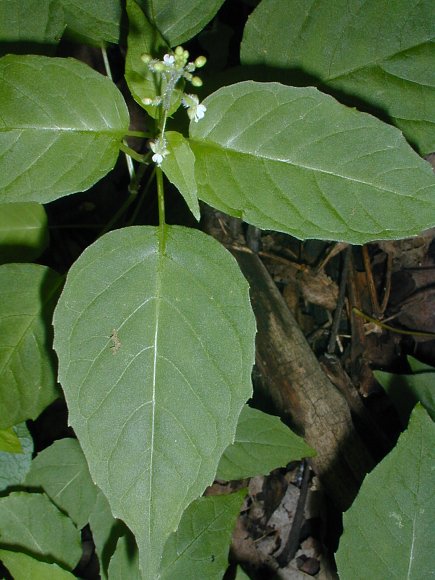 No recorded image of specimen.
No recorded image of specimen.Circaea lutetiana canadensis
Circaea lutetiana canadensis
The native Enchanter's Nightshade is an occasional to locally common plant that occurs in most counties of Illinois. This plant may be less abundant than in the past because of browsing by deer. Habitats include mesic deciduous woodlands, including oak woodlands and maple/basswood woodlands, and areas that are adjacent to woodland paths. Sometimes this species occurs in wooded upland areas and along ravine slopes.
Link No recorded image of specimen.
No recorded image of specimen.Indian Blanket
Indian Blanket Gaillardia pulchella
Gaillardia pulchella (firewheel, Indian blanket, Indian blanketflower, or sundance), is a short-lived perennial or annual flowering plant native to the Central United States.
Link No recorded image of specimen.
No recorded image of specimen.purple passionflower
purple passionflower Passiflora incarnata
Passiflora incarnata, commonly known as maypop, purple passionflower, true passionflower, wild apricot, and wild passion vine, is a fast growing perennial vine with climbing or trailing stems. A member of the passionflower genus Passiflora, the maypop has large, intricate flowers with prominent styles and stamens. One of the hardiest species of passionflower, it is a common wildflower in the southern United States. The Cherokee in the Tennessee area called it ocoee; the Ocoee River and valley...
Link No recorded image of specimen.
No recorded image of specimen.Yellow Passionflower
Yellow Passionflower Passiflora lutea
Passiflora lutea (yellow passionflower) is a flowering plant in the family Passifloraceae, native North America, in the eastern and south-central parts of the United States from Pennsylvania west to Kansas, and south to Florida and Texas. It is the northernmost species of Passiflora, occurring slightly further north than P. incarnata, and tolerant of winter temperatures down to −15 °C, and even −30 °C for short periods.
Link No recorded image of specimen.
No recorded image of specimen.painted trillium
painted trillium Trillium undulatum
Trillium undulatum (Painted Trillium) is a wildflower of the genus trillium found from Ontario in the north to the Carolinas in the south and from Michigan in the west to Nova Scotia in the east. It is also known as painted lady or trille ondulé. It demands strongly acidic, humus-rich soils and tends to be found in the shade of acid-loving trees such as eastern white pine, red maple, red spruce and balsam fir. Although the...
Link No recorded image of specimen.
No recorded image of specimen.showy orchid
showy orchid Galearis spectabilis
Galearis spectabilis (gay orchis, purple orchis, purple-hooded orchis, and showy orchis; syn. Galeorchis spectabilis (L.) Rydb., Orchis spectabilis L.) is an orchid species of the genus Galearis . It is native to North America, with a range covering the eastern regions of the United States and Canada, as well as the Great Plains.
Link No recorded image of specimen.
No recorded image of specimen.American water-willow
American water-willow Justicia americana
American Water-Willow (Justicia americana) is a herbaceous, aquatic flowering plant in the Acanthus family native to North America. It is the hardiest species in the genus Justicia, the other members of which being largely tropical and subtropical, and it is able to survive as far north as USDA zone 4. It is common throughout its range.
Link No recorded image of specimen.
No recorded image of specimen.False Solomon's Seal
False Solomon's Seal Maianthemum racemosum
Maianthemum racemosum (treacleberry, false Solomon's seal, Solomon's plume or false spikenard; syn. Smilacina racemosa, Vagnera racemosa) is a species of flowering plant native to North America.
Link No recorded image of specimen.
No recorded image of specimen.Dutchman's Breeches
Dutchman's Breeches Dicentra cucullaria
Dicentra cucullaria (Dutchman's breeches) is a perennial herbaceous plant, native to rich woods of eastern North America, with a disjunct population in the Columbia River Basin.
Link No recorded image of specimen.
No recorded image of specimen.Bloodroot
Bloodroot Sanguinaria canadensis
Sanguinaria canadensis, bloodroot, is a perennial, herbaceous flowering plant native to eastern North America. It is the only species in the genus Sanguinaria, included in the family Papaveraceae, and most closely related to Eomecon of eastern Asia.
Link No recorded image of specimen.
No recorded image of specimen.Common Pawpaw
Common Pawpaw Asimina triloba
Asimina triloba, the pawpaw, paw paw, paw-paw, or common pawpaw, is a species of Asimina (the pawpaw genus) in the same plant family (the Annonaceae) as the custard-apple, cherimoya, sweetsop, ylang-ylang and soursop. The pawpaw is native to the Eastern, Southern, and Midwestern United States and adjacent southernmost Ontario, Canada, from New York west to southeastern Nebraska, and south to northern Florida and eastern Texas. The pawpaw is a patch-forming (clonal) understory tree found in well-drained,...
Link No recorded image of specimen.
No recorded image of specimen.Wake-Robin
Wake-Robin Trillium erectum
Trillium erectum, also known as wake-robin, red trillium, purple trillium,Beth root, or stinking Benjamin, is a species of flowering plant native to the east and north-east of North America. It is a Spring ephemeral, an herbaceous perennial whose life-cycle is synchronised with that of the deciduous forests where it lives.
Link No recorded image of specimen.
No recorded image of specimen.Jack-in-the-pulpit
Jack-in-the-pulpit Arisaema triphyllum
Arisaema triphyllum (jack-in-the-pulpit, bog onion, brown dragon, Indian turnip, American wake robin, or wild turnip) is a herbaceous perennial plant growing from a corm. It is a highly variable species typically growing from 30–65 centimetres (12–26 in) in height with three parted leaves and flowers contained in a spadix that is covered by a hood. It is native to eastern North America, occurring in moist woodlands and thickets from Nova Scotia west to Minnesota, and south to...
Link No recorded image of specimen.
No recorded image of specimen.Virginia Creeper
Virginia Creeper Parthenocissus quinquefolia
Parthenocissus quinquefolia, known as Virginia creeper, five-leaved ivy, or five-finger, is a species of flowering plant in the vine family Vitaceae, native to eastern and central North America, in southeastern Canada, the eastern and central United States, eastern Mexico, and Guatemala, west as far as Manitoba, South Dakota, Utah and Texas.
Link No recorded image of specimen.
No recorded image of specimen.Black-jack
Black-jack Bidens pilosa
Bidens pilosa is a species of flowering plant in the aster family, Asteraceae. It is native to the Americas but it is known widely as an introduced species of other regions, including Asia and the Pacific Islands. Its many common names include beggar-ticks, cobbler's pegs, and Spanish needle.
Link No recorded image of specimen.
No recorded image of specimen.Gray Birch
Gray Birch Betula populifolia
Betula populifolia (Gray Birch) is a deciduous tree native to North America.
Link No recorded image of specimen.
No recorded image of specimen.black bugbane
black bugbane Cimicifuga racemosa
Actaea racemosa (black cohosh, black bugbane, black snakeroot, fairy candle; syn. Cimicifuga racemosa) is a species of flowering plant of the family Ranunculaceae. It is native to eastern North America from the extreme south of Ontario to central Georgia, and west to Missouri and Arkansas. It grows in a variety of woodland habitats, and is often found in small woodland openings. The roots and rhizomes have long been used medicinally by Native Americans. Extracts from these...
Link No recorded image of specimen.
No recorded image of specimen.red columbine
red columbine Aquilegia canadensis
Aquilegia canadensis (Canadian or Canada columbine, Eastern red columbine, Wild columbine) is an herbaceous perennial native to woodland and rocky slopes in eastern North America, prized for its red and yellow flowers. It readily hybridizes with other species in the genus Aquilegia.
Link No recorded image of specimen.
No recorded image of specimen.Pinkster Flower
Pinkster Flower Rhododendron periclymenoides
Rhododendron periclymenoides is a species of Rhododendron native to riparian and moist habitats, including swamps. It grows as a shrub and is a popular horticulture plant. Like many members of the genus, the plant contains toxins in all parts of the flower. The common name for the plant is pinxter flower. The flowers have showy pink petals and 2 inch long stamens; they do not carry a scen. The leaves of this shrub are bright green...
Link No recorded image of specimen.
No recorded image of specimen.Bald Cypress
Bald Cypress Taxodium distichum
Taxodium distichum (bald cypress, baldcypress, bald-cypress, cypress, southern-cypress, white-cypress, tidewater red-cypress, Gulf-cypress, red-cypress, or swamp cypress) is a deciduous conifer that grows on saturated and seasonally inundated soils of the Southeastern and Gulf Coastal Plains of the United States.
Link No recorded image of specimen.
No recorded image of specimen.American Sycamore
American Sycamore Platanus occidentalis
Platanus occidentalis, also known as American sycamore, American planetree, occidental plane, and buttonwood, is one of the species of Platanus native to North America. It is usually called sycamore in North America, a name which can refer to other types of tree in other parts of the world.
Link No recorded image of specimen.
No recorded image of specimen.American Sweetgum
American Sweetgum Liquidambar styraciflua
Liquidambar styraciflua, commonly called the American sweetgum, sweet-gum (sweet gum in the UK),alligator-wood,American-storax,bilsted,red-gum,satin-walnut, or star-leaved gum, is a deciduous tree in the genus Liquidambar native to warm temperate areas of eastern North America and tropical montane regions of Mexico and Central America. A popular ornamental tree in temperate climates, it is recognizable by the combination of its five-pointed star-shaped leaves and its hard, spiked fruits. It is currently classified in the plant family Altingiaceae, but was...
Link No recorded image of specimen.
No recorded image of specimen.Indian Pipe
Indian Pipe Monotropa uniflora
Monotropa uniflora, also known as the ghost plant, Indian pipe, or corpse plant is a herbaceous perennial plant, which was formerly classified in the family Monotropaceae, however, it has now been included within the Ericaceae. It is native to temperate regions of Asia, North America and northern South America, but with large gaps between areas. It is generally scarce or rare in occurrence.
Link No recorded image of specimen.
No recorded image of specimen.Spotted Coralroot
Spotted Coralroot Corallorhiza maculata
Corallorhiza maculata, or spotted coralroot, is a North American coralroot orchid flower. Varieties are also known as western coralroot and summer coralroot. It is found from Mexico and Baja California, through California and most of the United States except the Southeast, and across Canada. It grows mostly in montane woodlands.
Link No recorded image of specimen.
No recorded image of specimen.eastern redcedar
eastern redcedar Juniperus virginiana
Juniperus virginiana (Eastern Red-cedar,Red Cedar, Eastern Juniper, Red Juniper, Pencil Cedar) is a species of juniper native to eastern North America from southeastern Canada to the Gulf of Mexico and east of the Great Plains. Further west it is replaced by the related Juniperus scopulorum (Rocky Mountain Juniper) and to the southwest by Juniperus ashei (Ashe Juniper).
Link No recorded image of specimen.
No recorded image of specimen.Mountain Laurel
Mountain Laurel Kalmia latifolia
Kalmia latifolia, commonly called mountain-laurel,calico-bush, or spoonwood, is a species of flowering plant in the blueberry family, Ericaceae, that is native to the eastern United States. Its range stretches from southern Maine south to northern Florida, and west to Indiana and Louisiana. Mountain-laurel is the state flower of Connecticut and Pennsylvania. It is the namesake of the city of Laurel, Mississippi (founded 1882).
Link No recorded image of specimen.
No recorded image of specimen.shortleaf pine
shortleaf pine Pinus echinata
Pinus echinata (Shortleaf Pine) is a species of pine native to the eastern United States from southern New York south to northern Florida, west to the extreme southeast of Kansas, and southwest to eastern Texas. The tree is variable in form, sometimes straight, sometimes crooked, with an irregular crown. This tree reaches heights of 20–30 metres (66–98 ft) with a trunk diameter of 0.5–0.9 metre (1 ft 8 in–2 ft 10 in).
Link No recorded image of specimen.
No recorded image of specimen.Mayapple
Mayapple Podophyllum peltatum
Podophyllum peltatum, commonly called Mayapple, or May Apple, (or hogapple, Indian apple, mayflower, umbrella plant, wild lemon (flavor of the fruit), wild mandrake, American mandrake (shape of rhizomes) or "devil's apple" (used for Solanum linnaeanum elsewhere)), is a herbaceous perennial plant in the family Berberidaceae, native to deciduous forests in of eastern North America. Like many other spring ephemerals, it emerges from below ground before the canopy of the forest opens, and then slowly withers later...
Link No recorded image of specimen.
No recorded image of specimen.American Beech
American Beech Fagus grandifolia
Fagus grandifolia, commonly known as American Beech or North American beech, is a species of beech tree. This is Latin for: Fagus, Beech; grandi, great; folia, leaves. It is native to eastern North America, from Nova Scotia west to southern Ontario in southeastern Canada, west to Wisconsin and south to eastern Texas and northern Florida in the United States. Trees in the southern half of the range are sometimes distinguished as a variety, F. grandifolia var....
Link No recorded image of specimen.
No recorded image of specimen.American Beautyberry
American Beautyberry Callicarpa americana
Callicarpa americana (American beautyberry) is an open-habit, native shrub of the Southern United States which is often grown as an ornamental in gardens and yards. American beautyberries produce large clusters of purple berries, which birds and deer eat, thus distributing the seeds.
Link No recorded image of specimen.
No recorded image of specimen.American Chestnut
American Chestnut Castanea dentata
The American chestnut, Castanea dentata, is a large, monoecious deciduous tree of the beech family native to eastern North America. Before the species was devastated by the chestnut blight, a fungal disease, it was one of the most important forest trees throughout its range. There are now very few mature specimens of the tree within its historical range, although many small sprouts of the former live trees remain. However, there are hundreds of large (2 to...
Link No recorded image of specimen.
No recorded image of specimen.Black Oak
Black Oak Quercus velutina
Quercus velutina, the eastern black oak or more commonly known as simply black oak, is an oak in the red oak (Quercus sect. Lobatae) group of oaks. It is native to eastern North America from southern Ontario south to northern Florida and southern Maine west to northeastern Texas. It is a common tree in the Indiana Dunes and other sandy dunal ecosystems along the southern shores of Lake Michigan. Quercus velutina was previously known as yellow...
Link No recorded image of specimen.
No recorded image of specimen.northern red oak
northern red oak Quercus rubra
Quercus rubra, commonly called northern red oak or champion oak, (syn. Quercus borealis), is an oak in the red oak group (Quercus section Lobatae). It is a native of North America, in the northeastern United States and southeast Canada. It grows from the north end of the Great Lakes, east to Nova Scotia, south as far as Georgia and states with good soil that is slightly acidic. Often simply called "red oak", northern red oak is...
Link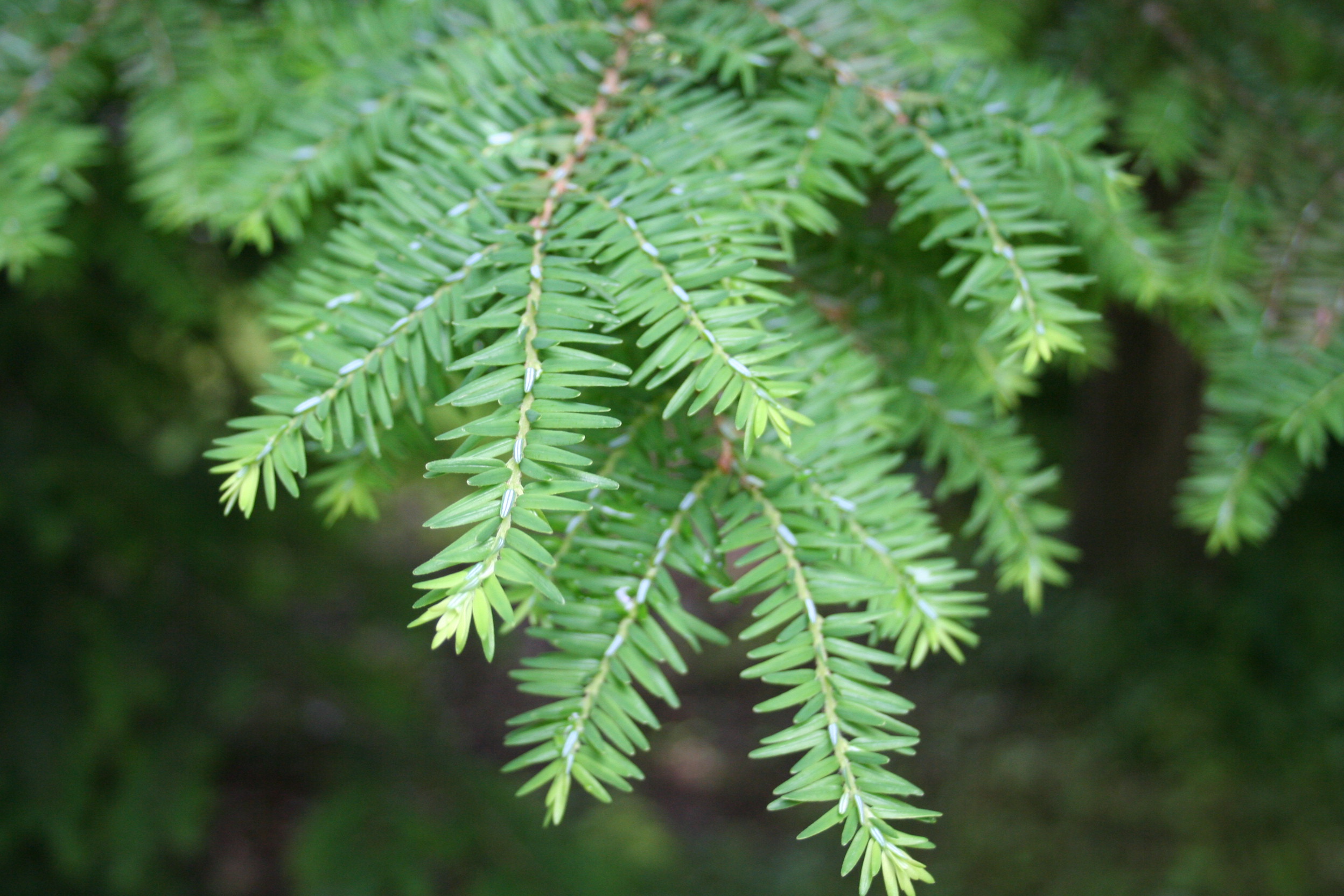 No recorded image of specimen.
No recorded image of specimen.Eastern Hemlock
Eastern Hemlock Tsuga canadensis
Tsuga canadensis, also known as eastern hemlock or Canadian hemlock, and in the French-speaking regions of Canada as Pruche du Canada, is a coniferous tree native to eastern North America. It is the state tree of Pennsylvania.
Link No recorded image of specimen.
No recorded image of specimen.pokeweed
pokeweed Phytolacca americana
American Pokeweed (Phytolacca americana) is a large semi-succulent herbaceous perennial plant growing up to 10 feet (3 metres) in height. It is native to eastern North America, the Midwest, and the Gulf Coast, with more scattered populations in the far West. It is also known as Virginia poke,American nightshade, cancer jalap, coakum, garget,inkberry, pigeon berry,pocan,pokeroot,pokeweed,pokeberry,redweed, scoke,red ink plant and chui xu shang lu (in Chinese medicine). Parts of this plant are highly toxic to livestock and humans,...
Link No recorded image of specimen.
No recorded image of specimen.hoary puccoon
hoary puccoon Lithospermum canescens
Lithospermum canescens is a species of flowering plant known by the common name Hoary Puccoon. It is endemic to eastern North America. The plant has golden yellow flowers which bloom from April to May.
Link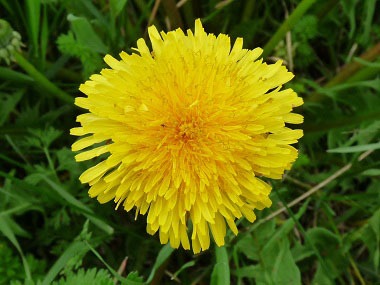 No recorded image of specimen.
No recorded image of specimen.common dandelion
common dandelion Taraxacum
The common dandelion grows in temperate regions of the world in areas with moist soils. It is most often considered a weed, especially in lawns and along roadsides, but the leaves, flowers, and roots are sometimes used in herbal medicine and as food.
Link No recorded image of specimen.
No recorded image of specimen.Eastern Redbud
Eastern Redbud Cercis canadensis
Cercis canadensis (eastern redbud) is a large deciduous shrub or small tree, native to eastern North America from Southern Ontario, Canada south to northern Florida but can thrive as far west as California.
Link No recorded image of specimen.
No recorded image of specimen.Maidenhair Fern
Maidenhair Fern Adiantum pedatum
Adiantum pedatum (northern maidenhair fern, five-fingered fern) is a species of fern in the family Pteridaceae, native to moist woodland in eastern North America.
Link No recorded image of specimen.
No recorded image of specimen.Cornflower
Cornflower Centaurea cyanus
Centaurea cyanus, commonly known as cornflower, bachelor's button, bluebottle, boutonniere flower, hurtsickle or cyani flower, is an annual flowering plant in the family Asteraceae, native to Europe. "Cornflower" is also used for chicory, and a few other Centaurea species; to distinguish C. cyanus from these it is sometimes called common cornflower. It may also be referred to as basketflower, though the term also refers to the Plectocephalus group of Centaurea, which is probably a distinct genus.
Link No recorded image of specimen.
No recorded image of specimen.Red Maple
Red Maple Acer rubrum
Acer rubrum (Red Maple, also known as Swamp, Water or Soft Maple), is one of the most common and widespread deciduous trees of eastern North America. The U.S. Forest service recognizes it as the most common variety of tree in America. The red maple ranges from the Lake of the Woods on the border between Ontario and Minnesota, east to Newfoundland, south to near Miami, Florida, and southwest to east Texas. Many of its features, especially...
Link No recorded image of specimen.
No recorded image of specimen.Striped Maple
Striped Maple Acer pensylvanicum
Acer pensylvanicum (striped maple, also known as moosewood and moose maple) is a species of maple native to northern and montane forests in eastern North America from southern Ontario east to Nova Scotia and south to Wisconsin, Ohio, and New Jersey, and also at higher elevations in the Appalachian Mountains south to northern Georgia.
Link No recorded image of specimen.
No recorded image of specimen.southern sugar maple
southern sugar maple Acer floridanum
Acer floridanum (syn. Acer saccharum subsp. floridanum (Chapm.) Desmarais, Acer barbatum auct. non Michx.), commonly known as the Florida maple and occasionally as the southern sugar maple or hammock maple, is a tree that occurs in mesic and usually calcareous woodlands of the Atlantic and Gulf coastal plain in the United States, from southeastern Virginia in the north, south to central Florida, and west to Oklahoma and Texas.
Link No recorded image of specimen.
No recorded image of specimen.Cardinal flower
Cardinal flower Lobelia cardinalis
Lobelia cardinalis (syn. L. fulgens, cardinal flower) is a species of Lobelia native to the Americas, from southeastern Canada south through the eastern and southwestern United States, Mexico and Central America to northern Colombia.
Link No recorded image of specimen.
No recorded image of specimen.Butterfly Milkweed
Butterfly Milkweed Asclepias tuberosa
Asclepias tuberosa is a species of milkweed native to eastern North America. It is a perennial plant growing to 0.3–1 metre (10 in–3 ft 3 in) tall, with clustered orange or yellow flowers from early summer to early fall. The leaves are spirally arranged, lanceolate, 5–12 cm long, and 2–3 cm broad.
Link No recorded image of specimen.
No recorded image of specimen.Broadleaf Milkweed
Broadleaf Milkweed Asclepias syriaca
Asclepias syriaca, commonly called common milkweed, butterfly flower, silkweed, silky swallow-wort, and Virginia silkweed, is a species of flowering plant. It is in the genus Asclepias, the milkweeds. This species is native to most of North America east of the Rocky Mountains, excluding the drier parts of the Prairies. It grows in sandy soils and sunny areas. It was one of the earliest North American species described in Cornut's 1635 work Canadensium Plantarum Historia. The specific...
Link No recorded image of specimen.
No recorded image of specimen.Prickly Pear
Prickly Pear Opuntia humifusa
Opuntia humifusa, commonly known as the Eastern Prickly Pear or Indian Fig, is a native cactus found in parts of eastern North America. It ranges from Montana eastward to parts of the southern Great Lakes, and in the dry coastal sand dunes along the eastern seaboard from Cape Cod, Massachusetts south to Florida and westward to New Mexico.
Link No recorded image of specimen.
No recorded image of specimen.Pale Touch-me-not
Pale Touch-me-not Impatiens pallida
Pale Jewelweed or Yellow Jewelweed (Impatiens pallida) is a flowering plant native to the United States. It grows in moist to wet soils, generally alongside the closely related Impatiens capensis, producing flowers from midsummer through fall. Along with other species of jewelweed or "touch-me-not", it is a traditional remedy for skin rashes, although controlled studies have not shown efficacy for this purpose.
Link No recorded image of specimen.
No recorded image of specimen.Spotted Touch-me-not
Spotted Touch-me-not Impatiens capensis
Impatiens capensis, the Orange Jewelweed, Common Jewelweed, Spotted Jewelweed, Spotted Touch-me-not, or Orange Balsam, is an annual plant native to North America. It is common in bottomland soils, ditches, and along creeks, often growing side-by-side with its less common relative, Yellow Jewelweed (I. pallida).
Link No recorded image of specimen.
No recorded image of specimen.Box Elder
Box Elder Acer negundo
Acer negundo is a species of maple native to North America. Box elder, boxelder maple, and maple ash are its most common names in the United States.
Link No recorded image of specimen.
No recorded image of specimen.field madder
field madder Sherardia arvensis
Sherardia is a monotypic genus containing a single species, Sherardia arvensis (or Field Madder), which is a flowering plant in the Rubiaceae family. It is native to Europe, northern Africa and southwest Asia. Sherardia arvensis is closely related to the bedstraws (genus Galium). It is mainly noted as a weed but has sometimes found use as a dye plant.
Link No recorded image of specimen.
No recorded image of specimen.Redstem Filaree
Redstem Filaree Erodium cicutarium
Erodium cicutarium, also known as redstem filaree, common stork's-bill or pinweed, is a herbaceous annual – or in warm climates, biennial – member of the family Geraniaceae of flowering plants. It is native to the Mediterranean Basin and was introduced to North America in the eighteenth century, where it has since become invasive, particularly of the deserts and arid grasslands of the southwestern United States.
Link No recorded image of specimen.
No recorded image of specimen.Common Dandelion
Common Dandelion Taraxacum officinale
Taraxacum officinale, the common dandelion (often simply called "dandelion"), is a flowering herbaceous perennial plant of the family Asteraceae (Compositae). It can be found growing in temperate regions of the world, in lawns, on roadsides, on disturbed banks and shores of water ways, and other areas with moist soils. T. officinale is considered a weed, especially in lawns and along roadsides, but it is sometimes used as a medical herb and in food preparation. Common dandelion...
Link No recorded image of specimen.
No recorded image of specimen.Pink Lady's Slipper
Pink Lady's Slipper Cypripedium acaule
Cypripedium acaule is a member of the orchid genus Cypripedium. Members of this genus are commonly referred to as lady's slipper orchids. First described in 1789 by Scottish botanist William Aiton, C. acaule is commonly referred to as the Pink Lady's Slipper,Stemless Lady's-slipper, or Moccasin Flower. The Pink Lady's Slipper is the provincial flower of Prince Edward Island, Canada.
Link No recorded image of specimen.
No recorded image of specimen.Mimosa
Mimosa Albizia julibrissin
Albizia julibrissin (Persian silk tree, pink silk tree) is a species of tree in the family Fabaceae, native to southwestern and eastern Asia.
Link No recorded image of specimen.
No recorded image of specimen.Common Bird's-foot-trefoil
Common Bird's-foot-trefoil Lotus corniculatus
Lotus corniculatus is a common flowering plant native to grassland temperate Eurasia and North Africa. The common name is Bird's-foot Trefoil (or similar, such as "birdsfoot trefoil"), though the common name is often also applied to other members of the genus. It is also known in cultivation in North America as Birdfoot Deervetch.
Link No recorded image of specimen.
No recorded image of specimen.Sedges
Sedges Cyperaceae
The Cyperaceae are a family of monocotyledonous graminoid flowering plants known as sedges, which superficially resemble grasses or rushes. The family is large, with some 5,500 species described in about 109 genera. These species are widely distributed, with the centers of diversity for the group occurring in tropical Asia and tropical South America. While sedges may be found growing in almost all environments, many are associated with wetlands, or with poor soils. Ecological communities dominated by...
Link No recorded image of specimen.
No recorded image of specimen.Queen Anne's Lace
Daucus carota
Daucus carota (common names include wild carrot, (UK) bird's nest, bishop's lace, and Queen Anne's lace (North America)) is a flowering plant in the family Apiaceae, native to temperate regions of Europe, southwest Asia and naturalised to North America and Australia. Domesticated carrots are cultivars of a subspecies, Daucus carota subsp. sativus.
Link No recorded image of specimen.
No recorded image of specimen.Chamaesyce nutans
Chamaesyce nutans
Spurges are summer annual weeds that flourish in warm weather, but in warmer climates, some can persist into late fall. Plants flower in summer and early fall then die, after frost. Flowers are greenish-white. Spurges are some of the most common warm-season weeds. Each exudes a milky sap when stems or leaves are broken.
Link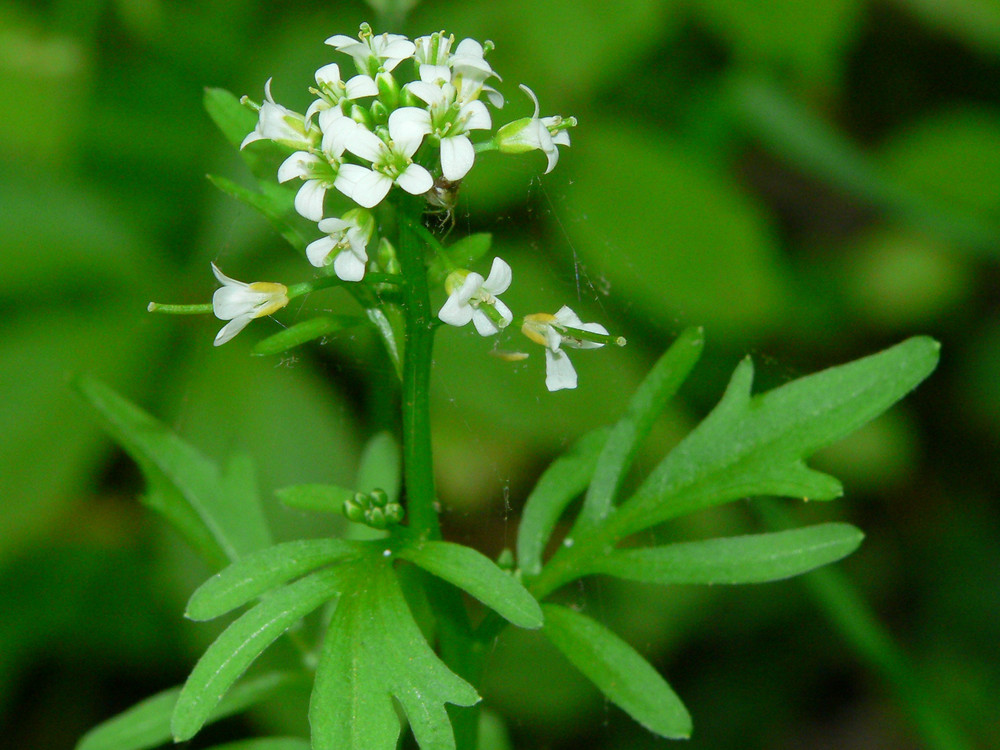 No recorded image of specimen.
No recorded image of specimen.Pennsylvania Bittercress
Cardamine pensylvanica
Cardamine pensylvanica is a species of Cardamine known by the common name Pennsylvania bittercress. It is native to most of Canada and the United States from coast to coast. It is generally found in moist to wet areas, such as the mud on riverbanks. It is a biennial herb producing one or more erect or leaning, branching stems which are purple to green in color and grow 10–70 cm (4–28 in) tall. The leaves are hairless and divided...
Link No recorded image of specimen.
No recorded image of specimen.American Trumpet Vine
Campsis radicans
Campsis radicans (trumpet vine or trumpet creeper, also known in North America as cow itch vine or hummingbird vine), is a species of flowering plant of the family Bignoniaceae, native to the southeastern United States. Growing to 10 m (33 ft), it is a vigorous, deciduous woody vine, notable for its showy trumpet-shaped flowers. It inhabits woodlands and riverbanks, and is also a popular garden subject.
Link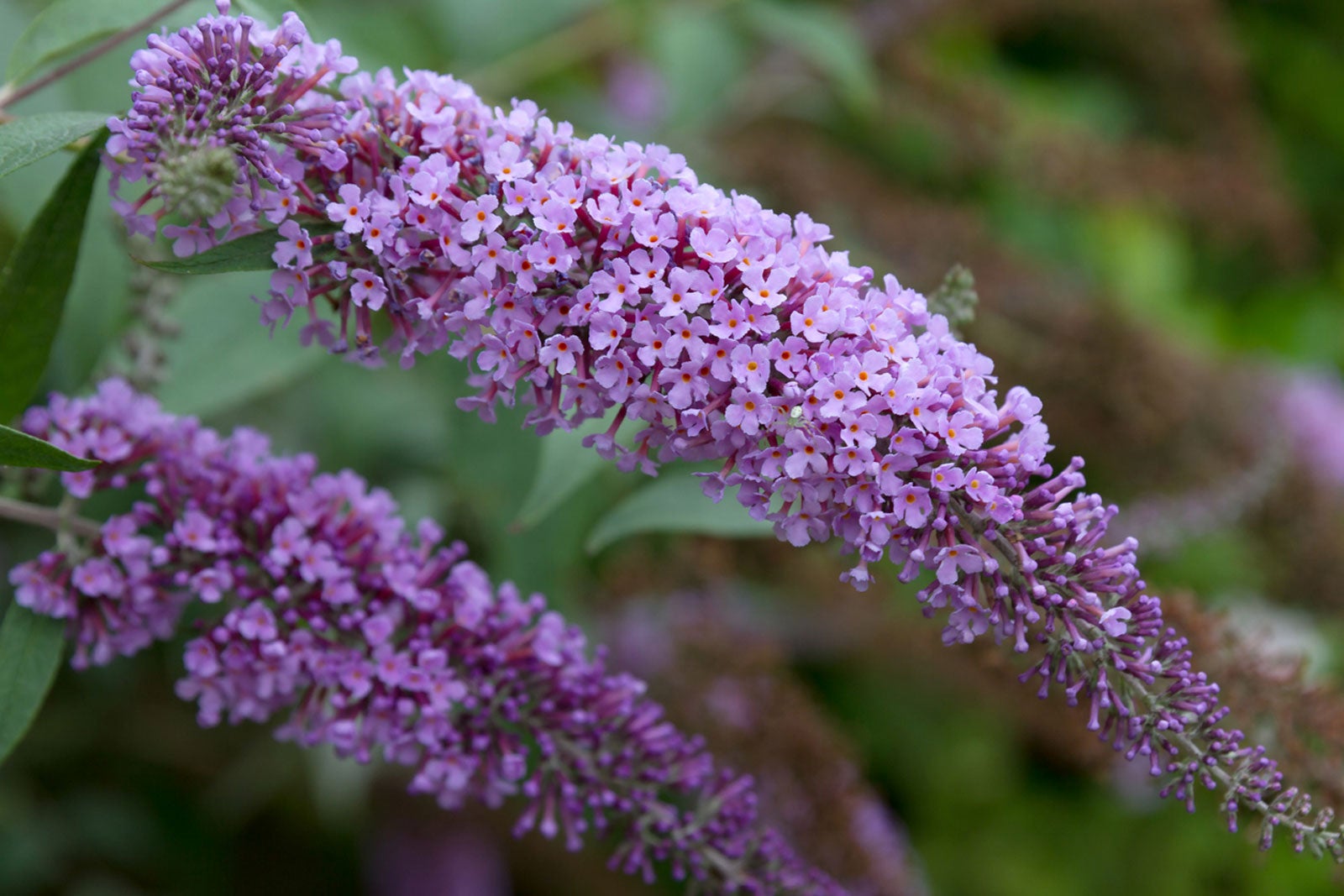 No recorded image of specimen.
No recorded image of specimen.Butterfly Bush
Buddleja davidii
Buddleja davidii (spelling variant Buddleia davidii), also called summer lilac, butterfly-bush, or orange eye, is a species of flowering plant in the family Scrophulariaceae, native to Sichuan and Hubei provinces in central China, and also Japan. It is widely used as an ornamental plant, and many named varieties are in cultivation. B. davidii, named for the Basque missionary and explorer in China, Father Armand David, who first noticed the shrub, was found near Ichang by Dr...
Link No recorded image of specimen.
No recorded image of specimen.Rattlesnake Fern
Botrypus virginianus
Botrypus virginianus, sometimes called rattlesnake fern, is a low-growing herb in the Ophioglossales, commonly a foot high or smaller. The plant is ternately branched and the leaves feel soft. The stem is bicolor, being pinkish or light tan at the base but greenish nearer the branches or leaves.
Link No recorded image of specimen.
No recorded image of specimen.Herb-of-Grace
Bacopa monnieri
Bacopa monnieri (waterhyssop, brahmi, thyme-leafed gratiola, water hyssop) is a perennial, creeping herb whose habitat includes wetlands and muddy shores. Brahmi is also the name given to Centella asiatica, particularly in North India, and Kerala where it is also identified in Malayalam as muttil (മുത്തിള്) or kodakan. This identification of brāhmī as C. asiatica has been in use for long in northern India, as Hēmādri's Commentary on Aṣṭāṅgahṛdayaṃ (Āyuṛvēdarasāyanaṃ) treats maṇḍūkapaṛṇī (C. asiatica) as a synonym of brahmi,...
Link No recorded image of specimen.
No recorded image of specimen.maidenhair spleenwort
Asplenium trichomanes
Asplenium trichomanes (commonly known as maidenhair spleenwort) is a small fern in the spleenwort genus Asplenium. It is a widespread and common species, occurring almost worldwide in a variety of rocky habitats. It is a variable fern with several subspecies.
Link No recorded image of specimen.
No recorded image of specimen.sweet vernal grass
Anthoxanthum odoratum
Anthoxanthum odoratum, known as sweet vernal grass, holy grass, vanilla grass or buffalo grass, is a short-lived grass found wild in acidic grasslands in Eurasia. It is also grown as a lawn grass and a house plant, due to its sweet scent, and can also be found on unimproved pastures and meadows. Odoratum is Latin for "smell as well".
Link No recorded image of specimen.
No recorded image of specimen.round-lobed hepatica
Anemone americana
Hepatica nobilis is a herbaceous perennial in the buttercup family (Ranunculaceae).
Link No recorded image of specimen.
No recorded image of specimen.Laurel Oak
Quercus laurifolia
Quercus laurifolia (Swamp laurel oak, Diamond-leaf oak, Water oak, Obtusa oak, Laurel oak) is a medium sized deciduous or semi-evergreen oak in the red oak section Quercus sect. Lobatae. It is native to the southeast of the United States, from coastal Virginia to central Florida and west to southeast Texas.
Link No recorded image of specimen.
No recorded image of specimen.lirio
Sagittaria lancifolia
Sagittaria lancifolia is a perennial, monocot plant in the family Alismataceae, genus Sagittaria, with herbaceous growth patterns. It is native to the southeastern United States and westward through Texas. It is also known as "duck potato" because of the large potato-like corms which can form underground.
Link No recorded image of specimen.
No recorded image of specimen.SAGGRA
Sagittaria graminea
Native to freshwater shorelines and shallow water in eastern North America, grass-leaved arrowhead is a popular ornamental aquatic plant, and as such has been introduced outside its range, both within and outside North America. In some cases it has become invasive. Several parts of the plant are edible, but it is not as widely used for food as northern arrowhead (Sagittaria cuneata) or common arrowhead (S. latifolia).
Link No recorded image of specimen.
No recorded image of specimen.azure bluet
Houstonia caerulea
Houstonia caerulea (azure bluet or Quaker ladies) is a perennial species in the Rubiaceae family.
Link No recorded image of specimen.
No recorded image of specimen.deer-tongue witchgrass
Panicum clandestinum
Deer-tongue Witchgrass is a native ornamental grass found in shady moist woodland areas, in moist sandy soil, in ditches, and along roadsides. The winter rosettes of this plant make for a good evergreen groundcover.
Link No recorded image of specimen.
No recorded image of specimen.Yellow Fairybells
Prosartes lanuginosa
Prosartes lanuginosa (formerly Disporum lanuginosum) is a member of the lily family with the common name Yellow Mandarin or Fairybells.
Link No recorded image of specimen.
No recorded image of specimen.Appalachian groundsel
Packera anonyma
Packera anonyma is a species of the genus Packera and family Asteraceae.
Link No recorded image of specimen.
No recorded image of specimen.deerberry
Vaccinium stamineum
Vaccinium stamineum, commonly known as deerberry, tall deerberry, squaw huckleberry, highbush huckleberry, buckberry, and southern gooseberry, is a species of flowering plant in the heath family, Ericaceae. It is native to North America, including Ontario, the eastern United States, and parts of Mexico. It is most common in the southeastern United States.
Link No recorded image of specimen.
No recorded image of specimen.wild comfrey
Cynoglossum virginianum
Cynoglossum virginianum, also known as the wild comfrey, is a plant native to United States. It is also sometimes called the blue houndstongue. It gets its name from the appearance of its leaves that look like the a dog's tongue, which translates to Cynoglossum in Greek.
Link No recorded image of specimen.
No recorded image of specimen.Carolina spring-beauty
Claytonia caroliniana
Claytonia caroliniana, the Carolina springbeauty, is an herbaceous perennial in the family Portulacaceae. Its native range is Eastern North America.
Link No recorded image of specimen.
No recorded image of specimen.Autumn Olive
Elaeagnus umbellata
Elaeagnus umbellata, is known as Japanese silverberry,umbellata oleaster,autumn-olive,autumn elaeagnus, or spreading oleaster. The species is indigenous to eastern Asia and ranges from the Himalayas eastwards to Japan. Because it fixes atmospheric nitrogen in its roots, it often grows vigorously and competitively in infertile soils.
Link No recorded image of specimen.
No recorded image of specimen.Wood sage
Teucrium canadense
Also known as Canadian germander, Wood sage is found in floodplains, moist thickets and meadows, marshes and swamps throughout most of Florida. It flowers spring through fall, but may bloom year-round. The flowers attract a variety of native long-tongued insects that use the flower’s lower lip as a landing pad. Birds find the plant’s seeds appealing.
Link No recorded image of specimen.
No recorded image of specimen.shining sumac
Rhus copallina
Rhus copallina (orth. var. Rhus copallinum), Shining Sumac, Dwarf Sumac, Flameleaf Sumac or Winged Sumac, is a species of flowering plant in the cashew family (Anacardiaceae) that is native to eastern North America. It is a deciduous tree growing to 3.5–5.5 metres (11–18 ft) tall and an equal spread with a rounded crown. A 5-year-old sapling will stand about 2.5 metres (8.2 ft).
Link No recorded image of specimen.
No recorded image of specimen.Deptford pink
Dianthus armeria
Dianthus armeria (Deptford Pink or Grass Pink) is a species of Dianthus ("pink") native to most of Europe, from Portugal north to southern Scotland and southern Finland, and east to Ukraine and the Caucasus. It is also found in North America.
Link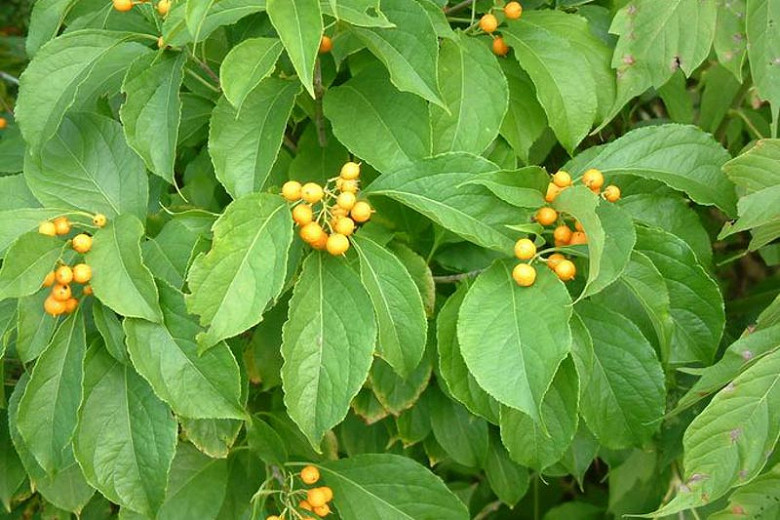 No recorded image of specimen.
No recorded image of specimen.American Bittersweet
Celastrus scandens
Celastrus scandens, commonly called American Bittersweet or Bittersweet, is a species of Celastrus that blooms mostly in June and is commonly found on rich, well-drained soils of woodlands. It has a sturdy perennial vine that may have twining, woody stems that are 30 feet (9.1 m) or longer and an inch or more thick at the base. The stems are yellowish-green to brown and wind around other vegetation, sometimes killing saplings by restricting further growth. It has...
Link No recorded image of specimen.
No recorded image of specimen.Gingko
Ginkgo biloba
Ginkgo (Ginkgo biloba; in Chinese and Japanese 銀杏, pinyin romanization: yín xìng, Hepburn romanization: ichō or ginnan), also spelled gingko and also known as the maidenhair tree, is a unique species of tree with no close living relatives. The ginkgo is a living fossil, recognisably similar to fossils dating back 270 million years. Native to China, the tree is widely cultivated and was introduced early to human history. It has various uses in traditional medicine and as...
Link No recorded image of specimen.
No recorded image of specimen.Clasping Venus's Looking Glass
Triodanis perfoliata
Triodanis perfoliata, the Clasping Venus's Looking Glass, is an annual herb native to North America. It is a flowering plant belonging to the family Campanulaceae.
Link No recorded image of specimen.
No recorded image of specimen.Lyre-leaf sage
Salvia lyrata
Salvia lyrata (lyre-leaf sage, lyreleaf sage, wild sage, cancerweed), is a herbaceous perennial in the family Lamiaceae that is native to the United States, from Connecticut west to Missouri, and in the south from Florida east to Texas. It was described and named by Carolus Linnaeus in 1753.
Link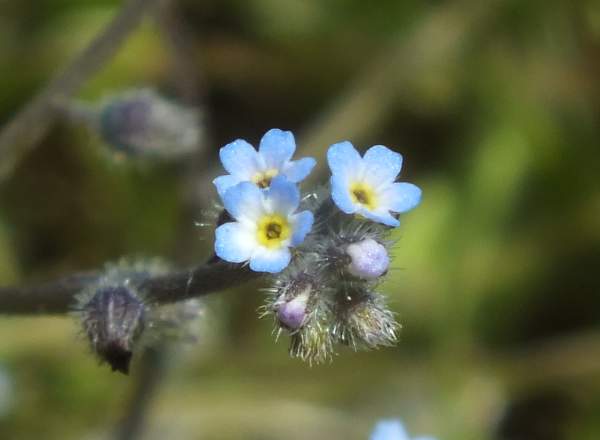 No recorded image of specimen.
No recorded image of specimen.early forget-me-not
Myosotis verna
Early Forget-me-not is an annual with fibrous roots and simple or branched stems that are up to 2 dm high. The alternate leaves are 1-5 cm long and narrowly oblong with short petioles below, though they are broader and sessile above. Foliage is covered with stiff hairs. Tiny, white, short-stalked flowers are borne on terminal, coiled stems that unwind and elongate as flowering progresses from the base upward.
Link No recorded image of specimen.
No recorded image of specimen.black maidenhair fern
Adiantum capillus-veneris
Adiantum capillus-veneris, the Southern maidenhair fern, black maidenhair fern, and venus hair fern, is a species of ferns in the genus Adiantum with a subcosmopolitan worldwide distribution. It is cultivated as a popular garden fern and houseplant.
Link No recorded image of specimen.
No recorded image of specimen.Cranberry
Vaccinium macrocarpon
Vaccinium macrocarpon (also called Large cranberry, American Cranberry and Bearberry) is a cranberry of the subgenus Oxycoccus and genus Vaccinium. It is native to North America (eastern Canada, and eastern United States, south to North Carolina at high altitudes).
Link No recorded image of specimen.
No recorded image of specimen.hobble
Viburnum lantanoides
Viburnum lantanoides (also called Hobblebush, Witch-hobble, and Moosewood) is a perennial shrub of the family Adoxaceae growing 2–4 meters (6–12 ft) high with pendulous branches that take root where they touch the ground. These rooted branches form obstacles which easily trip (or hobble) walkers – hence the common name.
Link No recorded image of specimen.
No recorded image of specimen.hay-scented fern
Dennstaedtia punctilobula
Dennstaedtia punctilobula (Hay-scented Fern) is a species of fern native to eastern North America, from Newfoundland west to Wisconsin and Arkansas, and south in the Appalachian Mountains to northern Alabama; it is most abundant in the east of its range, with only scattered populations in the west.
Link No recorded image of specimen.
No recorded image of specimen.white baneberry
Actaea pachypoda
Actaea pachypoda (doll's-eyes, white baneberry) is a species of flowering plant in the genus Actaea, of the family Ranunculaceae, native to eastern North America.
Link No recorded image of specimen.
No recorded image of specimen.maple-leaf viburnum
Viburnum acerifolium
Viburnum acerifolium (Maple-leaf Viburnum or Dockmackie) is a species of Viburnum, native to eastern North America from southwestern Quebec and Ontario south to northern Florida and eastern Texas.
Link No recorded image of specimen.
No recorded image of specimen.curlyheads
Clematis ochroleuca
Clematis ochroleuca is a species of flowering plants in the Ranunculaceae (buttercup) family known by the common names curlyheads and erect silky leather-flower. It is native to North America with a distribution on the east coast of the United States from Long Island to northern Georgia.
Link No recorded image of specimen.
No recorded image of specimen. No recorded image of specimen.
No recorded image of specimen.kudzu vine
Pueraria lobata
Kudzu (/ˈkʊdzuː/, also called Japanese arrowroot,) is a group of plants in the genus Pueraria, in the pea family Fabaceae, subfamily Faboideae. They are climbing, coiling, and trailing vines native to much of eastern Asia, southeast Asia, and some Pacific Islands. The name comes from the Japanese name for the plants, kuzu (クズ or 葛?), which was written "kudzu" in historical romanizations. Where these plants are naturalized, they can be invasive, and are considered noxious weeds....
Link No recorded image of specimen.
No recorded image of specimen.spearmint
Mentha spicata
Mentha spicata (spearmint or spear mint) is a species of mint native to much of Europe and southwest Asia, though its exact natural range is uncertain due to extensive early cultivation.
Link No recorded image of specimen.
No recorded image of specimen.Dwarf St. John's Wort
Hypericum mutilum
Hypericum mutilum is a species of St. John's wort known by the common name dwarf St. John's wort. It is native to parts of North America, and is present in other parts as an introduced species. It is an annual or perennial herb taking a multibranched erect form up to about 60 centimeters tall. The oval green leaves are one or two centimeters long and are covered in tiny glands. The inflorescence is a compound cyme...
Link No recorded image of specimen.
No recorded image of specimen.downy rattlesnake plantain
Goodyera pubescens
Goodyera pubescens, the Rattlesnake Plantain, is one of the most common orchids native to eastern North America. It is an evergreen terrestrial species with variegated leaves. The variegation is in the form of a densely-reticulated network of veins that are a much lighter green than the rest of the leaf tissue. It is a creeping plant that divides on the ground surface and sends out short stolons. It may be terrestrial or, occasionally, epipetric, growing on...
Link No recorded image of specimen.
No recorded image of specimen.monkeyflower
Mimulus ringens
Mimulus ringens is a species of monkeyflower known by the common names Allegheny monkeyflower and square-stemmed monkeyflower.
Link No recorded image of specimen.
No recorded image of specimen.Eastern Teaberry
Gaultheria procumbens
Gaultheria procumbens (eastern teaberry, checkerberry, boxberry, or American wintergreen) is a species of Gaultheria native to northeastern North America from Newfoundland west to southeastern Manitoba, and south to Alabama. It is a member of the Ericaceae (heath family).
Link No recorded image of specimen.
No recorded image of specimen.narrowleaf cow wheat
Melampyrum lineare
Melampyrum lineare or narrowleaf cow wheat is a hemiparasitic plant native to North America, especially southern Canada through the eastern United States. Leaves have two forms. Lower on the plant leaves are linear. Below the flowers, leaves have two pointed lobes behind the usual linear structure. Leaves are opposite. Stems appear dark olive green and slender. Cow wheat is low ground cover and does not get taller than a foot. This plant is common to Jack...
Link No recorded image of specimen.
No recorded image of specimen.Harebell
Campanula rotundifolia
Campanula rotundifolia (harebell) is a rhizomatous perennial flowering plant in the bellflower family native to temperate regions of the Northern Hemisphere.
Link No recorded image of specimen.
No recorded image of specimen.small whorled pogonia
Isotria medeoloides
Isotria medeoloides (small whorled pogonia or little five leaves) is a terrestrial orchid found in temperate Eastern North America. Its range is from southern Maine south to Georgia and west to southern Ontario, Michigan, and Tennessee. A population was found in Missouri in 1897, but the plant is no longer believed extant there. It has always been considered a rare species, often legendarily so. It has been called "the rarest orchid east of the Mississippi.
Link No recorded image of specimen.
No recorded image of specimen.Sulphur Cinquefoil
Potentilla recta
Potentilla recta (Sulphur Cinquefoil or Rough-fruited Cinquefoil) is a species of cinquefoil. It is native to Eurasia but it is present in North America as an introduced species, ranging through almost the entire continent except the northernmost part of Canada and Alaska.
Link No recorded image of specimen.
No recorded image of specimen.Southern Red Oak
Quercus falcata
Quercus falcata, commonly known as the Southern Red Oak or Spanish Oak, is a tree in the red oak section (Lobatae) of the genus Quercus native to the southeastern United States.
Link No recorded image of specimen.
No recorded image of specimen.rosebud orchid
Cleistes divaricata
Cleistes divaricata (rosebud orchid) is a terrestrial orchid found in the southeastern United States. Its range is from southern New Jersey south to Florida. It blooms from May to July.
Link No recorded image of specimen.
No recorded image of specimen.Winterberry Holly
Ilex verticillata
Ilex verticillata, the winterberry, is a species of holly native to eastern North America in the United States and southeast Canada, from Newfoundland west to Ontario and Minnesota, and south to Alabama.
Link No recorded image of specimen.
No recorded image of specimen.Broad-leaved Everlasting-pea
Lathyrus latifolius
Lathyrus latifolius, the perennial peavine, perennial pea, or everlasting sweet pea, is a flowering plant of the genus Lathyrus in the legume family Fabaceae. It is native to Europe but is present on other continents, such as North America and Australia, where it is an introduced species.
Link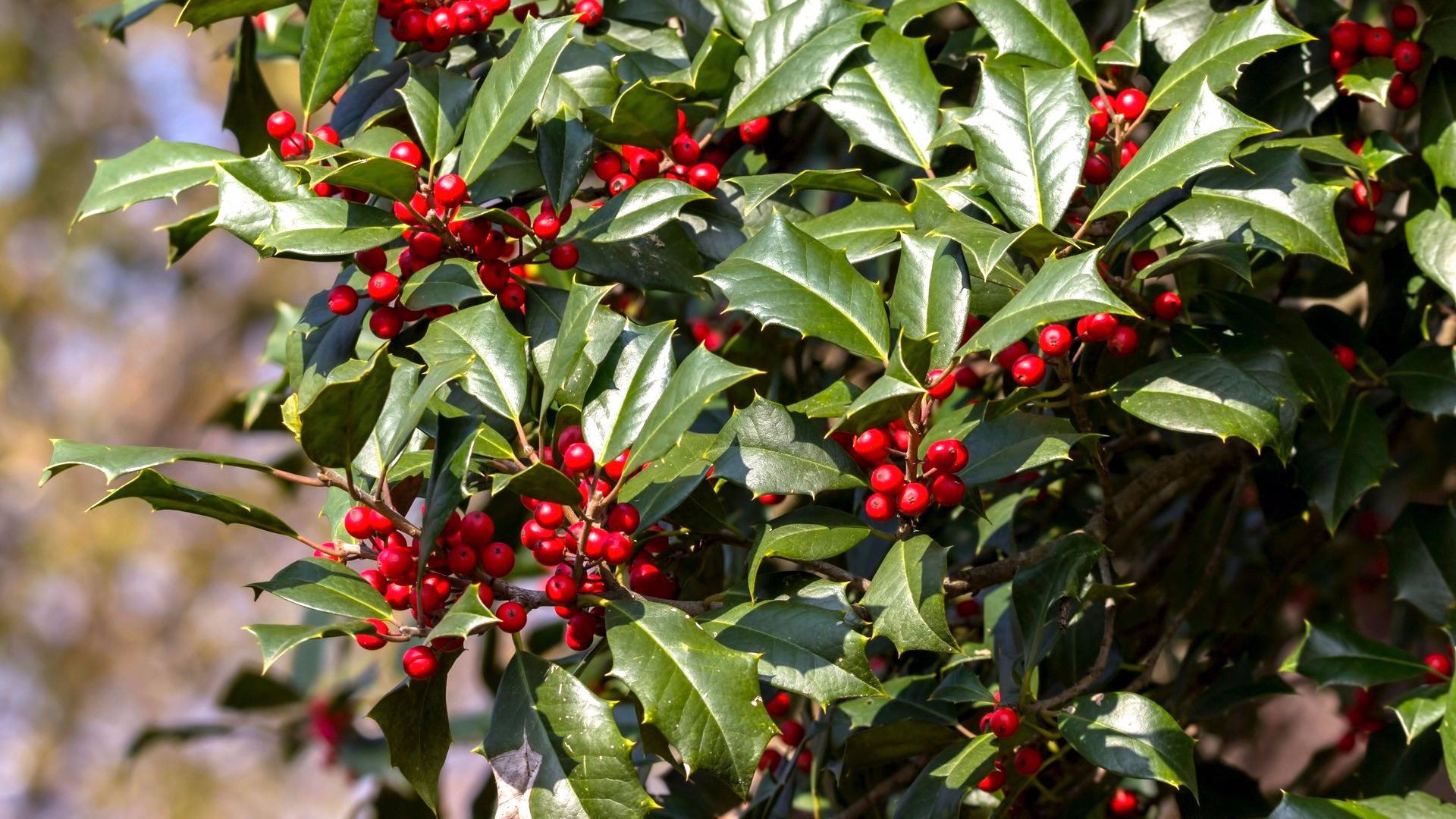 No recorded image of specimen.
No recorded image of specimen.American Holly
Ilex opaca
Ilex opaca, the American Holly, is a species of holly, native to the eastern United States, from coastal Massachusetts south to central Florida, and west to southeastern Missouri and eastern Texas.
Link No recorded image of specimen.
No recorded image of specimen.common greenbriar
Smilax rotundifolia
Smilax rotundifolia, known as common greenbrier, is a woody vine native to the Eastern United States. The leaves are glossy green, petioled, alternate, and circular to heart-shaped. They are generally 5–13 cm long. Common greenbriar climbs other plants using green tendrils growing out of the petioles.
Link No recorded image of specimen.
No recorded image of specimen.lizard's tail
Saururus cernuus
Saururus cernuus (lizard's tail, water-dragon, swamp root) is a medicinal and ornamental plant native to eastern North America. It grows in wet areas or shallow water, and can be up to about a meter tall. The native range covers much of the eastern United States, as far west as eastern Texas and Kansas, south to Florida, and north to Michigan and New York state, slightly into Ontario.
Link No recorded image of specimen.
No recorded image of specimen.Cutleaf Toothwort
Cardamine concatenata
The Cutleaf Toothwort, Crow's Toes, Pepper Root, Purple-flowered Toothwort (Cardamine concatenata) is a flowering plant in Brassicaceae. It owes its name to the tooth-like appearance of its rhizome. It is a perennial plant woodland wildflower native to eastern North America. It is considered a spring ephemeral and blooms in March, April, and/or May.
Link No recorded image of specimen.
No recorded image of specimen.barnyardgrass
Echinochloa crus-galli
Echinochloa crus-galli is a type of wild grass originating from tropical Asia that was formerly classified as a type of panicum grass. It is commonly known as cockspur (or cockspur grass), barnyard millet, Japanese millet, water grass, common barnyard grass, or simply "barnyard grass" (which may refer to any species of Echinochloa or the genus as a whole however). This plant can grow to 60" (1.5 m) in height and has long, flat leaves which are...
Link No recorded image of specimen.
No recorded image of specimen.Velvetleaf
Abutilon theophrasti
Abutilon theophrasti (Velvetleaf, China Jute, Buttonweed, Butterprint, Pie-marker, samuel eu bine or Indian Mallow) is an annual plant in the family Malvaceae, native to southern Asia.
Link No recorded image of specimen.
No recorded image of specimen.Yellow Bird's-Nest
Monotropa hypopitys
Monotropa hypopitys, also known as Dutchman's pipe, yellow bird's-nest or pinesap, is a herbaceous perennial plant, formerly classified in the families Monotropaceae or Pyrolaceae, but now included within the subfamily Monotropoideae of the blueberry family (Ericaceae). It is native to temperate regions of the Northern Hemisphere, and is scarce or rare in many areas. However, it is still the most widespread member of the subfamily. While currently included in the genus Monotropa, recent genetic evidence strongly...
Link No recorded image of specimen.
No recorded image of specimen.American Cancer-root
Conopholis americana
Conopholis americana, American cancer-root or squawroot or bear corn, is a perennial, non-photosynthesizing (or "achlorophyllous") parasitic plant, from the family Orobanchaceae and more recently from the genus Conopholis but also listed as Orobanche, native but not endemic to North America and when blooming, resembles a pine cone or cob of corn growing from the roots of mostly oak and beech trees.
Link No recorded image of specimen.
No recorded image of specimen.frog fruit
Phyla lanceolata
Phyla lanceolata is a species of flowering plant in the verbena family known by the common name lanceleaf fogfruit or frogfruit. It is native to the southern half of North America, including much of the United States except for the northwestern quadrant, and much of Mexico. It is resident in many types of moist and wet habitat, including disturbed areas, such as irrigation ditches. It is a perennial herb growing decumbent in a matlike form with...
Link No recorded image of specimen.
No recorded image of specimen.Frog fruit
Phyla nodiflora
Phyla nodiflora (frog fruit, sawtooth fogfruit, turkey tangle), is an ornamental plant in the Verbenaceae family, and is native to South America and the United States. It can be found in tropical areas around the globe, a naturalized species in many places. This plant is cited in Flora Brasiliensis by Carl Friedrich Philipp von Martius. It is often grown as groundcover, and is sometimes present in yards as a lawn weed.
Link No recorded image of specimen.
No recorded image of specimen.Great Mullein
Verbascum thapsus
Verbascum thapsus (great mullein or common mullein) is a species of mullein native to Europe, northern Africa and Asia, and introduced in the Americas and Australia.
Link No recorded image of specimen.
No recorded image of specimen.Carolina Cranesbill
Geranium carolinianum
Geranium carolinianum is a species of geranium known by the common name Carolina cranesbill, or Carolina geranium. It is native to North America, where it is widespread and grows in many types of habitat. This is an annual herb reaching just over half a meter in maximum height. It has erect stems covered in spiky hairs. The palmate leaves are several centimeters wide and divided into usually five segments which are each subdivided into elegantly pointed...
Link No recorded image of specimen.
No recorded image of specimen.Indian hemp
Apocynum cannabinum
Apocynum cannabinum (Dogbane, Amy Root, Hemp Dogbane, Indian Hemp, Rheumatism Root, or Wild Cotton) is a perennial herbaceous plant that grows throughout much of North America - in the southern half of Canada and throughout the United States. It is a poisonous plant: Apocynum means "poisonous to dogs". All parts of the plant are poisonous and can cause cardiac arrest if ingested. The cannabinum in the scientific name and the common names Hemp Dogbane and Indian...
Link No recorded image of specimen.
No recorded image of specimen.skunk bush
Rhus aromatica
Rhus aromatica (also known as Fragrant Sumac) is a plant species in the family Anacardiaceae native to Canada and the United States.
Link No recorded image of specimen.
No recorded image of specimen.Poison Ivy
Toxicodendron radicans
Toxicodendron radicans, commonly known as poison ivy (older synonyms are Rhus toxicodendron and Rhus radicans), is a poisonous North American and Asian plant that is well known for its production of urushiol, a clear liquid compound found within the sap of the plant that causes an itching, irritation and sometimes painful rash in most people who touch it. The plant is not a true ivy (Hedera).
Link No recorded image of specimen.
No recorded image of specimen.common juniper
Juniperus communis
Juniperus communis, the common juniper, is a species in the genus Juniperus, in the family Cupressaceae. It has the largest range of any woody plant, throughout the cool temperate Northern Hemisphere from the Arctic south in mountains to around 30°N latitude in North America, Europe and Asia.
Link No recorded image of specimen.
No recorded image of specimen.Pink-sorrel
Oxalis articulata
Oxalis articulata, the pink-sorrel, is a plant species in the genus Oxalis native from South America. It has been introduced in Europe in gardens and is now naturalized in these areas.
Link No recorded image of specimen.
No recorded image of specimen.Johnny-jump-up
Viola bicolor
Viola bicolor, commonly known as the American field pansy or wild pansy, is an annual plant in the violet family found throughout much of North America. There is some debate as to whether the plant is native to North America or if it was introduced from the Old World as a variety of Viola kitaibeliana, but it is now generally thought to have originated in the New World. It is common in disturbed habitats, but is...
Link No recorded image of specimen.
No recorded image of specimen.fire pink
Silene virginica
Fire pink (Silene virginica) is a wildflower in the pink family, Caryophyllaceae. It is known for its distinct brilliant red flowers. Each flower is approximately five centimeters in diameter and composed of five notched, brilliant red petals which extend into a long tube. It is a small (20-80 cm tall), short-lived perennial (2-3 years), with lance shaped leaves. Its stems, and the bases of the flowers, are covered in short sticky hairs. Fire Pink begins blooming...
Link No recorded image of specimen.
No recorded image of specimen.Tree of Heaven
Ailanthus altissima
Ailanthus altissima /eɪˈlænθəs ælˈtɪsɨmə/, commonly known as tree of heaven, ailanthus, or in Standard Chinese as chouchun (Chinese: 臭椿; pinyin: chòuchūn; literally "foul smelling tree"), is a deciduous tree in the Simaroubaceae family. It is native to both northeast and central China and Taiwan. Unlike other members of the genus Ailanthus, it is found in temperate climates rather than the tropics. The tree grows rapidly and is capable of reaching heights of 15 metres (49 ft) in...
Link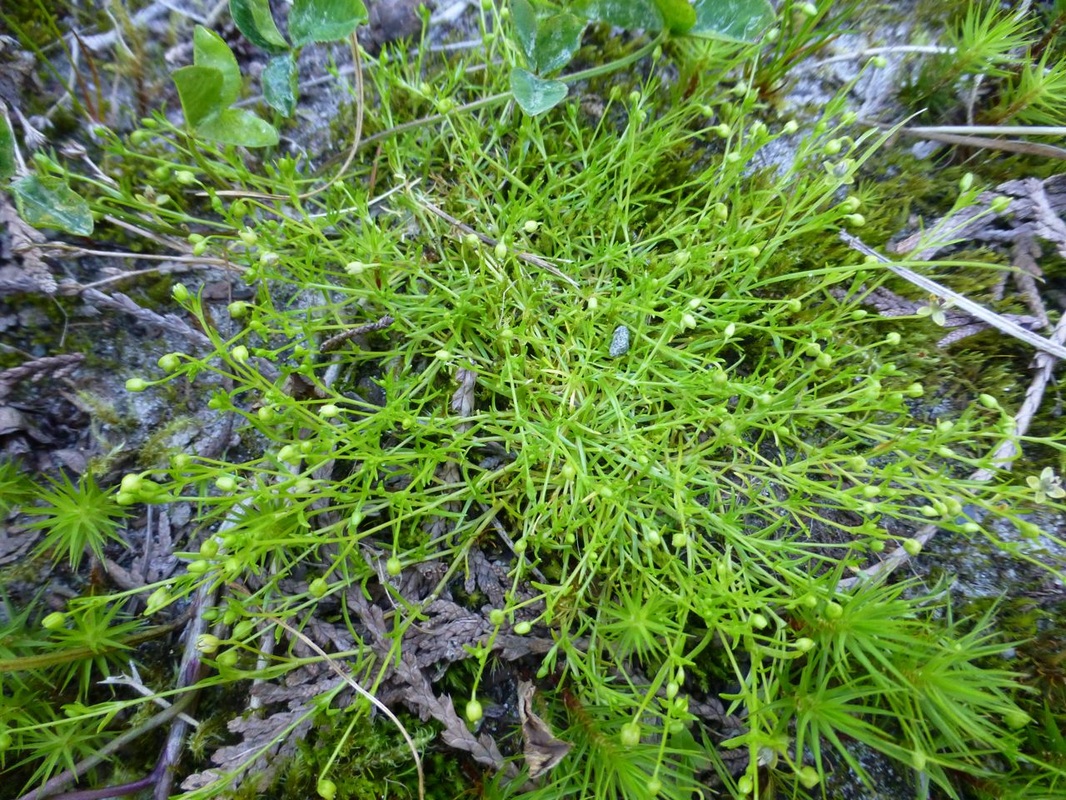 No recorded image of specimen.
No recorded image of specimen.beach pearlwort
Sagina decumbens
Sagina decumbens is a species of flowering plant in the pink family known by the common names trailing pearlwort and western pearlwort. It is native to several areas of North America, where it can be found in many types of habitat. It is a small annual herb producing a threadlike green or purplish stem growing erect or trailing, measuring up to about 16 centimeters long. The leaves are hairless, linear in shape, and one half to...
Link No recorded image of specimen.
No recorded image of specimen.great scented liverwort
Conocephalum conicum
Conocephalum conicum, the snakeskin liverwort, is a liverwort species in the genus Conocephalum .
Link No recorded image of specimen.
No recorded image of specimen.Canadian wild ginger
Asarum canadense
Asarum canadense, commonly known as Canada wild ginger, Canadian snakeroot and broad-leaved asarabaccais, is a herbaceous perennial native to deciduous forest in eastern North America, from the Great Plains east to the Atlantic Coast, and from southeastern Canada south to approximately the fall line in the southeastern United States.
Link No recorded image of specimen.
No recorded image of specimen.Soft rush
Juncus effusus
Soft rush (Juncus effusus) is a member of the genus Juncus. Native to most continents, and hence also known as common rush, this plant is found growing in wet areas, such as the purple moor-grass and rush pastures and fen-meadow plant associations in the United Kingdom.
Link No recorded image of specimen.
No recorded image of specimen.Ivy-leaved Speedwell
Veronica hederifolia
Veronica hederifolia (Ivy-leaved Speedwell) is a flowering plant belonging to the family Plantaginaceae. It is native to Eurasia and it is present in other places as an introduced species and a common weed. It is an annual herb growing from a taproot and producing a hairy, spreading stem up to about 60 centimeters long. The stem is lined with rounded leaves with blades which are divided shallowly into 3 to 5 lobes and borne on petioles....
Link No recorded image of specimen.
No recorded image of specimen.shepherd's purse
Capsella bursa-pastoris
Capsella bursa-pastoris, known by its common name shepherd's-purse because of its triangular, purse-like pods, is a small (up to 0.5m) annual and ruderal species, and a member of the Brassicaceae or mustard family. It is native to eastern Europe and Asia minor but is naturalized and considered a common weed in many parts of the world, especially in colder climates, including Britain, where it is regarded as an archaeophyte,North America and China but also in the...
Link No recorded image of specimen.
No recorded image of specimen.Black Locust
Robinia pseudoacacia
Robinia pseudoacacia, commonly known as the black locust, is a tree of the genus Robinia in the subfamily Faboideae of the pea family Fabaceae. It is native to the southeastern United States, but has been widely planted and naturalized elsewhere in temperate North America, Europe, Southern Africa and Asia and is considered an invasive species in some areas. A less frequently used common name is false Acacia, which is a literal translation of the specific epithet.
Link No recorded image of specimen.
No recorded image of specimen.Smooth Alder
Alnus serrulata
A multiple-trunked, suckering shrub, 12-20 ft. tall, with a picturesque habit and shiny gray-brown bark. Summer foliage is dark green and glossy, becoming yellow, tinged with red, in fall. Flowers are purple catkins; males in drooping clusters, females in upright clusters. The fruit resembles a small, woody cone and persists through Feb. Sometimes a small tree, commonly found at edge of water.
Link No recorded image of specimen.
No recorded image of specimen.Common Ivy
Hedera helix
Hedera helix (common ivy, English ivy, European ivy, or just ivy) is a species of flowering plant in the family Araliaceae, native to most of Europe and western Asia. A rampant, clinging evergreen vine, it is a familiar sight in gardens, waste spaces, on house walls, tree trunks and in wild areas across its native habitat. It is labeled as an invasive species in a number of areas where it has been introduced.
Link No recorded image of specimen.
No recorded image of specimen.Red deadnettle
Lamium purpureum
The red deadnettle, purple deadnettle, purple archangel, or velikdenche (Lamium purpureum) is a herbaceous flowering plant native to Europe and Asia.
Link No recorded image of specimen.
No recorded image of specimen.Lesser Periwinkle
Vinca minor
Vinca minor (common names lesser periwinkle or dwarf periwinkle) is a species of flowering plant native to central and southern Europe, from Portugal and France north to the Netherlands and the Baltic States, east to the Caucasus, and also southwestern Asia in Turkey. Other vernacular names used in cultivation include small periwinkle, common periwinkle, and sometimes in the United States, myrtle or creeping myrtle, although this is misleading, as the name myrtle normally refers to the...
Link No recorded image of specimen.
No recorded image of specimen.Ground Ivy
Glechoma hederacea
Glechoma hederacea (syn. Nepeta glechoma Benth., Nepeta hederacea (L.) Trevir.) is an aromatic, perennial, evergreen creeper of the mint family Lamiaceae. It is commonly known as ground-ivy, gill-over-the-ground,creeping charlie, alehoof, tunhoof, catsfoot, field balm, and run-away-robin,. It is also sometimes known as creeping jenny, but that name more commonly refers to Lysimachia nummularia. It has numerous medicinal uses, and is used as a salad green in many countries. European settlers carried it around the world, and...
Link No recorded image of specimen.
No recorded image of specimen.common field-speedwell
Veronica persica
Veronica persica (common names: Persian speedwell, large field speedwell, bird's-eye, or winter speedwell) is a flowering plant native to Eurasia. It was first recorded in Britain in 1825 and is widespread in North America and eastern Asia, including Japan and Taiwan.
Link No recorded image of specimen.
No recorded image of specimen.Lesser Celandine
Ranunculus ficaria
Lesser celandine (Ranunculus ficaria, syn. Ficaria grandiflora Robert, Ficaria verna Huds.) is a low-growing, hairless perennial plant, with fleshy dark green, heart-shaped leaves. The plant is found throughout Europe and west Asia and is now introduced in North America, where it is often considered invasive. It prefers bare, damp ground and in the UK it can be seen as a persistent garden weed. The flowers are orange, turning yellow as they age.
Link No recorded image of specimen.
No recorded image of specimen.Henbit Deadnettle
Lamium amplexicaule
Lamium amplexicaule (henbit deadnettle, greater henbit) is a species of Lamium native to Europe, western Asia and northern Africa.
Link No recorded image of specimen.
No recorded image of specimen.Large White Trillium
Trillium grandiflorum
Trillium grandiflorum (common names white trillium, great white trillium, white wake-robin, French trille blanc) is a species of flowering plant in the family Melanthiaceae. A monocotyledonous, herbaceous perennial, it is native to eastern North America, from northern Quebec to the southern parts of the United States through the Appalachian Mountains into northernmost Georgia and west to Minnesota. It also thrives on Vancouver Island. There are also several disjunctive populations, such as in Nova Scotia and Iowa.
Link No recorded image of specimen.
No recorded image of specimen.Slippery Elm
Ulmus rubra
Ulmus rubra, the Slippery Elm, is a species of elm native to eastern North America (from southeast North Dakota, east to Maine and southern Quebec, south to northernmost Florida, and west to eastern Texas). Other common names include Red Elm, Gray Elm, Soft Elm, Moose Elm, and Indian Elm.
Link No recorded image of specimen.
No recorded image of specimen.Common buckthorn
Rhamnus cathartica
Rhamnus cathartica (buckthorn, common buckthorn or purging buckthorn), is a species in the family Rhamnaceae, native to Europe, northwest Africa, and western Asia, from the central British Isles south to Morocco, and east to Kyrgyzstan. It was introduced to North America as an ornamental shrub in the early 19th century or perhaps before.
Link/sunburst-honey-locust-trees-2132048-hero-eb1a9f50fb7f402ab4de11774ba6fa9e.jpg) No recorded image of specimen.
No recorded image of specimen.honey locust
Gleditsia triacanthos
The honey locust, Gleditsia triacanthos, also known as the thorny locust, is a deciduous tree native to central North America. It is mostly found in the moist soil of river valleys ranging from southeastern South Dakota to New Orleans and central Texas, and as far east as eastern Massachusetts.
LinkSassafras
Sassafras albidum
Sassafras albidum (Sassafras, White Sassafras, Red Sassafras, or Silky Sassafras) is a species of Sassafras native to eastern North America, from southern Maine and southern Ontario west to Iowa, and south to central Florida and eastern Texas. It occurs throughout the eastern deciduous forest habitat type, at altitudes of sea level up to 1,500 m. It formerly also occurred in southern Wisconsin, but is extirpated there as a native tree.
Link No recorded image of specimen.
No recorded image of specimen.Common Spicebush
Lindera benzoin
Lindera benzoin (wild allspice,spicebush,common spicebush,northern spicebush or Benjamin bush) is a flowering plant in the family Lauraceae, native to eastern North America, ranging from Maine to Ontario in the north, and to Kansas, Texas and northern Florida in the center and south.
Link No recorded image of specimen.
No recorded image of specimen.shagbark hickory
Carya ovata
Carya ovata, the shagbark hickory, is a common hickory in the eastern United States and southeast Canada. It is a large, deciduous tree, growing up to 27 metres (89 ft) tall, and will live up to 200 years. Mature shagbarks are easy to recognize because, as their name implies, they have shaggy bark. This characteristic is, however, only found on mature trees; young specimens have smooth bark.
Link No recorded image of specimen.
No recorded image of specimen.Pin Oak
Quercus palustris
Quercus palustris, the Pin oak or Swamp Spanish oak, is an oak in the red oak section Quercus sect. Lobatae.
Link No recorded image of specimen.
No recorded image of specimen.Scarlet Oak
Quercus coccinea
Quercus coccinea, the scarlet oak, is an oak in the red oak section Quercus sect. Lobatae. The scarlet oak can be mistaken for the pin oak, the black oak, or occasionally the red oak. On scarlet oak the sinuses between lobes are "C"-shaped in comparison to pin oak (Q. palustris), which has "U"-shaped sinuses and the acorns are half covered by a deep cap.
Link No recorded image of specimen.
No recorded image of specimen.White Oak
Quercus alba
Quercus alba, the white oak, is one of the pre-eminent hardwoods of eastern North America. It is a long-lived oak of the family Fagaceae, native to eastern North America and found from southern Quebec west to eastern Minnesota and south to northern Florida and eastern Texas. Specimens have been documented to be over 450 years old.
Link No recorded image of specimen.
No recorded image of specimen.Flowering Dogwood
Cornus florida
Cornus florida (flowering dogwood) is a species of flowering plant in the family Cornaceae native to eastern North America, from southern Maine west to southern Ontario, Illinois, and eastern Kansas, and south to northern Florida and eastern Texas, with a disjunct population in Nuevo León and Veracruz in eastern Mexico.
Link No recorded image of specimen.
No recorded image of specimen.American hophornbeam
Ostrya virginiana
Ostrya virginiana (American Hophornbeam), is a species of Ostrya native to eastern North America, from Nova Scotia west to southern Manitoba and eastern Wyoming, southeast to northern Florida and southwest to eastern Texas and northeastern Mexico. Other names include eastern hophornbeam, hardhack (in New England), ironwood, and leverwood.
Link No recorded image of specimen.
No recorded image of specimen.American hornbeam
Carpinus caroliniana
Carpinus caroliniana (American hornbeam) is a small hardwood tree in the genus Carpinus. American hornbeam is also known as blue-beech, ironwood, and musclewood. It is native to eastern North America, from Minnesota and southern Ontario east to Maine, and south to eastern Texas and northern Florida. It also grows in Canada (southwest Quebec and southeast Ontario), Mexico (central and southern), Guatemala, and western Honduras.
Link No recorded image of specimen.
No recorded image of specimen.Silver Maple
Acer saccharinum
Acer saccharinum, commonly known as silver maple,creek maple, silverleaf maple,soft maple,water maple,swamp maple, or white maple—is a species of maple native to eastern North America in the eastern United States and Canada. It is one of the most common trees in the United States.
Link No recorded image of specimen.
No recorded image of specimen.Trillium cuneatum
Trillium cuneatum
Trillium cuneatum or Sweet Betsy is a flowering perennial plant which is native to parts of the southeastern United States that flowers in early March to mid April. It is also known as whip-poor-will flower, large toadshade, purple toadshade, and bloody butcher.
Link No recorded image of specimen.
No recorded image of specimen.Hooded Pitcher Plant
Sarracenia minor
Sarracenia minor, also known as the Hooded pitcher plant, is a perennial, terrestrial, rhizomatous, herbaceous, carnivorous plant in the genus Sarracenia. Like all the Sarracenia, it is native to the New World.
Link No recorded image of specimen.
No recorded image of specimen.Putty root
Aplectrum hyemale
Aplectrum hyemale is a species of orchid in the (family Orchidaceae) and the sole species of the genus Aplectrum. The generic name comes from Greek and signifies "spurless". The species is commonly referred to as Adam and Eve or putty root, the latter refers to the mucilaginous fluid which can be removed from the tubers when they are crushed.
Link No recorded image of specimen.
No recorded image of specimen.Indiangrass
Sorghastrum nutans
Sorghastrum nutans, commonly known as Yellow Indiangrass, is a North American prairie grass found in the central and eastern United States and Canada, especially in the Great Plains and tallgrass prairies.
Link No recorded image of specimen.
No recorded image of specimen.little bluestem
Schizachyrium scoparium
Schizachyrium scoparium, commonly known as little bluestem or beard grass, is a North American prairie grass. Little bluestem is a perennial bunchgrass and is prominent in tallgrass prairie, along with big bluestem (Andropogon gerardii), indiangrass (Sorghastrum nutans) and switchgrass (Panicum virgatum). It is a warm-season species, meaning it employs the C4 photosynthetic pathway.
Link No recorded image of specimen.
No recorded image of specimen.little brown jug
Hexastylis arifolia
Hexastylis arifolia, or the little brown jug is a perennial wildflower in the family Aristolochiaceae found in the southeastern United States. It is considered a threatened species in Florida.
Link No recorded image of specimen.
No recorded image of specimen.Hexastylis minor
Hexastylis minor
All species of Hexastylis, which have evergreen heart-shaped leathery leaves that are spicily aromatic when crushed, are commonly called wild-ginger. They are closely related to the deciduous Asarum, also called wild-ginger, but not to true gingers.
Link No recorded image of specimen.
No recorded image of specimen.Hexastylis rhombiformis
Hexastylis rhombiformis
Hexastylis rhombiformis, the North Fork heartleaf or French Broad heartleaf, is a wildflower of the family Aristolochiaceae found in North Carolina and South Carolina in the United States. The population of this species discovered in 1982 included about 50 plants.
Link No recorded image of specimen.
No recorded image of specimen.Virginia heartleaf
Hexastylis virginica
Hexastylis virginica, commonly known as Virginia heartleaf, is a prostrate perennial plant in the Aristolochiaceae (birthwort family). It is found in the mideastern United States from Maryland and Virginia in the north, south to North Carolina and Tennessee. The plant is encountered in deciduous and mixed forests. Its flowers emerge in early spring from April through June.
Link No recorded image of specimen.
No recorded image of specimen.Fan Clubmoss
Diphasiastrum digitatum
Diphasiastrum digitatum is known as Groundcedar or Crowsfoot, along with other members of its genus, but the common name Fan Clubmoss can be used to refer to it specifically. It is the most common species of Diphasiastrum in North America. It is a type of plant known as a clubmoss, which is within one of the three main divisions of living vascular plants. It was formerly included in the superspecies Diphasiastrum complanatum. For many years, this...
Link No recorded image of specimen.
No recorded image of specimen.broad beech fern
Phegopteris hexagonoptera
Phegopteris hexagonoptera, commonly called the broad beech fern, is a common forest fern in the eastern United States and adjacent Ontario. It grows from a creeping rootstock, sending up individual fronds that more or less clump.
Link No recorded image of specimen.
No recorded image of specimen.ebony spleenwort
Asplenium platyneuron
Asplenium platyneuron (syn. Asplenium ebeneum), commonly known as ebony spleenwort or brownstem spleenwort, is a fern native to North America east of the Rocky Mountains and to South Africa. It takes its common name from its dark, reddish-brown, glossy stipe and rachis (stem and leaf axis), which bear a once-divided, pinnate leaf. The fertile fronds, which die off in the winter, are darker green and stand upright, while the sterile fronds are evergreen and lie flat...
Link No recorded image of specimen.
No recorded image of specimen.mountain spleenwort
Asplenium montanum
Asplenium montanum, commonly known as the mountain spleenwort, is a small fern of the Appalachian Mountains. First described in 1810, it grows in small crevices in sandstone cliffs with highly acid soil. It can be recognized by its dark blue-green, highly divided leaves. A. montanum is the ancestor, through hybridization, of several other ferns of similar habitat.
Link No recorded image of specimen.
No recorded image of specimen.Virginia chain fern
Woodwardia virginica
Woodwardia virginica (Virginia chain fern, Woodwardie de virginie) is a leptosporangiate fern with long creeping, scaly, underground stems or rhizomes which give rise to tall (up to about 4 feet, 120 centimetres) widely separated, deciduous, single leaves. In contrast, the leaves of Osmundastrum cinnamomeum, which can be mistaken for W. virginica, grow in a group from a crown. Also in contrast to O. cinnamomeum the leaves are monomorphic without distinct fertile fronds. The lower petiole or stipe is...
Link No recorded image of specimen.
No recorded image of specimen.Prairie Dock
Silphium terebinthinaceum
This plant has a vase-like rosette of large basal leaves that are spade-shaped (cordate). The basal leaves have a thick sandpapery texture, particularly on the underside, and they are up to 18'' long and 12'' wide. On young leaves, the upper surface is relatively hairless and shiny, while older leaves become dull and rough. The lower surface is light green and short-pubescent. The leaf margins are coarsely serrated or dentate.
Link No recorded image of specimen.
No recorded image of specimen.River Cane
Arundinaria gigantea
Arundinaria gigantea is a species of bamboo known by the common names giant cane (not to be confused with Arundo donax) and river cane. It is native to the United States, where it occurs in the south-central and southeastern states as far west as Texas and as far north as New York. This species is divided into two subspecies. The subspecies tecta is sometimes treated as a species in its own right, Arundinaria tecta, and is...
Link No recorded image of specimen.
No recorded image of specimen.Crane-Fly Orchid
Tipularia discolor
The Crane-fly Orchid (Tipularia discolor) is a perennial terrestrial woodland orchid, a member of the Orchidaceae. It is the only species of the genus Tipularia found in North America. This orchid grows a single leaf in September that disappears in the spring. The leaf is green with dark purple spots. The orchid blooms in mid-July to late August. The roots are a connected series of corms. Its roots are edible. They are starchy and almost potato-like.
Link No recorded image of specimen.
No recorded image of specimen.White Pitcher Plant
Sarracenia leucophylla
Sarracenia leucophylla, also known as the white pitcher plant, is a carnivorous plant in the genus Sarracenia. Like all the Sarracenia, it is native to the New World and inhabits moist and low-nutrient longleaf pine (Pinus palustris) savannas along the United States Gulf Coast, generally west of the Apalachicola River on the Florida Panhandle. The species is highly variable with respect to its pitchers, with plants in some localities reaching almost 1 metre in height, while...
Link No recorded image of specimen.
No recorded image of specimen.bottle gentian
Gentiana clausa
Gentiana clausa (Bottle Gentian) is a 1'-2' tall flowering plant in the Gentianaceae family. It is native to Eastern North American moist meadows and woods at higher elevations, from Quebec in the north, through the Appalachian range to North Carolina and Tennessee in the south. It has paired, lanceolate leaves, usually on unbranched stalks, and blue blooms which remain closed or nearly so (thus the Latin specific name). It flowers from late August to October
Link No recorded image of specimen.
No recorded image of specimen.Red Morning Glory
Ipomoea coccinea
Ipomea coccinea is a flowering plant in the family Convolvulaceae known by several common names including Red Morning Glory, Redstar and (ambiguously) Mexican Morning Glory.
Link No recorded image of specimen.
No recorded image of specimen.tawny cotton-grass
Eriophorum virginicum
Tawny Cotton grass, Eriophorum virginicum, is a medium size, perennial, bog sedge that develops showy, cottony tuffs of seed heads in the Fall. These 'flowers' are tawny colored, a warm light, creamy tan, and are very pretty.
Link No recorded image of specimen.
No recorded image of specimen.SPILAC
Spiranthes lacera
Spiranthes lacera, commonly called Slender Ladies' Tresses, is widely distributed across eastern and central Canada and the United States, from Alberta to Florida. It produces 2-4 basal leaves which usually wither before or at the time of flowering in the summer or fall. It bears an inflorescence of up to 40 small white flowers arranged in a tight spiral.
Link No recorded image of specimen.
No recorded image of specimen.whorled wood aster
Oclemena acuminata
Whorled Wood Aster (Oclemena acuminata) is a native Adirondack wildflower that produces white flower heads with a pink or yellow central disk in late summer. The leaves are large, coarsely toothed, and scattered up the stem in such a way as to appear whorled.
Link No recorded image of specimen.
No recorded image of specimen.St. Andrews cross
Hypericum hypericoides
Hypericum hypericoides, commonly called St. Andrew's cross, is a species of flowering plant in the St. John's wort family, Hypericaceae. It is native to the Southeastern United States, Mexico, Central America, and the Caribbean.
Link No recorded image of specimen.
No recorded image of specimen.bluestem goldenrod
Solidago caesia
Solidago caesia, commonly named blue-stemmed goldenrod or wreath goldenrod, is a flowering plant in North America. It is present in the eastern United States to eastern Canada and south-central United States. Key identification features include a dark, wiry stem and flowers in the axils with a larger terminal bloom. Prefers dry soils and full sun, but moderately shade tolerant.
Link No recorded image of specimen.
No recorded image of specimen.willow oak
Quercus phellos
Quercus phellos (willow oak) is a deciduous tree in the red oak group of oaks. It is native to eastern North America from southern New York (Long Island) south to northern Florida, and west to southernmost Illinois and eastern Texas. It is most commonly found growing on lowland floodplains, often along streams, but rarely also in uplands with poor drainage, up to 400 m altitude.
Link No recorded image of specimen.
No recorded image of specimen.Yaupon holly
Ilex vomitoria
Ilex vomitoria, commonly known as yaupon or yaupon holly, is a species of holly that is native to southeastern North America. The word yaupon was derived from its Catawban name, yopún, which is a diminutive form of the word yop, meaning "tree". Another common name, cassina, was borrowed from the Timucua language (despite this, it usually refers to Ilex cassine).
Link No recorded image of specimen.
No recorded image of specimen.Coral honeysuckle
Lonicera sempervirens
Lonicera sempervirens (trumpet honeysuckle, trumpet vine) is a species of honeysuckle native to the eastern United States.
Link No recorded image of specimen.
No recorded image of specimen.Wild Potato Vine
Ipomoea pandurata
Ipomoea pandurata the Wild Potato Vine, Big-rooted Morning Glory, Man-of-the-Earth or Manroot is a species of herbaceous perennial vine.
Link No recorded image of specimen.
No recorded image of specimen.Elephantopus carolinianus
Elephantopus carolinianus
Elephantopus carolinianus, commonly called Elephant's foot, is a herbaceous perennial native to the southern United States where it is found growing in low woods, along streambanks, roadsides, and in pastures. In Missouri this species is primarily found in counties south of the Missouri River.
Link No recorded image of specimen.
No recorded image of specimen.swamp chestnut oak
Quercus michauxii
Quercus michauxii, the swamp chestnut oak, is a species of oak in the white oak section Quercus section Quercus, native to bottomlands and wetlands in the southern and central United States, from New Jersey south to northern Florida, and west to Missouri and eastern Texas; it is rare north of the Ohio River.
Link No recorded image of specimen.
No recorded image of specimen.post oak
Quercus stellata
Quercus stellata (Post oak) is an oak in the white oak section. It is a small tree, typically 10–15 m tall and 30–60 cm trunk diameter, though occasional specimens reach 30 m tall and 140 cm diameter. It is native to the eastern United States, from Connecticut in the northeast, west to southern Iowa, southwest to central Texas, and southeast to northern Florida. It is one of the most common oaks in the southern part of...
Link No recorded image of specimen.
No recorded image of specimen.Climbing hempvine
Mikania scandens
Mikania scandens is a species of flowering plant in the aster family, Asteraceae. Its common names include climbing hempvine, climbing hempweed, and louse-plaster. It is native to the eastern and central United States, its distribution extending into Tamaulipas in Mexico. Reports of its presence in Ontario in Canada are erroneous. It is an introduced and invasive species on many Pacific Islands and in parts of southern Asia.
Link No recorded image of specimen.
No recorded image of specimen.Lobelia puberula
Lobelia puberula
Lobelia puberula, or downy lobelia, is a perennial herbaceous wildflower in the Bellflower family native to eastern and south-central United States. It is the most common blue-flowered Lobelia in the Southeast.
Link No recorded image of specimen.
No recorded image of specimen.Perilla
Perilla frutescens
Perilla frutescens (L.) Britt. (syn. Perilla nankinensis (Lour.) Decne., etc.) is a cultivated plant of the mint family Lamiaceae. It is the species identification encompassing two distinct varieties of traditional crop in East Asia:
Link No recorded image of specimen.
No recorded image of specimen.Eupatorium altissimum
Eupatorium altissimum
Eupatorium altissimum is a perennial plant whose native range includes much of the eastern United States and Canada. It almost always grows on limestone soils, as does Brickellia eupatorioides, which it is potentially confused with. It can hybridize with Eupatorium serotinum.
Link No recorded image of specimen.
No recorded image of specimen.Mistflower
Conoclinium coelestinum
Conoclinium coelestinum, the blue mistflower, is a species of herbaceous perennial flowering plant in the family Asteraceae. It was formerly classified in the genus Eupatorium, but phylogenetic analyses in the late 20th century research indicated that that genus should be split, and the species was reclassified in Conoclinium.
Link No recorded image of specimen.
No recorded image of specimen.Purple fringeless orchid
Platanthera peramoena
Platanthera peramoena, also called Purple Fringeless Orchid, has a limited distribution in the southeastern and central United States, from Missouri to New Jersey. It produces 2-5 spreading leaves along its stem, and bears an inflorescence of multiple, showy, pink or purple flowers.
Link No recorded image of specimen.
No recorded image of specimen.serpentine aster
Symphyotrichum depauperatum
Symphyotrichum depauperatum, also known as the Serpentine aster, is a rare species of aster adapted to serpentine barrens, an ecosystem with a high concentration of toxic metals in the soil.
Link No recorded image of specimen.
No recorded image of specimen.Wild Rice
Zizania aquatica
Wild rice (also called Canada rice, Indian rice, and water oats) are four species of grasses forming the genus Zizania, and the grain which can be harvested from them. The grain was historically gathered and eaten in both North America and China. While it is now a delicacy in North America, the grain is eaten less in China,:165 where the plant's stem is used as a vegetable.
Link No recorded image of specimen.
No recorded image of specimen.Rue-anemone
Thalictrum thalictroides
Thalictrum thalictroides (Rue-anemone) is a spring ephemeral plant in the buttercup family, prized for its white to pink flowers, native to woodland in eastern North America.
Link No recorded image of specimen.
No recorded image of specimen.wingstem
Verbesina alternifolia
This perennial plant is 3-8' tall and unbranched. The central stem is erect and unbranched, except near the apex where the inflorescence occurs. It is usually winged, with long white hairs between the ridges. On rare occasions, the central stem lacks wings. The alternate leaves are up to 10'' long and 2½'' across; they taper gradually to petiole-like bases.
Link No recorded image of specimen.
No recorded image of specimen.spring beauty
Claytonia virginica
Claytonia virginica (L.), the Eastern spring beauty, Virginia spring beauty, or fairy spud, is an herbaceous perennial in the family Portulacaceae. Its native range is Eastern North America. Its scientific name honors Colonial Virginia botanist John Clayton (1694–1773).
Link No recorded image of specimen.
No recorded image of specimen.Green-headed Coneflower
Rudbeckia laciniata
Rudbeckia laciniata is a species of flowering plant in the sunflower/daisy family Asteraceae, native to eastern North America, most often found in flood plains and moist soils.
Link No recorded image of specimen.
No recorded image of specimen.Japanese stiltgrass
Microstegium vimineum
Microstegium vimineum, commonly known as Japanese stiltgrass or Nepalese browntop, is an annual grass that is common in a wide variety of habitats and is well adapted to low light levels.
Link No recorded image of specimen.
No recorded image of specimen.golden ragwort
Packera aurea
Packera aurea (formerly Senecio aureus), commonly known as golden ragwort or simply ragwort, is a perennial flower in the family Asteraceae. It is also known as life root, squaw weed, golden Senecio, ragwort, uncum root, waw weed, uncum, false valerian, cough weed, female regulator, cocash weed, ragweed, staggerwort, and St. James wort.
Link No recorded image of specimen.
No recorded image of specimen.White avens
Geum canadense
Geum canadense (white avens) is a plant in the rose family, Rosaceae.
Link No recorded image of specimen.
No recorded image of specimen.Naked-flowered Tick-trefoil
Desmodium nudiflorum
Nakedflower Ticktrefoil is a native wildflower in the pea family that prefers open woodlands in mature hardwood forests in moist, sandy, gravelly or loamy soil with high organic content. It is a nitrogen-fixing species through symbiosis with soil-borne bacteria.
Link No recorded image of specimen.
No recorded image of specimen.wild bergamot
Monarda fistulosa
Wild bergamot or bee balm (Monarda fistulosa) is a wildflower in the mint family (Lamiaceae) widespread and abundant as a native plant in much of North America. This plant, with showy summer-blooming white flowers, is often used as a honey plant, medicinal plant, and garden ornamental. The species is quite variable, and several subspecies or varieties have been recognized within it.
Link No recorded image of specimen.
No recorded image of specimen.Obedient Plant
Physostegia virginiana
Physostegia virginiana (obedient plant, obedience, or false dragonhead) is a species of flowering plant in the mint family, Lamiaceae. It is native to North America, where it is distributed from eastern Canada to northern Mexico.Physostegia are known commonly as obedient plants because a flower pushed to one side will often stay in that position. The name false dragonhead refers to the dragonheads of the related Dracocephalum, a genus to which the plant once belonged.
Link No recorded image of specimen.
No recorded image of specimen.wall-rue
Asplenium ruta-muraria
Asplenium ruta-muraria is a species of fern commonly known as wall-rue. In Germany, it is known as Mauerraute or Mauerstreifenfarn. It is a very small epipetric species, growing exclusively on limestone and other calcareous rocks. It is native to both Europe and eastern North America. In Europe, it commonly invades masonry and is a common species, while in the United States, it is more difficult to find, favoring pockets in very well-weathered and rather dry limestone...
Link No recorded image of specimen.
No recorded image of specimen.Umbrella Magnolia
Magnolia tripetala
Magnolia tripetala, commonely called Umbrella magnolia or simply Umbrella-tree, is a deciduous tree native to the southeastern United States in the Appalachian Mountains region. Umbrella magnolias have large shiny leaves 30-50 cm long, spreading from stout stems. In a natural setting the Umbrella magnolia can grow 15 m tall. The flowers are large, 15-25 cm diameter, with six to nine creamy-white petals and a large red style, which later develops into a red fruit 10 cm...
Link No recorded image of specimen.
No recorded image of specimen.rosepink
Sabatia angularis
Sabatia angularis (Rosepink, Rose Pink, American centaury, Bitterbloom, Bitter floom, Square-stemmed Sabbatia) is a plant native to the United States. It blooms from July to August with fragrant pink flowers.
Link No recorded image of specimen.
No recorded image of specimen.Inland sea oats
Chasmanthium latifolium
Chasmanthium latifolium, known as Woodoats, Inland sea oats, Northern sea oats, and River oats is a grass native to the southeastern United States and northeastern Mexico; it grows as far north as Pennsylvania and Michigan, where it is a threatened species. The species was previously classified as Uniola latifolia (André Michaux).
Link No recorded image of specimen.
No recorded image of specimen.Blue Cohosh
Caulophyllum thalictroides
Caulophyllum thalictroides, blue cohosh a species of Caulophyllum (family Berberidaceae), also called squaw root or papoose root, is a flowering plant in the Berberidaceae (barberry) family. It is a medium-tall perennial with blue berry-like fruits and bluish-green foliage.
Link No recorded image of specimen.
No recorded image of specimen.winged elm
Ulmus alata
Ulmus alata, the Winged Elm or Wahoo, is a small- to medium-sized deciduous tree endemic to the woodlands of the southeastern and south-central United States.
Link No recorded image of specimen.
No recorded image of specimen.Wineberry
Rubus phoenicolasius
Rubus phoenicolasius (Japanese Wineberry, Wineberry, or Wine Raspberry) is a species of raspberry (Rubus subgenus Idaeobatus) native to northern China, Japan, and Korea. The species was introduced to Europe and North America as an ornamental plant and for its potential in breeding hybrid raspberries. It has subsequently escaped from cultivation and become naturalised and sometimes invasive in parts of Europe and eastern North America.
Link No recorded image of specimen.
No recorded image of specimen.resurrection fern
Pleopeltis polypodioides
Pleopeltis polypodioides (resurrection fern; syn. Polypodium polypodioides) is a species of creeping, coarse-textured fern native to the Americas and Africa.
Link No recorded image of specimen.
No recorded image of specimen.littleleaf sensitive-briar
Mimosa microphylla
Weak, sprawling stems, up to 3 ft. long, are armed with hooked prickles. Bi-pinnately compound leaves, having an airy appearance. The leaflets are sensitive to the touch if one brushes against them or touches them, they immediately fold up against each other, suggesting the name 'sensitive briar.' They also close at night and in cloudy weather.
Link No recorded image of specimen.
No recorded image of specimen.blue wild indigo
Baptisia australis
Baptisia australis, commonly known as blue wild indigo or blue false indigo, is a flowering plant in the family Fabaceae (legumes). It is native to much of central and eastern North America and is particularly common in the Midwest, but it has also been introduced well beyond its natural range. Naturally it can be found growing wild at the borders of woods, along streams or in open meadows. It often has difficulty seeding itself in its...
Link No recorded image of specimen.
No recorded image of specimen.smooth purple coneflower
Echinacea laevigata
Echinacea laevigata, the smooth purple coneflower, is an Endangered Species Act federally listed endangered species of plant found in the piedmont of the southeastern United States. Most populations are found on roadsides and other open areas with plenty of sunlight, often on calcium- and magnesium- rich soils.
Link No recorded image of specimen.
No recorded image of specimen.Glade Wild Quinine
Parthenium auriculatum
Glade Wild Quinine is rare in North Carolina, where it is found in a few counties in the northern Piedmont in xeric areas over basic rock. Compare with the Common Wild Quinine (Parthenium integrifolium), which is more common and widespread throughout NC.
Link No recorded image of specimen.
No recorded image of specimen.wild quinine
Parthenium integrifolium
Parthenium integrifolium is a species of flowering plant in the aster family known by the common names wild quinine, American feverfew, and eastern feverfew. It is native to the eastern United States.
Link No recorded image of specimen.
No recorded image of specimen.Partridgeberry
Mitchella repens
Mitchella repens, or partridge berry, or Squaw Vine, is the best known plant in the genus Mitchella. It is a creeping prostrate herbaceous woody shrub, occurring in North America and Japan, and belonging to the madder family (Rubiaceae).
Link No recorded image of specimen.
No recorded image of specimen.American persimmon
Diospyros virginiana
Diospyros virginiana is a persimmon species commonly called the American Persimmon,Common Persimmon,Eastern Persimmon, "'Simmon", "Possumwood", or "Sugar-plum". It ranges from southern Connecticut/Long Island to Florida, and west to Texas, Louisiana, Oklahoma, and Kansas. The tree grows wild but has been cultivated for its fruit and wood since prehistoric times by Native Americans.
Link No recorded image of specimen.
No recorded image of specimen.oakleaf hydrangea
Hydrangea quercifolia
Hydrangea quercifolia, commonly known by its translation oakleaf hydrangea or oak-leaved hydrangea, is a species of flowering plant native to the Southeastern United States, in woodland habitats from North Carolina west to Tennessee, and south to Florida and Louisiana. A deciduous shrub with white showy flower heads, it is a commonly grown garden plant. Numerous cultivars are available commercially.
Link No recorded image of specimen.
No recorded image of specimen.Bursting-Heart
Euonymus americanus
Euonymus americanus is a species of flowering plant in the family Celastraceae. Common names include strawberry bush, American strawberry bush, bursting-heart, and hearts-bustin'-with-love. It is native to the eastern United States, its distribution extending as far west as Texas. It has also been recorded in Ontario.
Link No recorded image of specimen.
No recorded image of specimen.Southern Magnolia
Magnolia grandiflora
Magnolia grandiflora, commonly known as the southern magnolia or bull bay, is a tree of the family Magnoliaceae native to the southeastern United States, from Virginia south to central Florida, and west to eastern Texas and Oklahoma. Reaching 27.5 m (90 ft) in height, it is a large striking evergreen tree with large dark green leaves and large white fragrant flowers. Widely cultivated around the world, over a hundred cultivars have been bred and marketed commercially. The timber...
Link No recorded image of specimen.
No recorded image of specimen.Yellow Jessamine
Gelsemium sempervirens
Gelsemium sempervirens is a twining vine in the family Gelsemiaceae, native to warm temperate and tropical America from Guatemala north to the Southeastern United States. It has a number of common names including yellow jessamine or jasmine,Carolina jasmine or jessamine,evening trumpetflower,gelsemium and woodbine.
Link No recorded image of specimen.
No recorded image of specimen.great rhododendron
Rhododendron maximum
Rhododendron maximum — its common names include great rhododendron, great laurel, rosebay rhododendron, American rhododendron and big rhododendron — is a species of Rhododendron native to the Appalachians of eastern North America, from Nova Scotia south to northern Alabama.
Link No recorded image of specimen.
No recorded image of specimen.woolly blue violet
Viola sororia
Viola sororia, known commonly as the Common Blue Violet, is a stemless herbaceous perennial plant that is native to eastern North America. It is known by a number of common names including; Common Meadow Violet, Purple Violet, Woolly Blue Violet, Hooded Violet and Wood Violet.
Link No recorded image of specimen.
No recorded image of specimen.tuberous grasspink
Calopogon tuberosus
Calopogon tuberosus, the tuberous grasspink, is an orchid native to eastern North America. In the United States it occurs from as far southwest as Texas and Oklahoma and southeast to the Florida Everglades to as far northeast as Maine and as far northwest as Minnesota. In Canada it is found in the provinces of Nova Scotia, Ontario and Quebec. It also is found in Cuba and the Bahamas.
Link No recorded image of specimen.
No recorded image of specimen.sensitive fern
Onoclea sensibilis
Onoclea sensibilis, the sensitive fern, also known as the bead fern, is a coarse-textured, medium to large-sized deciduous perennial fern. The name comes from the observation by early American settlers that it was very sensitive to frost, the fronds dying quickly when first touched by it. It is sometimes treated as the only species in Onoclea, but some authors do not consider the genus monotypic.
Link No recorded image of specimen.
No recorded image of specimen.walking fern
Asplenium rhizophyllum
Asplenium rhizophyllum, the American Walking Fern, is a frequently-occurring fern native to North America. It is a close relative of Asplenium ruprechtii (syn: Camptosorus sibiricus) which is found in East Asia and also goes by the common name of walking fern.
Link No recorded image of specimen.
No recorded image of specimen.bird's-foot violet
Viola pedata
Viola pedata (birdsfoot violet, bird's-foot violet) is an ornamental plant in the Violaceae family, is also known as the "mountain pansy" is endemic to eastern North America. It favors well drained, acidic soils in full to partial sun environments. It is difficult to cultivate in typical garden environments because of an intolerance to rich, organic garden soils as well as excess moisture.
Link No recorded image of specimen.
No recorded image of specimen.Muscadine
Vitis rotundifolia
Muscadine (Vitis rotundifolia) is a grapevine species native to the American South that has been extensively cultivated since the 16th century. Its natural range is recognized in the following states of the US: Alabama, Arkansas, Delaware, Florida, Georgia, Kentucky, Louisiana, Maryland, Missouri, Mississippi, North Carolina, Oklahoma, South Carolina, Tennessee, Texas, Virginia, and West Virginia. The plants are well adapted to their native warm and humid climate; they need fewer chilling hours than better known varieties and...
Link No recorded image of specimen.
No recorded image of specimen.shining clubmoss
Huperzia lucidula
Huperzia lucidula, shining firmoss or shining clubmoss, is a bright evergreen, rhizomatous clubmoss of the genus Huperzia.
Link No recorded image of specimen.
No recorded image of specimen.Spotted Wintergreen
Chimaphila maculata
Chimaphila maculata (Spotted Wintergreen, also called striped wintergreen, striped prince's pine or rheumatism root) is a small (10-25 cm tall), perennial evergreen herb native to eastern North America and Central America, from southern Quebec west to Illinois, and south to Florida and Panama.
Link No recorded image of specimen.
No recorded image of specimen.Bush Honeysuckle
Lonicera maackii
Lonicera maackii (Amur Honeysuckle or Bush Honeysuckle) is a species of honeysuckle in the family Caprifoliaceae, native to temperate Asia in northern and western China (south to Yunnan), Mongolia, Japan (central and northern Honshū, rare), Korea, and southeastern Russia (Primorsky Krai).
Link No recorded image of specimen.
No recorded image of specimen.blackjack oak
Quercus marilandica
Quercus marilandica (Blackjack oak) is a small oak, one of the red oak group Quercus sect. Lobatae, but fairly isolated from the others. It is native to the southern and central United States, with populations following the eastern seaboard north to Long Island.
Link No recorded image of specimen.
No recorded image of specimen.Longleaf Pine
Pinus palustris
Pinus palustris, commonly known as the Longleaf Pine, is a pine native to the southeastern United States, found along the coastal plain from eastern Texas to southeast Virginia, extending into northern and central Florida.
Link No recorded image of specimen.
No recorded image of specimen.Yellow Pitcher Plant
Sarracenia flava
Sarracenia flava, the yellow pitcher plant, is a carnivorous plant in the family Sarraceniaceae. Like all the Sarraceniaceae, it is native to the New World. Its range extends from southern Alabama, through Florida and Georgia, to the coastal plains of southern Virginia, North Carolina and South Carolina. Populations also exist in the Piedmont and mountains of North Carolina.
Link No recorded image of specimen.
No recorded image of specimen.flowering spurge
Euphorbia corollata
Euphorbia corollata is a species from the Euphorbiaceae family that is native to North America. A common name for the species is flowering spurge.
Link No recorded image of specimen.
No recorded image of specimen.Adam's needle
Yucca filamentosa
Yucca filamentosa is a species of flowering plant in the family Asparagaceaenative to the southeastern United States as far west as Louisiana and as far north as Virginia. Its common names include Adam's needle, common yucca, Spanish bayonet,bear-grass, needle-palm, silk-grass, and spoon-leaf yucca.
Link No recorded image of specimen.
No recorded image of specimen.Wild Lupine
Lupinus perennis
Lupinus perennis (also Indian beet, Old maid's bonnets, Blue Lupine, and Sundial lupine) is a medicinal plant in the Fabaceae family. It is widespread in the eastern part of the USA (from Florida to Maine), Canada (south of Ontario), and on the coasts of the Arctic Ocean, where it grows on sand hills.
Link No recorded image of specimen.
No recorded image of specimen.maidenhair spleenwort
Asplenium trichomanes trichomanes
Maidenhair spleenwort is a small fern that can be found growing in tufts on rocks, old walls and mossy branches. This pretty fern is ideal for gardens - plant it in sloping rockeries, crevices or walls for attractive cover all year-round. It spreads by means of spores, so new 'crowns' should establish themselves naturally.
Link No recorded image of specimen.
No recorded image of specimen.Green False Hellebore
Veratrum viride
Veratrum viride (Indian Poke, Indian Hellebore, False Hellebore, Green False Hellebore) is a species of Veratrum native to eastern and western (but not central) North America. It is extremely toxic, and is considered a pest plant by farmers with livestock. The species has acquired a large number of common names within its native range, including American False Hellebore, American White Hellebore, Bear Corn, Big Hellebore, Corn Lily, Devils Bite, Duck Retten, Indian Hellebore, Itch-weed, Itchweed, Poor...
Link No recorded image of specimen.
No recorded image of specimen.Rabbitfoot Clover
Trifolium arvense
Trifolium arvense is a species of clover. It may also be known as haresfoot clover, rabbitfoot clover, stone clover, hare's-foot clover or oldfield clover. This species of clover is native to most of Europe, excluding the Arctic zone, and western Asia, in plain or mid-mountain habitats up to 1,600 metres (5,200 ft) altitude. It grows in dry sandy soils, both acidic and alkaline, typically found at the edge of fields, in wastelands, at the side of roads,...
Link No recorded image of specimen.
No recorded image of specimen.Black nightshade
Solanum nigrum
Solanum nigrum (European black nightshade or locally just "black nightshade", duscle, garden nightshade, hound's berry, petty morel, wonder berry, small-fruited black nightshade or popolo) is a species in the Solanum genus, native to Eurasia and introduced in the Americas, Australasia and South Africa. Parts of this plant can be highly toxic to livestock and humans, and it's considered a weed. Nonetheless, ripe berries and cooked leaves of edible strains are used as food in some locales;...
Link No recorded image of specimen.
No recorded image of specimen.white campion
Silene latifolia
Silene latifolia (formerly Melandrium album), or White Campion, is a dioecious flowering plant in the family Caryophyllaceae, native to most of Europe, Western Asia and Northern Africa. It is a herbaceous annual, occasionally biennial or a short-lived perennial plant, growing to between 40-80 centimetres tall.
Link No recorded image of specimen.
No recorded image of specimen.Multiflora Rose
Rosa multiflora
Rosa multiflora, commonly known as multiflora rose,baby rose,Japanese rose,many-flowered rose,seven-sisters rose,Eijitsu rose, is a species of rose native to eastern Asia, in China, Japan and Korea. It should not be confused with Rosa rugosa, which is also known as "Japanese rose".
Link No recorded image of specimen.
No recorded image of specimen.PLAARI
Plantago aristata
Plantago aristata is a species of plantain known by the common name largebracted plantain. It is native to the eastern and central United States, and it can be found in other parts of North America as well as parts of Eurasia as an introduced species. It grows in many types of habitat, including disturbed areas, where it is a minor weed. It is an annual herb usually lacking a stem, producing a circular rosette of many...
Link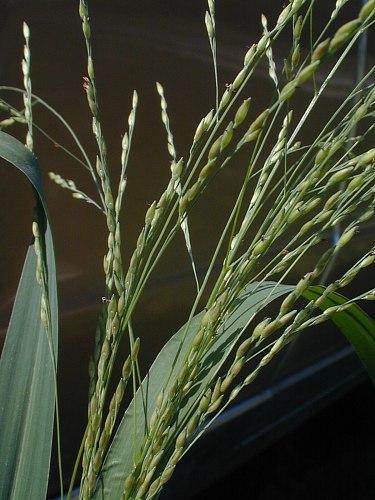 No recorded image of specimen.
No recorded image of specimen.PANDIC
Panicum dichotomiflorum
Panicum dichotomiflorum, known by the common name Fall panicgrass, is a species of Poaceae "true grass". It is native to much of the eastern United States and parts of Canada, and it can be found in the Western United States through California. It may be an introduced species in some western climates. It grows in many types of habitat, including disturbed areas and chaparral habitats.
Link No recorded image of specimen.
No recorded image of specimen.Japanese Honeysuckle
Lonicera japonica
The Japanese honeysuckle (Lonicera japonica; Suikazura スイカズラ/吸い葛 in Japanese; Jinyinhua in Chinese; 忍冬 in Chinese and Japanese) is a species of honeysuckle native to eastern Asia including China, Japan and Korea. It is a twining vine able to climb up to 10 metres (33 ft) high or more in trees, with opposite, simple oval leaves 3–8 centimetres (1.2–3.1 in) long and 2–3 centimetres (0.79–1.2 in) broad. The flowers are double-tongued, opening white and fading to yellow, and sweetly vanilla...
Link No recorded image of specimen.
No recorded image of specimen.Japanese Privet
Ligustrum japonicum
Ligustrum japonicum (Japanese privet or wax-leaf privet; Japanese: ネズミモチ) is a species of Ligustrum (privet) native to central and southern Japan (Honshū, Shikoku, Kyūshū, Okinawa) and Korea.
Link No recorded image of specimen.
No recorded image of specimen.Virginia pepperweed
Lepidium virginicum
Lepidium virginicum, also known as Virginia pepperweed or peppergrass, is an annual or biennial plant in the Brassicaceae or mustard family. It is native to much of North America, including most of the United States and Mexico and southern regions of Canada, as well as most of Central America. It can be found elsewhere as an introduced species.
Link No recorded image of specimen.
No recorded image of specimen.Common Sneezeweed
Helenium autumnale
Helenium autumnale is a flowering plant native to North America. Common names include common sneezeweed and large-flowered sneezeweed.
Link No recorded image of specimen.
No recorded image of specimen.Bitterweed
Helenium amarum
Helenium amarum is a species of annual herb in the daisy family known by the common names yellowdicks, yellow sneezeweed, and bitter sneezeweed. It is native to much of the southeastern United States and northern Mexico, and it is present elsewhere in North America as an introduced species. This is a multibranched bushy erect plant reaching 20 to 70 centimeters in height and thickly foliated in narrow to threadlike leaves. The tops of stem branches hold...
Link No recorded image of specimen.
No recorded image of specimen.Tall Fescue
Festuca arundinacea
Festuca arundinacea (syn., Lolium arundinaceum Darbyshire; Schedonorus phoenix (Scop.) Holub) is a species of grass commonly known as tall fescue. It is a cool-season perennial C3 species of bunchgrass native to Europe. It is an important forage grass throughout Europe, and many cultivars have been used in agriculture. It is also an ornamental grass in gardens, and a phytoremediation plant.
Link No recorded image of specimen.
No recorded image of specimen.Daisy Fleabane
Erigeron strigosus
Erigeron strigosus is a species of flowering plant in the daisy family known by the common name plains fleabane.
Link No recorded image of specimen.
No recorded image of specimen.silverrod
Solidago bicolor
Solidago bicolor, or White Goldenrod, is a herbaceous perennial wildlflower in the Asteraceae family. It flowers from late summer into the fall and displays an elongated spike of short-stalked flower heads with white to yellowish-white rays surrounding a yellow central disk atop a hairy, grayish stem.
Link No recorded image of specimen.
No recorded image of specimen.Tall Goldenrod
Solidago canadensis scabra
Branching clusters of numerous small, stalked, yellow flower heads at the top of the plant. Cluster shape is variable, from pyramidal with spreading branches and up to 1200 flower heads, to much smaller and more compact with upright branches, appearing club shaped with as few as a 100 heads on smaller plants.
Link No recorded image of specimen.
No recorded image of specimen.white flat-topped goldenrod
Solidago ptarmicoides
White flat-topped-goldenrod has travelled from genus to genus several times, first being considered an aster based on superficial resemblance, then moved to the goldenrods (Solidago) based on its ability to hybridize with species from that genus. It has now been placed in the genus Oligoneuron with a number of other species formerly included in Solidago.
Link No recorded image of specimen.
No recorded image of specimen.Jumpseed
Persicaria virginiana
Jumpseed (Persicaria virginiana) is a Persicaria. They can grow in dry, shady areas.
Link No recorded image of specimen.
No recorded image of specimen.CARARG
Carex argyrantha
Silvery-flowered sedge is in the difficult Ovales group of sedges. It has large white-green carpellate scales greater than the length of the perigynia.
Link No recorded image of specimen.
No recorded image of specimen.RHOPRI
Rhododendron prinophyllum
Rhododendron prinophyllum is a rhododendron species native to the eastern and southern United States. It is a deciduous shrub that grows 4 to 8 feet in height. Flowers are pink.
Link No recorded image of specimen.
No recorded image of specimen.Erechtites hieracifolia
Erechtites hieracifolia
Erechtites hieracifolia (fireweed, American burnweed, or Pilewort) is a plant in the daisy family, Asteraceae. It is native to the Americas, but can be found many places around the world having been introduced by human activity. It is introduced in Hawaii.
Link No recorded image of specimen.
No recorded image of specimen.New York ironweed
Vernonia noveboracensis
Vernonia noveboracensis (New York ironweed or Vein-leaf hawkweed) is a plant in the daisy family, Asteraceae. It is native to the eastern United States, from Florida to Massachusetts and west to Tennessee, Alabama, and West Virginia.
Link No recorded image of specimen.
No recorded image of specimen.single-sorus spleenwort
Asplenium monanthes
The single-sorus spleenwort (Asplenium monanthes) are a diverse and widely distributed group of ferns, including not only spleenworts, but also the bird's nest ferns and the walking ferns, which are segregate members of the genus.
Link No recorded image of specimen.
No recorded image of specimen.slender adder's-tongue
Ophioglossum nudicaule
Roots yellowish to pale brown, to 15 per plant, 0.2-0.8mm diam., proliferous at wide intervals. Stem upright, 0.2-1.2 cm, 1-5 mm diam., commonly 2-3 leaves per stem. Trophophore stalk to 0.8 cm, 0.1-0.2 times length of trophophore blade.
Link No recorded image of specimen.
No recorded image of specimen.Ostrich-plume Moss
Ptilium crista-castrensis
Ptilium crista-castrensis is a moss species within the family Hypnaceae, in the class Bryopsida, subclass Bryidae and order Hypnales.
Link No recorded image of specimen.
No recorded image of specimen.limestone adder's-tongue
Ophioglossum engelmannii
Ophioglossum engelmannii, commonly known as the limestone adder's-tongue, is species of fern native to the Western Hemisphere. It is widespread and native to the United States, Mexico, and Central America.
Link No recorded image of specimen.
No recorded image of specimen.black-stemmed spleenwort
Asplenium resiliens
The blackstem spleenwort, Asplenium resiliens, is a species of fern native to the southeastern United States. Found on limestone substrates, it is named for its distinctive purplish-black stipe and rachis. It closely resembles the ebony spleenwort, Asplenium platyneuron.
Link No recorded image of specimen.
No recorded image of specimen.lobed spleenwort
Asplenium pinnatifidum
Asplenium pinnatifidum, commonly known as the lobed spleenwort or pinnatifid spleenwort, is a small fern found principally in the Appalachian Mountains and the Shawnee Hills, growing in rock crevices in moderately acid to subacid strata. Originally identified as a variety of walking fern (Asplenium rhizophyllum), it was classified as a separate species by Thomas Nuttall in 1818. It is believed to have originated by chromosome doubling in a hybrid between walking fern and mountain spleenwort (Asplenium...
Link No recorded image of specimen.
No recorded image of specimen.Bradley's spleenwort
Asplenium bradleyi
Asplenium bradleyi, commonly known as Bradley's spleenwort or cliff spleenwort, is a rare epipetric fern of east-central North America. Named after Professor Frank H. Bradley, who first collected it in Tennessee, it may be found infrequently throughout much of the Appalachian Mountains, the Ozarks, and the Ouachita Mountains, growing in small crevices on exposed sandstone cliffs. The species originated as a hybrid between mountain spleenwort (Asplenium montanum) and ebony spleenwort (Asplenium platyneuron); A. bradleyi originated when that...
Link No recorded image of specimen.
No recorded image of specimen.hyssopleaf thoroughwort
Eupatorium hyssopifolium
Eupatorium hyssopifolium, also known as Hyssopleaf thoroughwort, is a fall-blooming herbaceous plant native to North America. Like other members of the genus Eupatorium it has inflorescences containing a large number of white flowers with disc florets and no ray florets. At 0.5 to one meter tall, it is towards the shorter end of the range of heights found in Eupatorium species.
Link No recorded image of specimen.
No recorded image of specimen.Silver Fir
Abies alba
Abies alba, the silver fir or European silver fir, is a fir native to the mountains of Europe, from the Pyrenees north to Normandy, east to the Alps and the Carpathians, Slovenia, Croatia, Bosnia and Herzegovina and south to southern Italy and northern Serbia.
Link No recorded image of specimen.
No recorded image of specimen.Fraser Fir
Abies fraseri
Fraser Fir (Abies fraseri) is a species of fir native to the mountains of the eastern United States. It is closely related to Balsam Fir (Abies balsamea), of which it has occasionally been treated as a subspecies (as A. balsamea subsp. fraseri (Pursh) E.Murray) or a variety (as A. balsamea var. fraseri (Pursh) Spach).
Link No recorded image of specimen.
No recorded image of specimen.Carolina hemlock
Tsuga caroliniana
Tsuga caroliniana (Carolina hemlock) is a species of Tsuga, native to the Appalachian Mountains in southwest Virginia, western North Carolina, extreme northeast Georgia, northwest South Carolina, and eastern Tennessee. Its habitat is on rocky mountain slopes at elevations of 700–1,200 metres (2,300–3,900 ft). The optimal growing condition is a partly shady area with moist but well-drained soil in a cool climate.
Link No recorded image of specimen.
No recorded image of specimen.White Morning-glory
Ipomoea lacunosa
The whitestar potato, Ipomoea lacunosa, is a species that belongs to the Ipomoea genus. In this genus most members are commonly referred to as "morning glories". The name for the genus, Ipomoea, has root in the Greek words ips and homoios, which translates to worm-like. This is a reference to the plant's vine-like growth. Lacunosa comes from a Latin word meaning air spaces, correlating with the veination of the leaves.Ipomoea lacunosa is native to the United...
Link No recorded image of specimen.
No recorded image of specimen.Oxydendrum arboreum
Oxydendrum arboreum
Sourwood or sorrel tree (Oxydendrum arboreum, /ˌɒksɨˈdɛndrəm ɑrˈbɔəriəm/) is the sole species in the genus Oxydendrum, in the family Ericaceae. It is native to eastern North America, from southern Pennsylvania south to northwest Florida and west to southern Illinois; it is most common in the lower chain of the Appalachian Mountains. The tree is frequently seen as a component of oak-heath forests.
Link No recorded image of specimen.
No recorded image of specimen.Aloe Yucca
Yucca aloifolia
Yucca aloifolia L. is the type species for the genus Yucca. Common names include "Spanish bayonet," "dagger plant," etc. It grows in sandy soils, especially on sand dunes along the coast from North Carolina to Mexico, and on islands in the Caribbean. It can sometimes be found inland in sandy pine forests. It is also naturalized elsewhere.
Link No recorded image of specimen.
No recorded image of specimen.Florida Pusley
Richardia scabra
Florida pusley is a summer annual found most often in warm season turfgrass areas. The leaves can be hairy and grow opposite one another on hairy stems. The growth of Florida pusley in maintained turf areas is usually low and prostrate to the ground, forming thick patches.
Link No recorded image of specimen.
No recorded image of specimen.Downy Skullcap
Scutellaria incana
Scutellaria incana, also Downy Skullcap, is a flowering plant in the family Lamiaceae and is native to North America. It is a perennial and is primarily found in the eastern United States as well as some parts of the Midwest.
Link No recorded image of specimen.
No recorded image of specimen.leatherleaf
Chamaedaphne calyculata
Chamaedaphne calyculata, leatherleaf, is a shrub in the plant family Ericaceae and the only species in the genus Chamaedaphne. It has a wide distribution throughout the cool temperate and subarctic regions of the Northern Hemisphere.
Link No recorded image of specimen.
No recorded image of specimen.hollow Joe-Pye weed
Eutrochium fistulosum
Trumpetweed or joe-pye weed can grow from 2-7 ft. or taller in soils that are moist through the season. Narrow, lance-shaped leaves, up to 10 in. long, are whorled along the erect stem. The huge, domed flower head is composed of several branches bearing tiny pinkish-lavender florets.
Link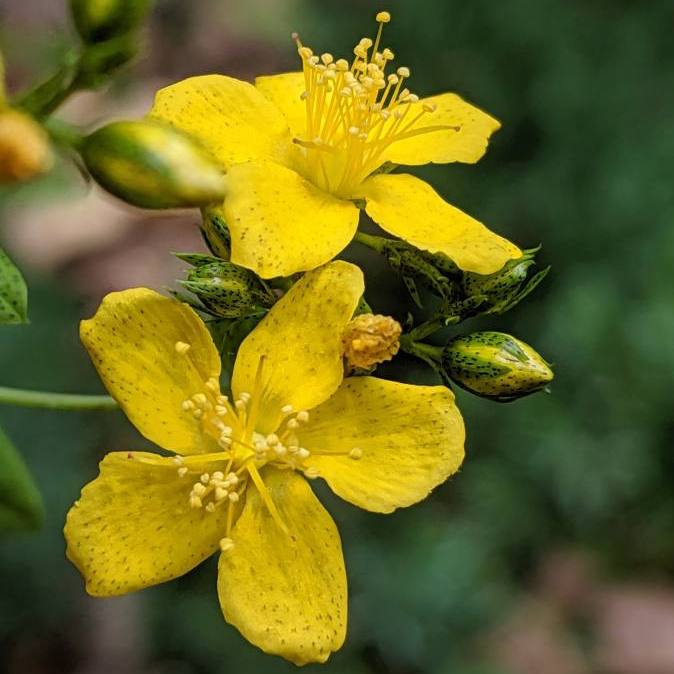 No recorded image of specimen.
No recorded image of specimen.spotted St. John's wort
Hypericum punctatum
This perennial plant is up to 2½' tall, branching occasionally in the upper half. The hairless stems are red or green. The hairless opposite leaves are up to 2½'' long and 1'' across. They are oblong, oval, or bluntly lanceolate (with rounded tips), with a few pinnate or parallel veins and smooth margins. The leaves are often sessile or perfoliate, otherwise they have short petioles.
Link No recorded image of specimen.
No recorded image of specimen.summer bluets
Houstonia purpurea
Houstonia purpurea (formerly Hedyotis purpurea) is a species of flowering plant in the coffee family known by the common names Venus' pride, woodland bluet, and purple bluet. It is native to the eastern United States.
Link No recorded image of specimen.
No recorded image of specimen.Ctenium aromaticum
Ctenium aromaticum
Ctenium aromaticum is a species of grass known by the common name toothache grass. It is native to the southeastern United States, where it grows on the coastal plain.
Link No recorded image of specimen.
No recorded image of specimen.Persea borbonia
Persea borbonia
Persea borbonia is a species of plant in the Lauraceae family, with several common names including redbay,tisswood, scrubbay, shorebay, and swampbay.
Link No recorded image of specimen.
No recorded image of specimen.Creeping cucumber
Melothria pendula
Slender, climbing vine in the cucumber family with tendrils beside the leaves. The leaves are alternate, simple, palmately 3-5 lobed and the flowers solitary and axillary, 5-parted. The fruit is a green or black berry with white seeds.
Link No recorded image of specimen.
No recorded image of specimen.Spring Coralroot
Corallorhiza wisteriana
Spring coralroot (Corallorhiza wisteriana) — also called Arousing coralroot or Wister's Coralroot — is a species of coralroot orchid.
Link No recorded image of specimen.
No recorded image of specimen.sweet goldenrod
Solidago odora
Sweet goldenrod is a low maintenance native herbaceous perennial wildflower. Growing 1-2 feet tall, it has gracefully arching stems of yellow flowers that erupt from basal clumps in the late summer and early fall.
Link No recorded image of specimen.
No recorded image of specimen.Pluchea foetida
Pluchea foetida
In the Coastal Plain in Florida and Georgia, P. foetida can be found at edges of creeks and swampy woodlands, bordering deciduous forests, cypress-sweetgum swamps, cabbage palmetto/ water hickory hammocks, marshy areas, flatwood streams, deeply shaded floodplains, moist depressions of sandbars, wet drainage bordering savannas, slash pine-wiregrass flatwoods, wiregrass/saw palmetto with scattered pines and cypress bays, swamp forests, open bogs, and semi shaded mesic woods along creek swamps.
Link No recorded image of specimen.
No recorded image of specimen.Eupatorium capillifolium
Eupatorium capillifolium
Eupatorium capillifolium (dogfennel) is a perennial herbaceous plant in the family Asteraceae, native to southeastern North America. It is generally between 50 cm and 2 meters tall with several stems that fork from a substantial base. The stems and base are covered in leaves so dissected that they resemble green hairs coming out of the stem in fractal patterns. When crushed, the leaves and flowers smell rather unpleasant.
Link No recorded image of specimen.
No recorded image of specimen.buttonweed
Diodia virginiana
Virginia buttonweed (Diodia virginiana) is a challenging to control turfgrass weed that has recently become a prevalent weed in South Carolina lawns. This perennial weed is deeply rooted, produces belowground and aboveground flowers, and spreads by rhizomes (underground stems), as well as by stem pieces cut and distributed during mowing or string trimming.
Link No recorded image of specimen.
No recorded image of specimen.Desmodium glabellum
Desmodium glabellum
Smooth tick-trefoil is a plant of the eastern and southern United States, just barely entering New England in Connecticut, where it is very rare.
Link No recorded image of specimen.
No recorded image of specimen.wintercreeper
Euonymus fortunei
Euonymus fortunei (common names spindle or fortune's spindle, winter creeper or wintercreeper) is a species of flowering plant in the family Celastraceae, native to east Asia, including China, Korea, the Philippines and Japan. It is named after the plant explorer Robert Fortune.
Link No recorded image of specimen.
No recorded image of specimen.ALISUB
Alisma subcordatum
Alisma subcordatum (American water plantain) is a perennial aquatic plant in the Water-plantain family (Alismataceae). This plant grows to about 3 feet (1 meter) in height with lance to oval shaped leaves rising from bulbous corms with fibrous roots. Any leaves that form underwater are weak and quick to rot; they rarely remain on adult plants. A branched inflorescence with white to pink 3 petaled flowers blooms from June to September. The seeds are eaten by...
Link No recorded image of specimen.
No recorded image of specimen.Starry rosinweed
Silphium asteriscus
Silphium asteriscus also known as starry rosinweed is the type species of the genus Silphium and a member of the family Asteraceae.
Link No recorded image of specimen.
No recorded image of specimen.field goldenrod
Solidago nemoralis
Solidago nemoralis is a species of flowering plant in the aster family, Asteraceae. It is native to North America, where it is widely distributed in Canada except the northern provinces and the United States except the western states. Its common names include gray goldenrod, gray-stem goldenrod, old-field goldenrod,field goldenrod,prairie goldenrod, dwarf goldenrod, and dyersweed goldenrod.
Link No recorded image of specimen.
No recorded image of specimen.Solidago speciosa
Solidago speciosa
Solidago speciosa, or Showy Goldenrod, is a flowering plant in the United States.
Link No recorded image of specimen.
No recorded image of specimen.painted buckeye
Aesculus sylvatica
Aesculus sylvatica (painted buckeye) is a species of shrub. The species has five leaflets that are 4.5 to 6 inches long and 1.5 to 2.5 inches wide. The flowers are yellow and occasionally have red also. The species have dry fruit and brown, scaly bark. The species is commonly found in forests and along stream banks. The shrub is poisonous.
Link No recorded image of specimen.
No recorded image of specimen.Viburnum prunifolium
Viburnum prunifolium
Viburnum prunifolium (known as blackhaw or black haw, blackhaw viburnum, sweet haw, and stag bush) is a species of Viburnum native to northeastern North America, from Connecticut west to eastern Kansas, and south to Alabama and Texas.
Link No recorded image of specimen.
No recorded image of specimen.DESFLE
Deschampsia flexuosa
Deschampsia flexuosa (L.) Trin. (syn. Avenella flexuosa L.; Lerchenfeldia flexuosa (L.) Schur), or Wavy Hair-grass, is a species of bunchgrass in the Poaceae family with a Holarctic distribution.
Link No recorded image of specimen.
No recorded image of specimen.Spiranthes ovalis
Spiranthes ovalis
Spiranthes ovalis, commonly called Lesser Ladies' Tresses, is widely distributed across the central and eastern U.S. and Canada, from Texas to Ontario. It produces 2-5 basal or lower stem leaves which usually persist through flowering, and bears an inflorescence of up to 50 small, white flowers arranged in a tight spiral.
Link No recorded image of specimen.
No recorded image of specimen.Bush Clover
Lespedeza bicolor
Lespedeza bicolor is a species of flowering plant in the legume family known by the common names shrubby bushclover, shrub lespedeza, and bicolor lespedeza. It is native to Asia and it is widely grown as an ornamental plant. In some regions, such as the southeastern United States, it grows in the wild as an introduced and invasive species.
Link No recorded image of specimen.
No recorded image of specimen.Cirsium carolinianum
Cirsium carolinianum
Cirsium carolinianum is a North American species of plants in the tribe Cardueae within the family Asteraceae. Common name is Carolina thistle or purple thistle or soft thistle or smallhead thistle. The species is native to the central and southern United States, from eastern Texas east to Virginia and the Carolinas, north to the Ohio Valley.
Link No recorded image of specimen.
No recorded image of specimen.winged sumac
Rhus copallinum latifolia
Winged sumac is a large, deciduous shrub or small tree, 20-35 ft. tall, with short, crooked trunks and open branching. Glossy, dark-green, pinnately compound leaves turn reddish-purple in the fall. Yellowish-green flowers are succeeded by drooping, pubescent, pyramidal fruit clusters which turn dull red and persist through winter.
Link No recorded image of specimen.
No recorded image of specimen.Baptisia australis aberrans
Baptisia australis aberrans
Rising 2-4 ft. high from a woody base, blue wild indigo is a bushy, robust perennial. Flowers are blue-purple and pea-like, congested in dense, upright, terminal spikes, 4-16 in. long. Leaves are divided into three leaflets. In late fall the plant turns silvery-gray, sometimes breaking off at ground level and tumbling about in the wind.
Link No recorded image of specimen.
No recorded image of specimen.Coreopsis major
Coreopsis major
Coreopsis major is a plant species of the genus coreopsis in Asteraceae. Coreopsis species are commonly called tick seeds.
Link No recorded image of specimen.
No recorded image of specimen.Matelea decipiens
Matelea decipiens
Matelea decipiens is a species of flowering plant in the family Apocynaceae known by the common name oldfield milkvine. It is native to the southeastern United States, where it grows in open deciduous woods and stream banks. It is a perennial twining vine forb/herb with milky sap and 5 to 10 cm heart-shaped leaves.
Link No recorded image of specimen.
No recorded image of specimen.Trifolium reflexum
Trifolium reflexum
Trifolium reflexum or Buffalo Clover is a North Carolina native perennial in the bean family. A rare plant that was once abundant, it has seen a strong decline in the past few decades. In North Carolina, it has been given a State Threatened status. On the rare occasions that it is located, it is seldom in large stands.
Link No recorded image of specimen.
No recorded image of specimen.Matelea carolinensis
Matelea carolinensis
Matelea carolinensis is a species of flowering plant in the dogbane family known by the common names maroon Carolina milkvine and Carolina anglepod. It is native to the southeastern United States, where it grows in open deciduous woods and stream banks. It is a perennial twining vine forb/herb with milky sap and 5 to 10 cm heart-shaped leaves. The vine dies back and returns every year. The 1 to 2 cm flowers are deep purple, occasionally...
Link No recorded image of specimen.
No recorded image of specimen.Oenothera fruticosa
Oenothera fruticosa
Oenothera fruticosa, or narrow-leaved sundrops, is a species of flowering plant in the evening primrose genus of the family Onagraceae, native to much of eastern North America. It is an erect herbaceous perennial growing to 20–90 cm (8–35 in) tall, with alternative, simple, entire or slightly toothed leaves. The saucer- or cup-shaped yellow flowers, 2.5–5 cm (1–2 in) in diameter, appear in late spring and summer. The fruit is a capsule that is strongly 4-angled or winged and shaped like...
Link No recorded image of specimen.
No recorded image of specimen.cut-leaf goldenrod
Solidago arguta
Solidago arguta, commonly called Atlantic goldenrod, cut-leaf goldenrod, and sharp-leaved goldenrod, is a species of flowering plant native to eastern and central North America. It grows along the Gulf and Atlantic states of the United States from Texas to Maine, inland as far as Ontario, Illinois, and Kansas.
Link No recorded image of specimen.
No recorded image of specimen.Halberd Leaved Violet
Viola hastata
Viola hastata, commonly known as the halberd-leaved yellow violet, is a perennial plant in the violet family found in the eastern United States. It blooms from March to May with yellow flowers.
Link No recorded image of specimen.
No recorded image of specimen.inkberry
Ilex glabra
Ilex glabra, also known as Appalachian Tea, Dye-leaves, Evergreen Winterberry, Gallberry, Inkberry, is a species of evergreen holly native to Eastern North America in the United States and Atlantic Canada. Its native range is from Florida north to Nova Scotia and the southern Ohio and Mississippi Valleys. This plant is often used as an ornamental plant. Gallberry nectar is the source of a pleasant honey that is popular in the southern United States.
Link No recorded image of specimen.
No recorded image of specimen.Liatris squarrulosa
Liatris squarrulosa
Scaly gayfeather or blazing star may have one or several stems, each erect, unbranched, and 10-24 in. tall. Its leaves are not as numerous as in most other Liatris species. Tuft-like, red-violet flower heads are few and openly spaced in a spike along the top of the stem.
Link No recorded image of specimen.
No recorded image of specimen.Marshallia obovata
Marshallia obovata
Flowering stems, appearing in spring, are up to 2 feet tall. This plant is native to the southeastern piedmont, grows in clumps, and is found in open woodlands and along roadsides throughout the southeast. It is good for rock gardens and in the front of beds.
Link No recorded image of specimen.
No recorded image of specimen.Green-and-gold
Chrysogonum virginianum
Chrysogonum virginianum (Golden-knees, Goldenstar, or Green-and-gold) is a perennial ornamental herb native of United States, which is usually propagated by root cuttings.
Link No recorded image of specimen.
No recorded image of specimen.eastern smooth beardtongue
Penstemon laevigatus
Penstemon laevigatus is a plant in the plantain family, Plantaginaceae. The flowers are borne in summer. Its native range includes much of the Eastern United States, from Maine to Michigan and Georgia to Mississippi. It can grow in either sunny or shady conditions.
Link No recorded image of specimen.
No recorded image of specimen.white vervain
Verbena urticifolia
Verbena urticifolia (white vervain) is a herbaceous plant in the vervain family (Verbenaceae). It belongs to the "true" vervains of genus Verbena.
Link No recorded image of specimen.
No recorded image of specimen.Orange Milkwort
Polygala lutea
This flower is typical of the wet sandy soil and bogs of the pine barrens. The species name, Latin for 'yellow,' refers to the flower's distinctive color when dried; when fresh, it is bright orange, differing from most of the Milkworts, which are pinkish, yellow, or white.
Link No recorded image of specimen.
No recorded image of specimen.Cyperus echinatus
Cyperus echinatus
Cyperus echinatus is a species of plant in the sedge family. It is native to most of eastern North America.
Link No recorded image of specimen.
No recorded image of specimen.honewort
Cryptotaenia canadensis
Cryptotaenia is a genus of two species of herbaceous perennial plants, native to North America and eastern Asia, growing wild in moist, shady places.
Link No recorded image of specimen.
No recorded image of specimen.fringed phacelia
Phacelia fimbriata
Phacelia fimbriata (Fringed Phacelia) is a spring flowering wildflower of the genus Phacelia found in the highland woods of southeastern United States including the Great Smoky Mountains.
Link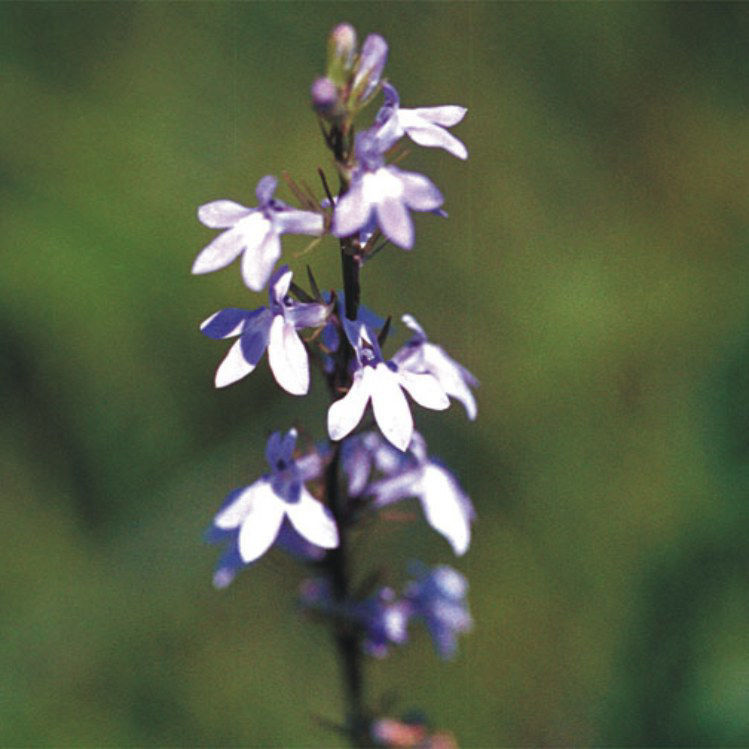 No recorded image of specimen.
No recorded image of specimen.spiked lobelia
Lobelia spicata
A single, slender stem rises 1-2 ft. from pale-spike lobelia’s small rosette of basal foliage. The stem bears a delicate spike of pale-blue, two-lipped flowers. Small, bilaterally symmetrical, lavender to purplish-blue to bluish-white flowers in an elongated, slender, spike-like cluster; stem leafy, often reddish and hairy at base, smooth above. Pale-spike lobelia is a perennial.
Link No recorded image of specimen.
No recorded image of specimen.rattlesnake master
Eryngium yuccifolium
Eryngium yuccifolium (Button snake-root, Rattlesnake Master) is a common herbaceous perennial plant, native to the tallgrass prairies of central and eastern North America, from Minnesota east to Ohio and south to Texas and Florida. It grows to 1.8 m tall, with linear leaves 15–100 cm long but only 1–3 cm broad, with bristly or spiny margins and a sharp tip. The flowers are produced in dense apical umbels 1–3 cm diameter, each flower greenish-white or bluish-white, 3–4 mm diameter. When...
Link No recorded image of specimen.
No recorded image of specimen.Chestnut Oak
Quercus montana
Quercus prinus (syn. Quercus montana), the chestnut oak, is a species of oak in the white oak group, Quercus sect. Quercus. It is native to the eastern United States, where it is one of the most important ridgetop trees from southern Maine southwest to central Mississippi, with an outlying northwestern population in southern Michigan. It is also sometimes called "rock oak" because of montane and other rocky habitats. As a consequence of its dry habitat and...
Link No recorded image of specimen.
No recorded image of specimen.Ruellia caroliniensis
Ruellia caroliniensis
Ruellia caroliniensis is a wild petunia with blue or violet flowers that appear in the spring, summer, and autumn. Its leaves are light green. This species is native to the southeastern United States.
Link No recorded image of specimen.
No recorded image of specimen.Carex squarrosa
Carex squarrosa
Carex squarrosa has a widespread native range, which encompasses the Eastern half of North America. It is found in wet meadows and prairies, flood plains, and forest edges. Narrow-leaved Cattail Sedge has narrow, green foliage and it forms small clumps.
Link No recorded image of specimen.
No recorded image of specimen.Partridge pea
Chamaecrista fasciculata
Chamaecrista fasciculata (Partridge Pea) is a species of legume native to most of the eastern United States. It is an annual which grows to approximately 0.5 meters tall. It has bright yellow flowers from early summer until first frost, with flowers through the entire flowering season if rainfall is sufficient.
Link No recorded image of specimen.
No recorded image of specimen.Sweetbay magnolia
Magnolia virginiana
Magnolia virginiana, most commonly known as sweetbay magnolia, or merely sweetbay (also swampbay, swamp magnolia, whitebay, or beaver tree), is a member of the magnolia family, Magnoliaceae. It was the first magnolia to be scientifically described under modern rules of botanical nomenclature, and is the type species of the genus Magnolia; as Magnolia is also the type genus of all flowering plants (magnoliophytes), this species in a sense typifies all flowering plants.
Link No recorded image of specimen.
No recorded image of specimen.Galactia regularis
Galactia regularis
Carex squarrosa has a widespread native range, which encompasses the Eastern half of North America. It is found in wet meadows and prairies, flood plains, and forest edges. Narrow-leaved Cattail Sedge has narrow, green foliage and it forms small clumps.
Link No recorded image of specimen.
No recorded image of specimen.white wood aster
Eurybia divaricata
Eurybia divaricata (formerly Aster divaricatus), commonly known as the white wood aster, is an herbaceous plant native to eastern North America. It occurs in the eastern United States, primarily in the Appalachian mountains, though it is also present in southeastern Canada, but only in about 25 populations in the provinces of Ontario and Quebec. In the U.S. it is abundant and common, but in Canada it is considered threatened due to its restricted distribution. It can...
Link No recorded image of specimen.
No recorded image of specimen.Butterfly Pea
Centrosema virginianum
Centrosema virginianum has different common names such as Virginian Centro, wild blue vine, blue bell, and wild pea.C. virginianum is a member of the Fabaceae family, it is identify by its trailing and twining vine. The stems are tender and small in proportion to its height. C. virginianum habitats are in pine lands and coastal uplands.
Link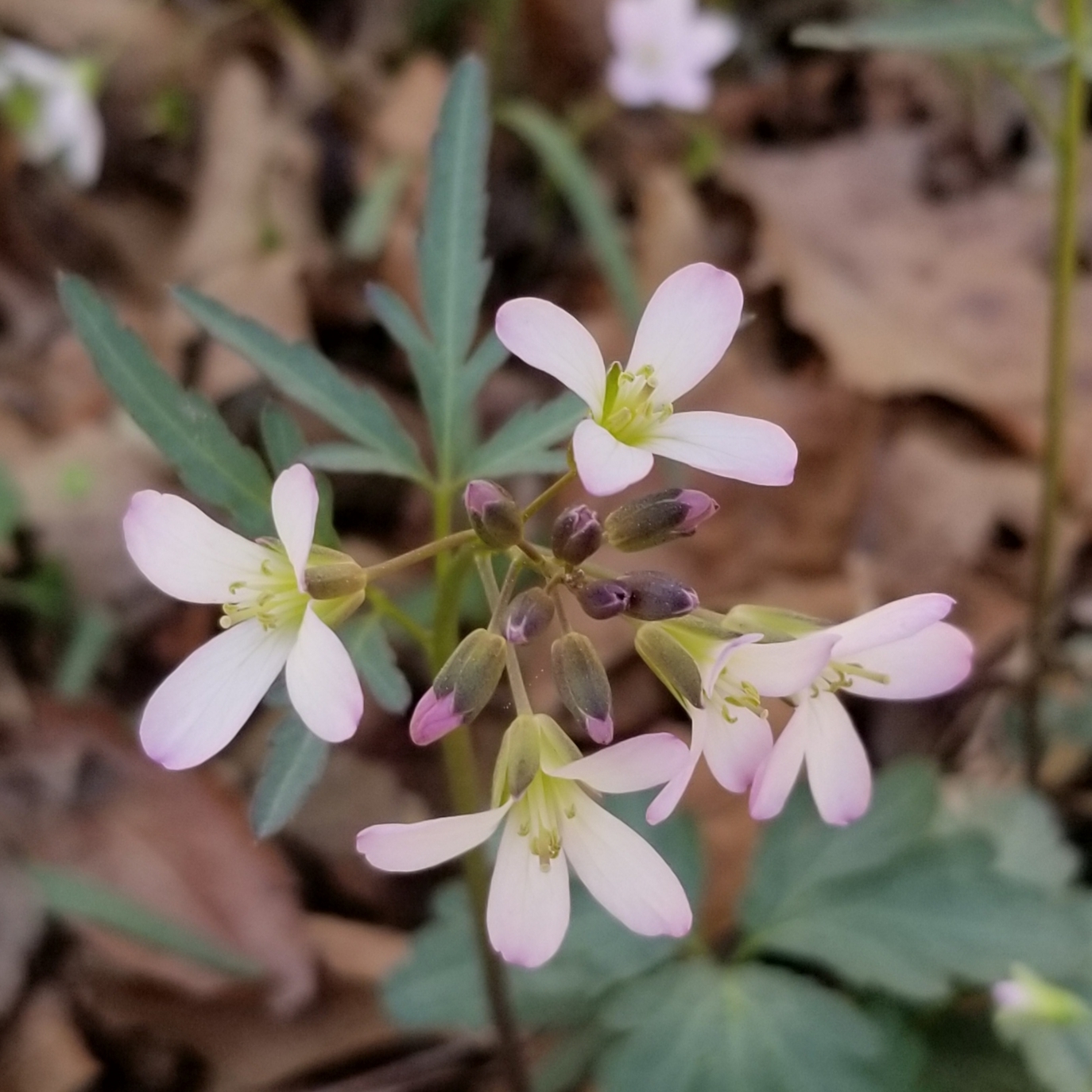 No recorded image of specimen.
No recorded image of specimen.Cardamine angustata
Cardamine angustata
Cardamine angustata (known by the common name slender toothwort) is a perennial forb native to the eastern United States, that produces white to pink or purple flowers in early spring.
Link No recorded image of specimen.
No recorded image of specimen.blue curls
Trichostema dichotomum
Trichostema dichotomum (forked bluecurls) is a plant in the mint family, Lamiaceae. Trichostema dichotomum is an annual herbaceous forb with opposite, simple leaves, and square, erect, hairy stems. The flowers are blue, borne in late summer.
Link No recorded image of specimen.
No recorded image of specimen.purple crown-vetch
Securigera varia
Securigera varia, commonly known as crown vetch or purple crown vetch, is a low-growing legume vine. It is native to Africa, Asia and Europe and is commonly used throughout the United States and Canada for erosion control, roadside planting and soil rehabilitation. It has become an invasive species in many states of the US.
Link No recorded image of specimen.
No recorded image of specimen.Scutellaria integrifolia
Scutellaria integrifolia
Scutellaria integrifolia grows 1-2 feet tall, is usually branched near the base and has erect stems. Leaves are opposite. Those near the bottom are often coarsely toothed, 1/3-1 1/4 inches long; upper leaves are untoothed, narrower, and up to 2 inches long.
Link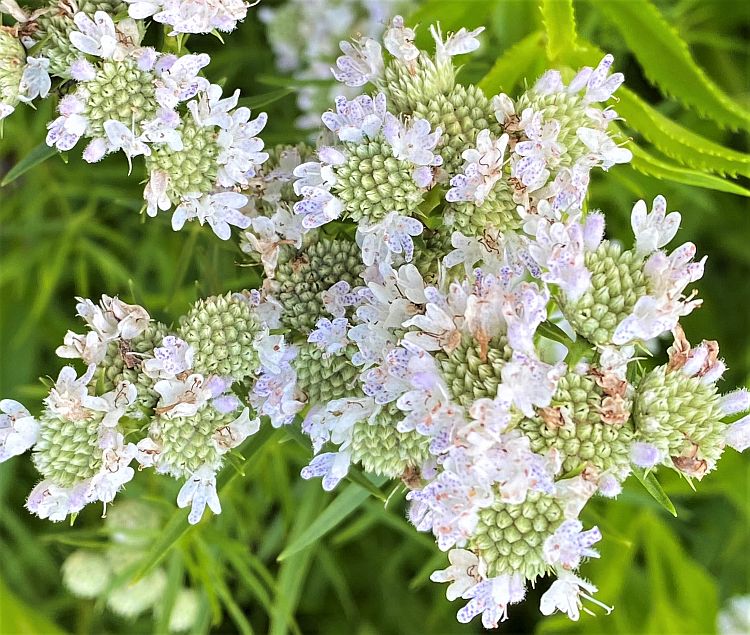 No recorded image of specimen.
No recorded image of specimen.Narrowleaf mountainmint
Pycnanthemum tenuifolium
Pycnanthemum tenuifolium ( narrowleaf mountainmint, slender mountainmint, common horsemint, Virginia thyme) is a plant in the mint family, Lamiaceae. It is native to eastern North America.
Link No recorded image of specimen.
No recorded image of specimen.Round-leaved Violet
Viola rotundifolia
Round-leaved violet is a yellow-flowered species, with the leaves and flowers arising from the base (stemless). Like many herbaceous plants of the eastern forests, round-leaved violet is dispersed by ants. The non-native invasive fire ant (Solenopsis invicta), which is spreading across the United States, also forages for ant-dispersed seeds.
Link No recorded image of specimen.
No recorded image of specimen.pennywort
Obolaria virginica
Pennywort is a perennial broadleaf plant with creeping underground stems. One species, lawn pennywort, Hydrocotyle sibthorpioides, is found in the South Coast of California to about 1100 feet (330 m).
Link No recorded image of specimen.
No recorded image of specimen.Shining sumac
Rhus copallinum
Rhus copallina (orth. var. Rhus copallinum), Shining Sumac, Dwarf Sumac, Flameleaf Sumac or Winged Sumac, is a species of flowering plant in the cashew family (Anacardiaceae) that is native to eastern North America. It is a deciduous tree growing to 3.5–5.5 metres (11–18 ft) tall and an equal spread with a rounded crown. A 5-year-old sapling will stand about 2.5 metres (8.2 ft).
Link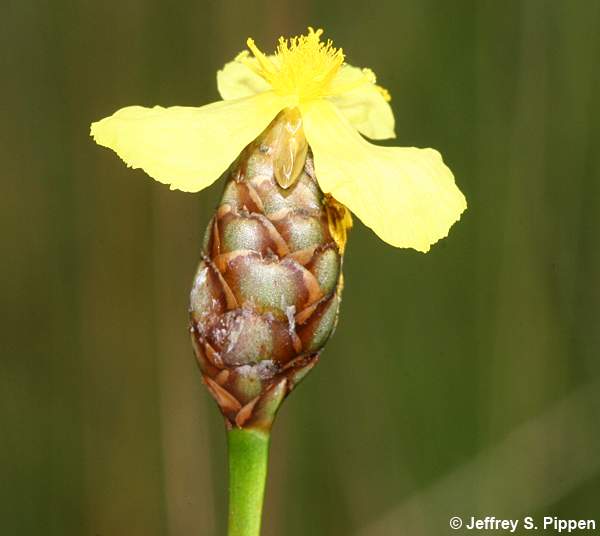 No recorded image of specimen.
No recorded image of specimen.Xyris ambigua
Xyris ambigua
An North American species of flowering plant in the yellow-eyed-grass family. It is native to southern and eastern Mexico (Tamaulipas, Veracruz, Tabasco, Chiapas, the Yucatán), Central America (Belize, Honduras, Nicaragua), Cuba, and the southeastern and south-central United States (from Texas to Virginia inland to Tennessee and Arkansas).
Link No recorded image of specimen.
No recorded image of specimen.orange daylily
Hemerocallis fulva
Hemerocallis fulva, the Orange Daylily, Tawny Daylily, Tiger Daylily or Ditch Lily, is a species of daylily native to Asia. It is very widely grown as an ornamental plant in temperate climates for its showy flowers and ease of cultivation. It is not related to true lilies, but gets its name from the similarity of the flowers and from the fact that each flower lasts only one day.
Link No recorded image of specimen.
No recorded image of specimen.Eastern gamagrass
Tripsacum dactyloides
Tripsacum dactyloides, commonly called eastern gamagrass, is a warm-season, sod-forming bunch grass native to the eastern United States. Gamagrass is a distant relative of the corn species (Zea mays) and, like corn, the male part of the plant is located in the upper section of the female part. The joints of the seed-bearing part of the plant break when the plant is developed and each seed-bearing part contains one seed.
Link No recorded image of specimen.
No recorded image of specimen.Carolina sweetshrub
Calycanthus floridus
Calycanthus (sweetshrub) is a genus of flowering plants in the family Calycanthaceae, endemic to North America. The genus includes two to four species depending on taxonomic interpretation; two are accepted by the Flora of North America.
Link No recorded image of specimen.
No recorded image of specimen.Mazus pumilus
Mazus pumilus
A species of flowering plant in the Mazaceae family. It is native to south and east Asia, where it is found in Bhutan, China, India, Indonesia, Japan, Korea, Nepal, New Guinea, the Philippines, Russia, Taiwan, Thailand, and Vietnam.
Link No recorded image of specimen.
No recorded image of specimen.sparse-lobed grapefern
Botrychium biternatum
Sparse-lobed grape fern, Botrychium biternatum, is rare in Missouri and restricted to the Mississippi Lowlands of the Bootheel. It is closely related to cut-leaf grape fern. Its vegetative leaves, however, are thin-textured (not leathery), and they are only 2–3 times pinnately compound (not 2–4 times).
Link No recorded image of specimen.
No recorded image of specimen.small-flowered crowfoot
Ranunculus abortivus
Ranunculus abortivus is a species of flowering plant in the buttercup family, Ranunculaceae. Its common names include littleleaf buttercup, small-flower crowfoot,small-flowered buttercup, and kidneyleaf buttercup. It is native to North America, with a distribution that covers much of the northern, eastern and central part of the continent.
Link No recorded image of specimen.
No recorded image of specimen.Trillium erectum erectum
Trillium erectum erectum
Trillium erectum’s single whorl of diamond-shaped leaves clasp its 6-18 in. stem. Perched 1-4 in. above the leaves is a single, nodding, crimson flower with three petals curved slightly backward. The petals wither in 2-3 weeks, leaving a fleshy, berry-like fruit. The solitary, nodding flower, with an unpleasant odor, rises on a stalk above a whorl of 3 broadly ovate, diamond-shaped leaves.
Link No recorded image of specimen.
No recorded image of specimen.Solidago rigida glabrata
Solidago rigida glabrata
Solidago rigida, known by the common names stiff goldenrod and stiff-leaved goldenrod, is a North American plant species in the family Asteraceae. It has a widespread distribution in Canada and the United States, where it is found primarily east of the Rocky Mountains.
Link No recorded image of specimen.
No recorded image of specimen.stiff-leaved goldenrod
Solidago rigida
Widely adaptable, Stiff Goldenrod, thrives in the most inhospitable soils and tolerates a range of conditions from clay to dry sand. An important source of nectar for many pollinators, the flowers are favorite of Monarch butterflies as they fuel-up for their fall migration. The stems serve as perches for songbirds, and the seeds are an important late season bird food.
Link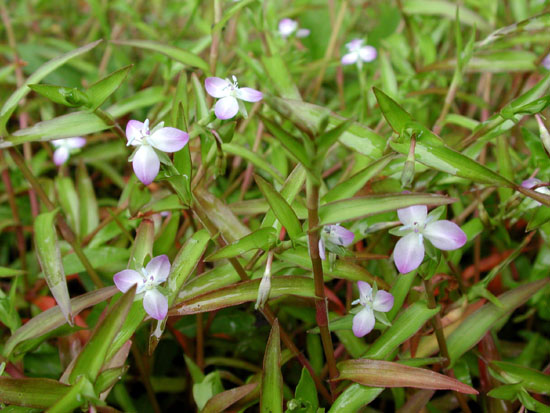 No recorded image of specimen.
No recorded image of specimen.Murdannia keisak
Murdannia keisak
Murdannia keisak, the marsh dewflower, is an annual, emergent plant in the family Commelinaceae. It is known by several other common names, including aneilema, wart-removing herb, Asian spiderwort, and marsh dayflower.
Link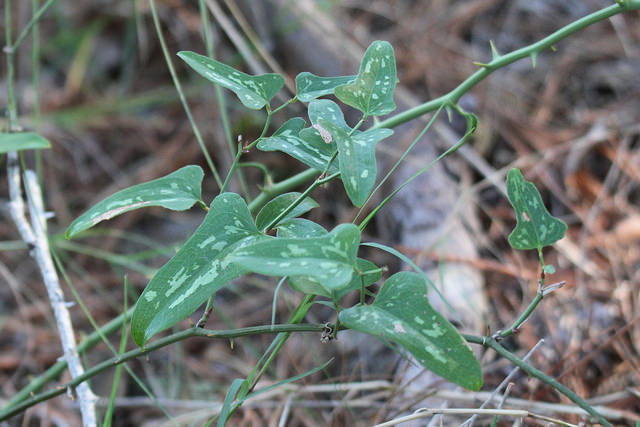 No recorded image of specimen.
No recorded image of specimen.Saw Greenbrier
Smilax bona-nox
Smilax bona-nox, known by the common names saw greenbrier, zarzaparrilla,catbrier, bullbrier, chinabrier, and tramp's trouble, is a species of flowering plant in the Smilacaceae, or greenbrier family. The species is native to the southeastern United States as far west as Kansas and Texas, and northern Mexico.
Link No recorded image of specimen.
No recorded image of specimen.Canada clearweed
Pilea pumila
Pilea pumila, known as Clearweed, Canadian clearweed, Coolwort, or Richweed is an annual plant native to most of North America east of the Rockies. The plants are generally erect, 10 to 70 cm tall, often occurring in large colonies, and are quite common throughout their range both as a woodland plant and a weed of gardens.
Link No recorded image of specimen.
No recorded image of specimen.whorled milkweed
Asclepias verticillata
Asclepias verticillata (whorled milkweed, eastern whorled milkweed, horsetail milkweed) is a species of milkweed native to most all of eastern North America and parts of western Canada and the United States.
Link No recorded image of specimen.
No recorded image of specimen.Houstonia pusilla
Houstonia pusilla
Houstonia pusilla is a plant in the family Rubiaceae native to the United States and common in the southeastern and central parts of the country. It is a short plant 6 inches (150 mm) or less in height with a tiny blue toned, yellow centered four lobed flower with a 0.25–0.33 inch (6.4–8.4 mm) diameter. The plant has a center rosette form and green herbaceous foliage with leaves up to 0.5 inches (13 mm) long. The leaves are opposite...
Link No recorded image of specimen.
No recorded image of specimen.round-leaved fameflower
Phemeranthus teretifolius
Round-leaved Fame-flower is a perennial herb that grows to 8 inches (2 dm) tall. The leaves are arranged alternately, but are densely clustered and give the stem a tufted appearance.
Link:max_bytes(150000):strip_icc()/joe-pye-weed-eupatorium-purpureum-1402848-07-b759a5857af34b44b5db6d1c2dd5a99c.jpg) No recorded image of specimen.
No recorded image of specimen.Appalachian Joe-Pye weed
Eutrochium steelei
Eutrochium steelei - Appalachian Joe Pye Weed, Steele's Eupatorium, Steele's Joe Pye Weed. There are only five species in the Eutrochium genus, Joe Pye Weed. These were previously classified in the Eupatorium genus (Thoroughworts.)
Link No recorded image of specimen.
No recorded image of specimen.Marshallia legrandii
Marshallia legrandii
This newly described species is known from just three populations in Granville County, NC and Halifax Co. VA. It is associated with diabase bedrock and greenstone, which is rare in the area.
Link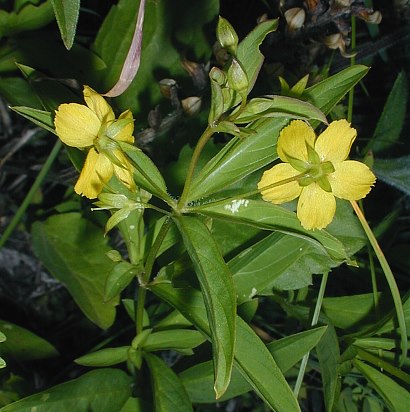 No recorded image of specimen.
No recorded image of specimen.Rough-leaved Loosestrife
Lysimachia asperulaefolia
Lysimachia asperulifolia (orth. var. L. asperulaefolia) is a rare species of flowering plant in the Myrsinaceae known by the common name rough-leaved loosestrife and roughleaf yellow loosestrife. It is endemic to the Atlantic coastal plain in North Carolina and northern South Carolina in the United States, where there are 64 known populations. It is a federally listed endangered species of the United States.
Link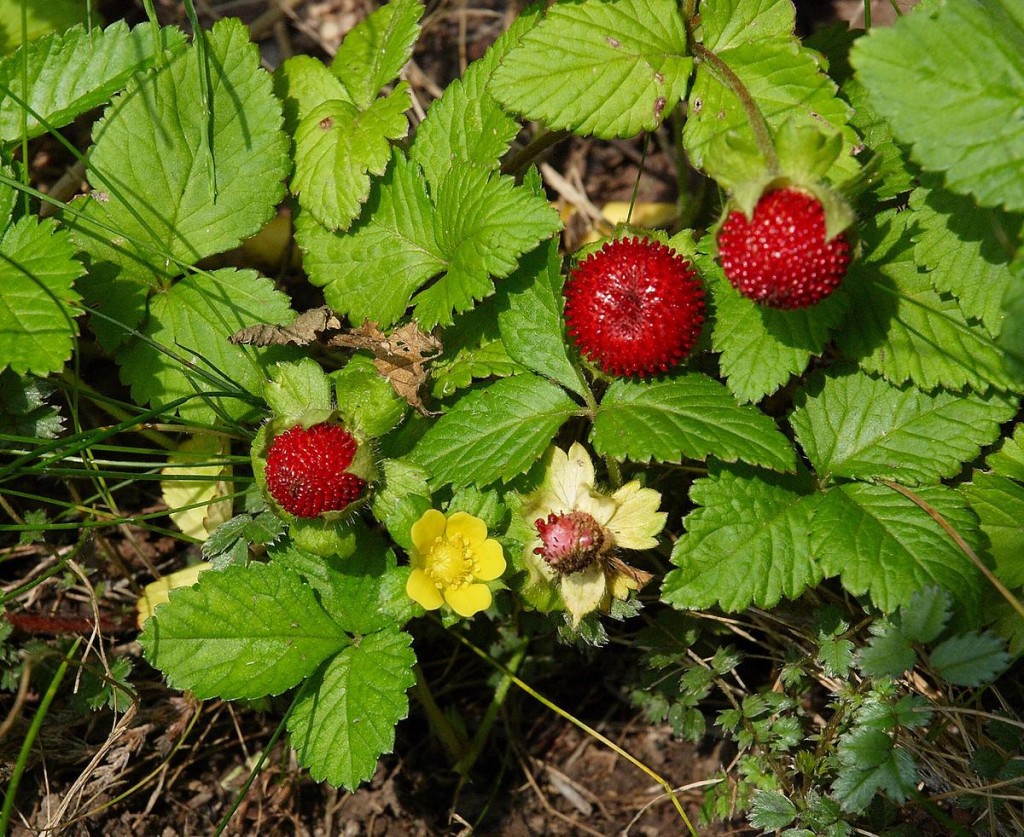 No recorded image of specimen.
No recorded image of specimen.Indian strawberry
Potentilla indica
Potentilla indica (formerly Duchesnea indica), also called mock strawberry, Gurbir, Indian strawberry or false strawberry, has foliage and an aggregate accessory fruit similar to true strawberry, though it is classified in a different genus, and has yellow flowers, unlike the white or slightly pink flowers of true strawberries. It is native to eastern and southern Asia, but has been introduced to many other areas as an ornamental plant. It has been naturalized in many regions, including...
Link No recorded image of specimen.
No recorded image of specimen.Asplenium ruta-muraria cryptolepis
Asplenium ruta-muraria cryptolepis
Asplenium ruta-muraria is a species in the genus Asplenium which contains between 389 and 1572 species and belongs to the family of the Aspleniaceae (Spleenwort Family).
Link No recorded image of specimen.
No recorded image of specimen.Asplenium platyneuron platyneuron
Asplenium platyneuron platyneuron
Asplenium platyneuron (syn. Asplenium ebeneum), commonly known as ebony spleenwort or brownstem spleenwort, is a fern native to North America east of the Rocky Mountains. It takes its common name from its dark, reddish-brown, glossy stipe and rachis (leaf stalk and midrib), which support a once-divided, pinnate leaf.
Link No recorded image of specimen.
No recorded image of specimen.Asplenium platyneuron incisum
Asplenium platyneuron incisum
Asplenium platyneuron (syn. Asplenium ebeneum), commonly known as ebony spleenwort or brownstem spleenwort, is a fern native to North America east of the Rocky Mountains. It takes its common name from its dark, reddish-brown, glossy stipe and rachis (leaf stalk and midrib), which support a once-divided, pinnate leaf.
Link No recorded image of specimen.
No recorded image of specimen.Lobelia nuttallii
Lobelia nuttallii
Lobelia nuttallii is a species of flowering plant in the bellflower family commonly called Nuttall's lobelia. It is native to the Eastern United States where it is found in coastal areas, with disjunct populations in the Southern Blue Ridge Mountains and the Cumberland Plateau.
Link No recorded image of specimen.
No recorded image of specimen.Southern twayblade
Neottia bifolia
Neottia bifolia (syn. Listera australis), the southern twayblade, is a species of terrestrial orchid found in eastern North America.
Link No recorded image of specimen.
No recorded image of specimen.princess pine
Dendrolycopodium obscurum
Lycopodium obscurum, commonly called ground pine or princess pine, is a species of clubmoss in the family Lycopodiaceae. It is a close relative of other treelike Lycopodium such as L. dendroideum and L. hickeyi. It is distributed from Alabama to the east coast of the United States, and north into Canada. Newfoundland is in the northeast corner of its range. It grows in the understory of temperate coniferous and deciduous forests, where it is involved in...
Link No recorded image of specimen.
No recorded image of specimen.NABTRI
Nabalus trifoliolatus
Three-leaved rattlesnake-root is distributed throughout New England, but in alpine areas of northern New England it can have a dwarfed form with deeply divided leaves. This form is probably just an adaptation to the harsher environmental conditions rather than a separate species or variety. The very young basal leaves and the newly-emerged shoot are edible.
Link No recorded image of specimen.
No recorded image of specimen.VIOPAL
Viola × palmata
Wood violet has very variable leaves, being more or less lobed, with indentations of varying depths. This is a species of drier sites, forests, rocky slopes and fields.
Link No recorded image of specimen.
No recorded image of specimen.early saxifrage
Micranthes virginiensis
Early Saxifrage is a native wildflower that is found in dry woods and rocky fields. In North Carolina, it is a common sight in the Piedmont and Mountains, however rarely found on the Coastal Plains.
Link No recorded image of specimen.
No recorded image of specimen.cinnamon fern
Osmundastrum cinnamomeum
Osmundastrum cinnamomeum, the cinnamon fern, is a species of eusporangiate fern in the family Osmundaceae. It is native to the Americas and eastern Asia, growing in swamps, bogs and moist woodlands.
Link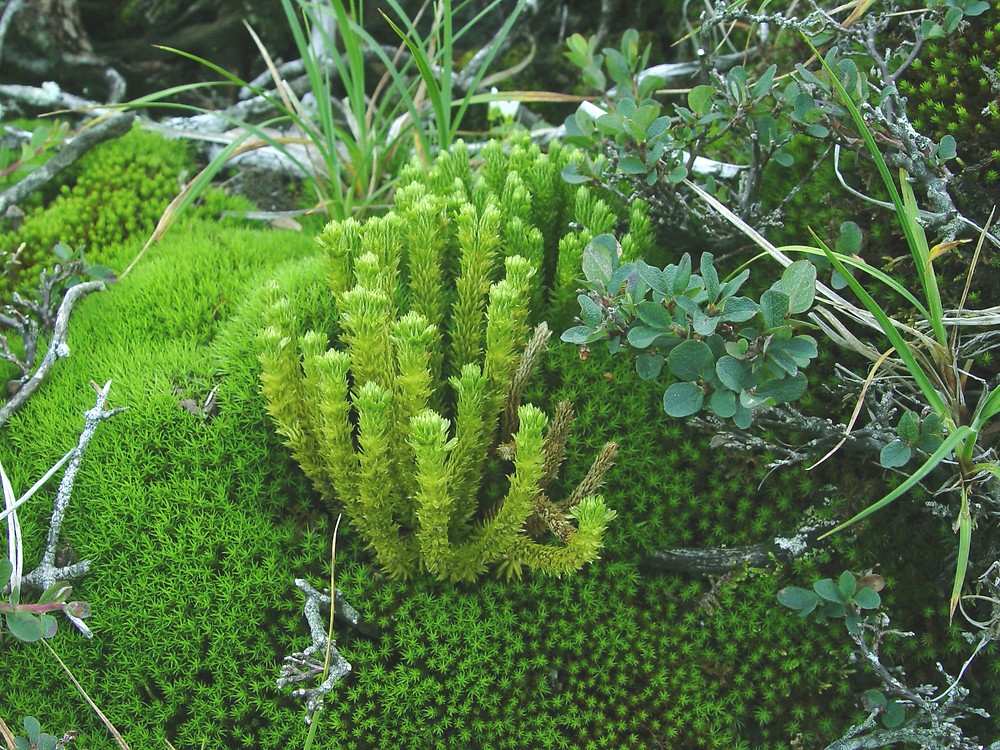 No recorded image of specimen.
No recorded image of specimen.mountain firmoss
Huperzia appressa
Mountain firmoss is found on exposed, windswept cliffs, ridges and summits, usually at high elevations, but occasionally at low elevations on the Maine coast. It sometimes forms hybrids with other firmosses (Huperzia).
Link No recorded image of specimen.
No recorded image of specimen.Arundinaria gigantea tecta
Arundinaria gigantea tecta
Arundinaria gigantea is a species of bamboo known as giant cane (not to be confused with Arundo donax) and river cane. It is endemic to the south-central and southeastern United States as far west as Oklahoma and Texas and as far north as New York.
Link No recorded image of specimen.
No recorded image of specimen.Bull Tongue Arrowhead
Sagittaria lancifolia media
The genus gets its name from the arrow-shaped leaves of some species, though the leaves of S. lancifolia ssp. media are long and narrow. The flowers are quite distinctive, with 3 green sepals and 3 white petals, 1/4-1/2 inch long.
Link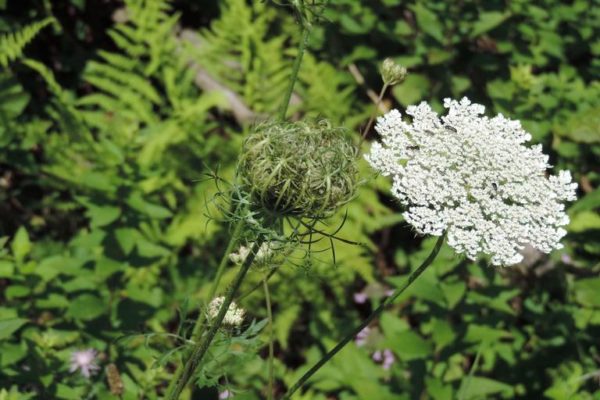 No recorded image of specimen.
No recorded image of specimen.Queen Anne's lace
Daucus carota carota
Daucus carota, whose common names include wild carrot, bird's nest, bishop's lace, and Queen Anne's lace (North America), is a flowering plant in the family Apiaceae. It is native to temperate regions of the Old World and was naturalized in the New World.
Link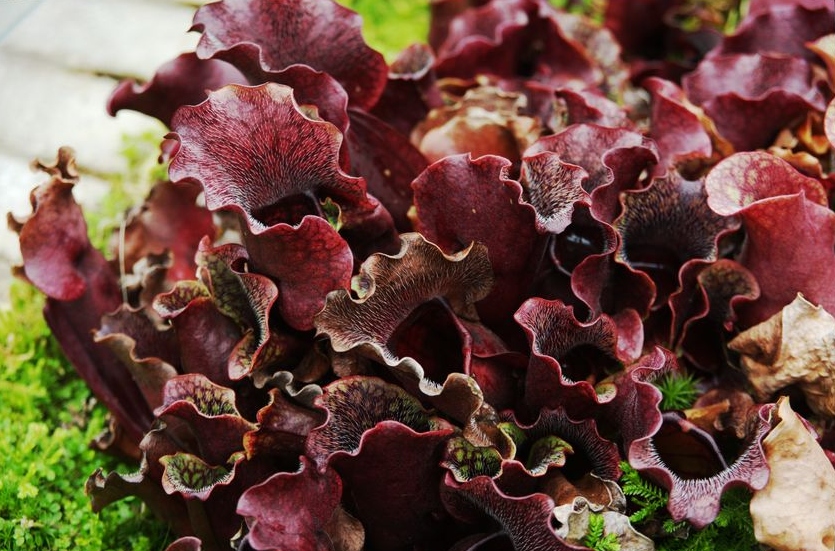 No recorded image of specimen.
No recorded image of specimen.Purple Pitcherplant
Sarracenia purpurea montana
Sarracenia purpurea ssp. venosa var. montana “Greenville, SC” is a variety of Southern Purple Pitcher Plant native to the Appalachian mountains of the Carolinas.
Link No recorded image of specimen.
No recorded image of specimen.Mountain Sweet Pitcher Plant
Sarracenia rubra jonesii
Strict adherence to the cultural needs of this species are essential in order to grow this plant well. In residential areas, it is best grown in the consistently moist soils of an artificial bog garden. The bog garden should be prepared in advance of planting.
Link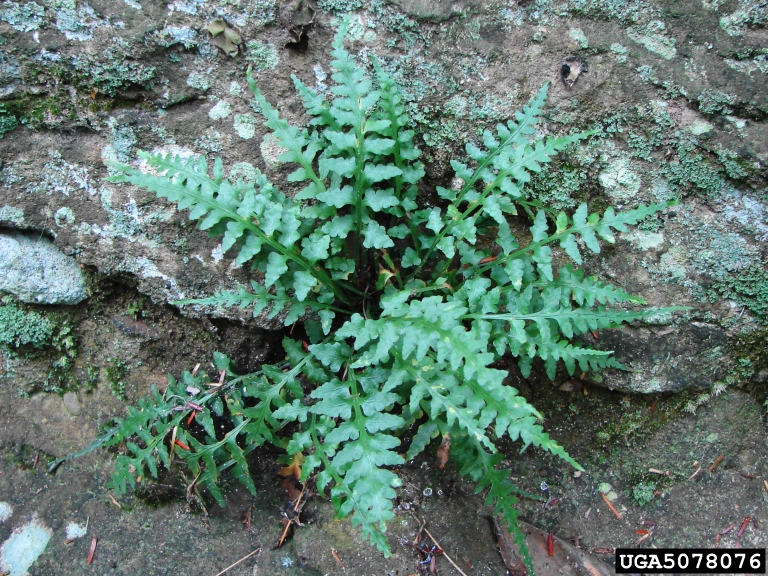 No recorded image of specimen.
No recorded image of specimen.Trudell's spleenwort
Asplenium × trudellii
Asplenium × trudellii, commonly known as Trudell's spleenwort, is a rare hybrid fern of the eastern United States, first described in 1925. It is formed by the crossing of mountain spleenwort (A. montanum) with lobed spleenwort (A. pinnatifidum). Trudell's spleenwort is intermediate in form between its two parents, and is generally found near them, growing on exposed outcrops of acidic rock. While A. × trudellii is triploid and sterile, there is some evidence that it can occasionally reproduce apogamously.
Link No recorded image of specimen.
No recorded image of specimen.Turkey beard
Xerophyllum asphodeloides
Xerophyllum asphodeloides is a species of flowering plant in the Melanthiaceae known by the common names turkey beard, eastern turkey beard, beartongue, grass-leaved helonias, and mountain asphodel. It is native to the eastern United States, where it occurs in the Appalachian Mountains and the Pine Barrens of New Jersey.
Link No recorded image of specimen.
No recorded image of specimen.Vernonia glauca
Vernonia glauca
Appalachian Ironweed is a native wildflower in the daisy family that is typically found along stream banks and in low-lying areas in rich wooded areas. Numerous sources indicate that this plant is rare.
Link No recorded image of specimen.
No recorded image of specimen.Perfoliate Bellwort
Uvularia perfoliata
Perfoliate Bellwort is a native perennial wildflower found in moist to somewhat dry hardwood forests along the eastern coast of North America. This variety is becoming increasingly rare in some of its native territory.
Link No recorded image of specimen.
No recorded image of specimen.Thuidium delicatulum
Thuidium delicatulum
This pleurocarpous perennial moss forms a loose mat of evergreen compound leaves that are green to yellowish green and either double-pinnate or triple-pinnate. The central stems of these leaves are up to 8.5 cm.
Link No recorded image of specimen.
No recorded image of specimen.Rhiannon's aster
Symphyotrichum rhiannon
Symphyotrichum rhiannon is a species of flowering plant endemic to a serpentine barren in western North Carolina. It has been given the vernacular Rhiannon's aster and is also known as Buck Creek aster.
Link No recorded image of specimen.
No recorded image of specimen.twist-leaf goldenrod
Solidago tortifolia
Solidago tortifolia, commonly known as twistleaf goldenrod, is a North American species of goldenrod in the sunflower family. It is found in the eastern and southern United States, primarily along the Atlantic and Gulf coastal plain from Maryland to Texas.
Link No recorded image of specimen.
No recorded image of specimen.Blue Ridge goldenrod
Solidago spithamaea
Solidago spithamaea is a species of flowering plant in the aster family known by the common name Blue Ridge goldenrod. It is native to a very small region around the border between North Carolina and Tennessee in the United States. Its three remaining populations are threatened by the loss and degradation of its habitat. It is a federally listed threatened species of the United States.
Link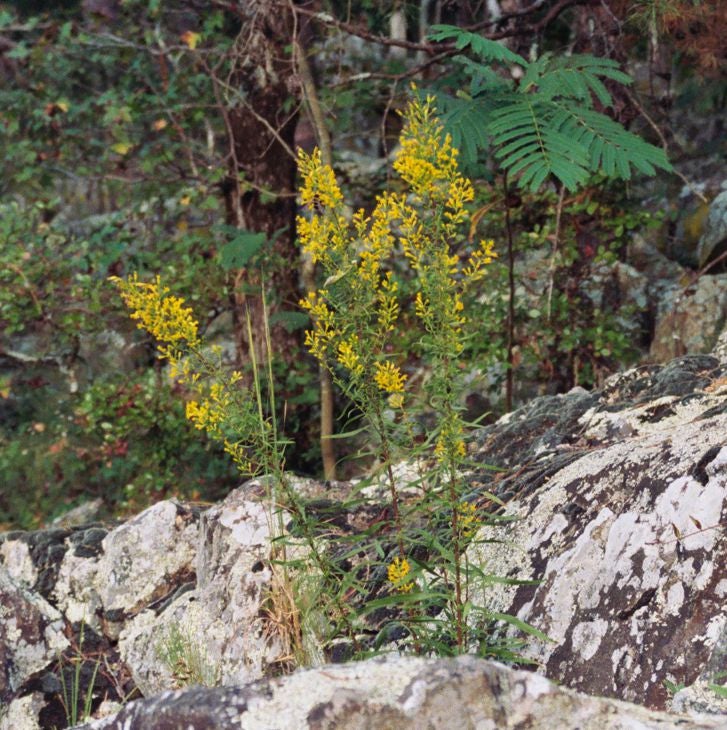 No recorded image of specimen.
No recorded image of specimen.Solidago plumosa
Solidago plumosa
Solidago plumosa is a rare species of goldenrod known by the common names Yadkin River goldenrod,plumed goldenrod, and plumose goldenrod. It is endemic to North Carolina in the United States, where it grows only on the banks of the Yadkin River. There is only one known population. It is a candidate for federal protection.
Link No recorded image of specimen.
No recorded image of specimen.Leavenworth's goldenrod
Solidago leavenworthii
A North American species of herbaceous perennial plants of the family Asteraceae. It is native to southeastern United States from Florida north to Mississippi and the Carolinas.
Link No recorded image of specimen.
No recorded image of specimen.pine-barren goldenrod
Solidago fistulosa
A plant species native to low-lying coastal areas of eastern North America. It grows in every state bordering on the Gulf of Mexico or on the Atlantic Ocean from Louisiana to New Jersey.
Link No recorded image of specimen.
No recorded image of specimen.Dixie goldenrod
Solidago brachyphylla
Native to the southeastern U.S. It has 0–(1–2) rays and leaves that are densely and finely puberulent (Semple & Cook 2006 FNA). The upper stem leaves can be very small.
Link No recorded image of specimen.
No recorded image of specimen.laurel-leaf greenbrier
Smilax laurifolia
Smilax laurifolia is a species of flowering plant in the greenbrier family known by the common names laurelleaf greenbrier, bamboo vine, and blaspheme vine. It is native to the southeastern United States, where it occurs along the Gulf and Atlantic coastal plains inland to Arkansas and Tennessee. It also occurs in Cuba and the Bahamas.
Link No recorded image of specimen.
No recorded image of specimen.Saxifraga michauxii
Saxifraga michauxii
Native to southeastern North America, Saxifraga michauxii grows up to 18 inches (45 cm) tall, has coarse leaves, and white petals of slightly different sizes, spotted with yellow.
Link No recorded image of specimen.
No recorded image of specimen.Sarracenia oreophila
Sarracenia oreophila
Sarracenia oreophila, also known as the Green Pitcher Plant, is a carnivorous plant in the genus Sarracenia. It has highly modified leaves in the form of pitchers that act as pitfall traps for prey. The narrow pitcher leaves are tapered tubes that rise up to 75 centimetres from the ground, with a mouth 6 to 10 centimetres in circumference Like all the Sarracenia, it is native to the New World. S. oreophila is the most endangered
Link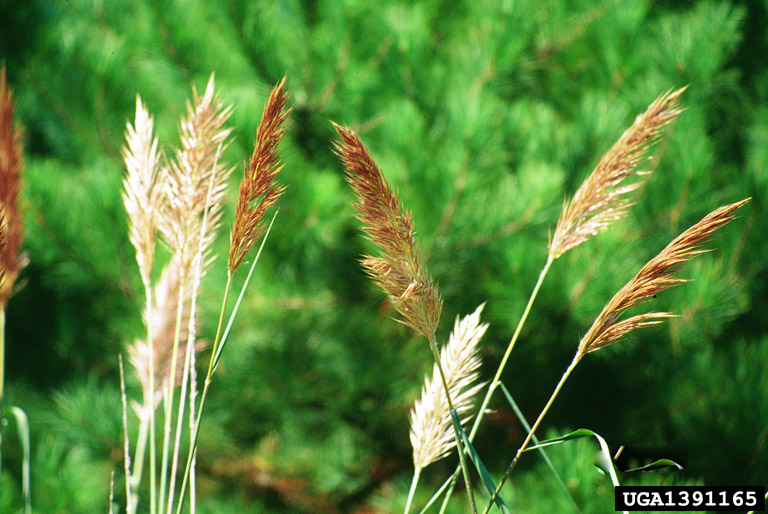 No recorded image of specimen.
No recorded image of specimen.Saccharum contortum
Saccharum contortum
Shortbeard Plumegrass is a tall, clumping grass. Whitish-yellow flower plumes bloom July-October. Fall color is an attractive bronze. This southern United States native can be used in foundations or borders, or as a specimen plant in your yard.
Link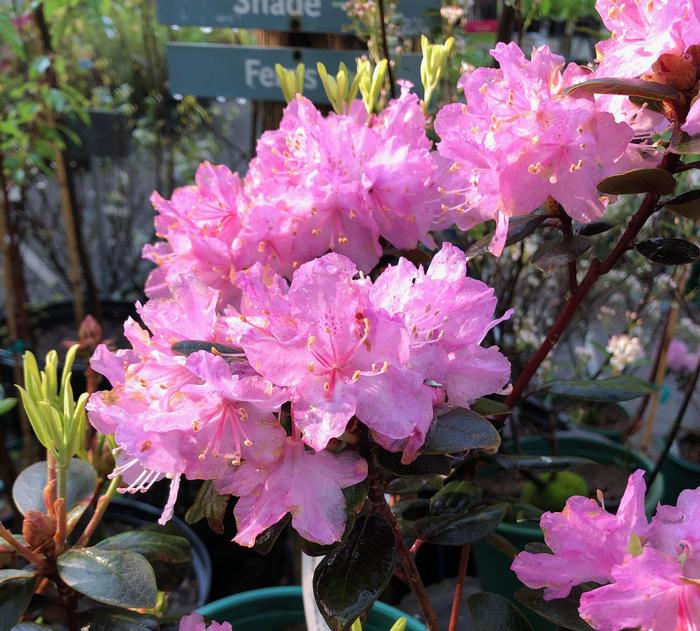 No recorded image of specimen.
No recorded image of specimen.Rhododendron minus
Rhododendron minus
Rhododendron minus (Piedmont rhododendron) is a rhododendron species native to Tennessee, North Carolina, Georgia, and Alabama.
Link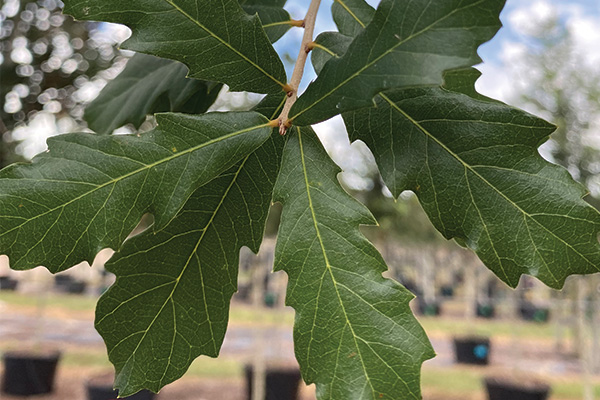 No recorded image of specimen.
No recorded image of specimen.Bluff Oak
Quercus austrina
Quercus austrina, the Bluff Oak, is an oak species that is endemic to the southeastern United States. It can grow to a height of 45 to 60 feet with a spread of 35 to 50 feet. This often misidentified species tends to grow in wet habitats, such as on river bluffs, river bottoms, and flatwoods, and generally over basic substrate, such as mafic rocks, shell, or calcareous sediment.
Link No recorded image of specimen.
No recorded image of specimen.Piptochaetium avenaceum
Piptochaetium avenaceum
Stipa avenacea - renamed Piptochaetium avenaceum, and commonly called black oat grass or blackseed needle grass, is a perennial bunchgrass native to Eastern North America. It is a member of the grass family Poaceae.
Link No recorded image of specimen.
No recorded image of specimen.Pinguicula pumila
Pinguicula pumila
Small butterwort grows 6-8 inches tall above a basal rosette of broad, succulent leaves. The few leaves form a rosette at the base of the plant and have a sticky surface that captures small insects.
Link No recorded image of specimen.
No recorded image of specimen.Pinguicula lutea
Pinguicula lutea
Pinguicula lutea, commonly known as the yellow butterwort, is a species of warm-temperate carnivorous plant. It belongs to a member of Lentibulariaceae family. It grows in savannas and sandy bog areas of the Southeastern United States.P. lutea’s flower is usually in a bright yellow or a straw-yellow color and very rare in white color. Like all the insectivorous plants of the genus Pinguicula, P. lutea traps small insects by using specialized glands on the surface of...
Link No recorded image of specimen.
No recorded image of specimen.Pinguicula caerulea
Pinguicula caerulea
Violet butterwort grows in a moist, sandy environment such as bogs and ditches. It is not recommended as a landscape plant.
Link No recorded image of specimen.
No recorded image of specimen.piedmont fameflower
Phemeranthus piedmontanus
Phemeranthus (fameflower) is a genus of flowering plants in the miner's lettuce family, Montiaceae, native to the Americas.
Link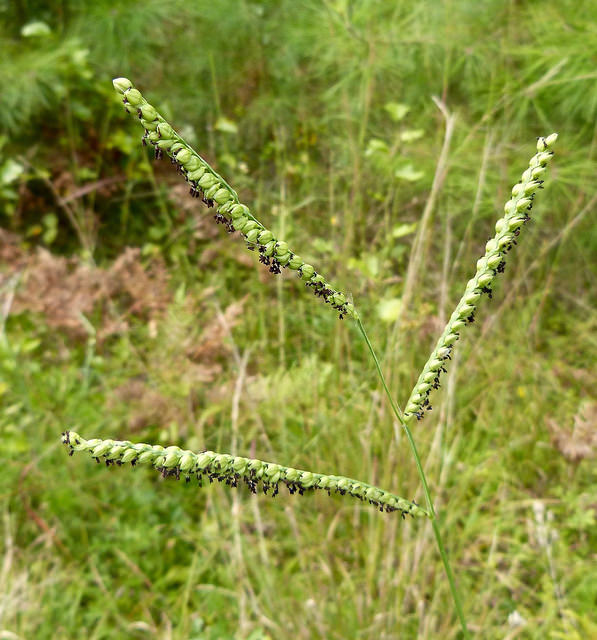 No recorded image of specimen.
No recorded image of specimen.Paspalum floridanum
Paspalum floridanum
Paspalum floridanum is a species of grass known by the common name Florida paspalum. It is native to the eastern United States.
Link No recorded image of specimen.
No recorded image of specimen.Mountain Wood-sorrel
Oxalis montana
Oxalis montana is a species of flowering plant in the Oxalidaceae known by the common names mountain woodsorrel, wood shamrock, sours and white woodsorrel. It may also be called common woodsorrel, though this name also applies to its close relative, Oxalis acetosella. This species is native to eastern North America, including eastern Canada and the north-central and eastern United States.
Link No recorded image of specimen.
No recorded image of specimen.bulbous adder's-tongue
Ophioglossum crotalophoroides
Bulbous adder's tongue (O. crotalophoroides), in Missouri, is at the extreme northwest edge of its overall range. In our state it is known from only one location in Oregon County. It occurs in disturbed lawns.
Link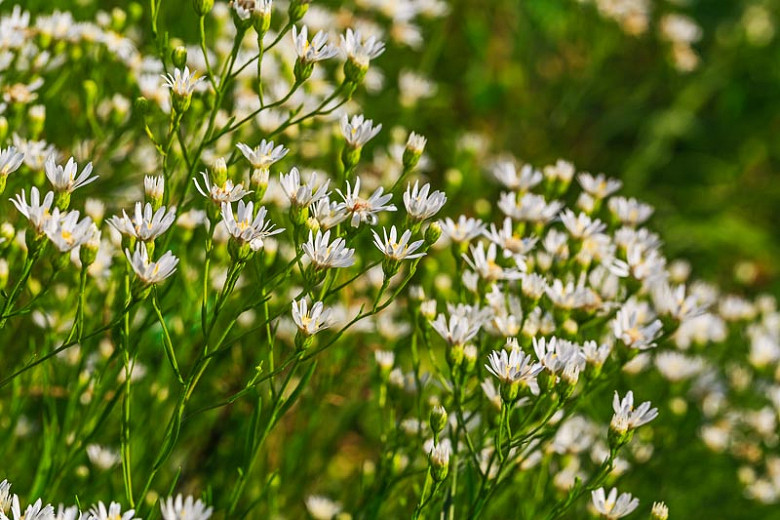 No recorded image of specimen.
No recorded image of specimen.Oligoneuron album
Oligoneuron album
This is a herbaceous perennial plant, producing one or more erect stems that are ¾–2' tall. Each stem is light green to reddish purple, terete, and unbranched below the inflorescence; it is usually glabrous below and sparsely short-hairy above. Several alternate leaves occur along each stem, becoming significantly smaller in size as they ascend.
Link No recorded image of specimen.
No recorded image of specimen.Monotropa hypopithys
Monotropa hypopithys
Monotropa hypopitys, also known as Dutchman's pipe, yellow bird's-nest or pinesap, is a herbaceous perennial plant, formerly classified in the families Monotropaceae or Pyrolaceae, but now included within the subfamily Monotropoideae of the blueberry family (Ericaceae). It is native to temperate regions of the Northern Hemisphere, and is scarce or rare in many areas. However, it is still the most widespread member of the subfamily. While currently included in the genus Monotropa, recent genetic evidence strongly...
Link No recorded image of specimen.
No recorded image of specimen.Greenland stitchwort
Minuartia groenlandica
Minuartia groenlandica, the Greenland stitchwort or mountain stitchwort, is a rare perennial which grows low to the ground in clumps linked together at the bottom. It has three to five pairs of leaves in a linear opposite pattern along the length of the slender stem. The main stem breaks into one to thirty cymes which each flower separately. The flowers are white and arise five to ten centimeters above the thick foliage. The white flower petals...
Link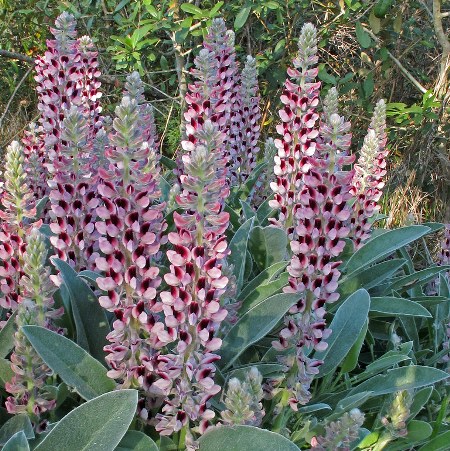 No recorded image of specimen.
No recorded image of specimen.Lupinus villosus
Lupinus villosus
Lady Lupine is found only in extremely well-drained sandy habitats, most commonly in open sandhills in SE USA. It is difficult to grow commercially due to its deep taproot and its dislike of being moved. The native southern lupines are becoming endangered in some areas.
Link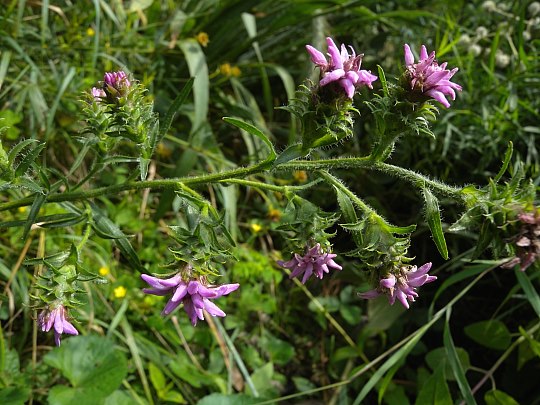 No recorded image of specimen.
No recorded image of specimen.Scaly Blazing Star
Liatris squarrosa
Scaly gayfeather or blazing star may have one or several stems, each erect, unbranched, and 10-24 in. tall. Its leaves are not as numerous as in most other Liatris species. Tuft-like, red-violet flower heads are few and openly spaced in a spike along the top of the stem.
Link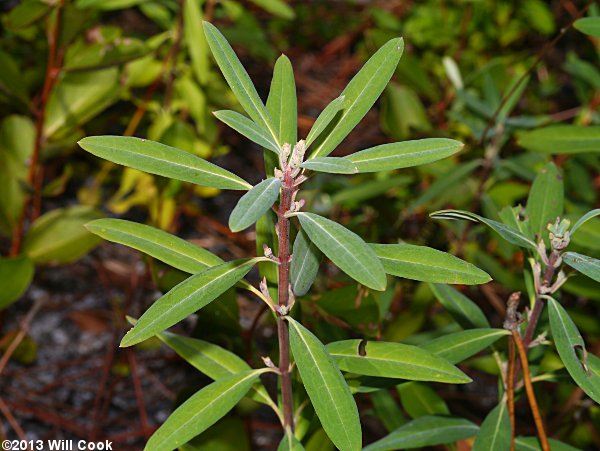 No recorded image of specimen.
No recorded image of specimen.Kalmia carolina
Kalmia carolina
Small, compact, tufted, evergreen shrub native to the southeastern United States, specifically in moist pinelands, swamps, and occasionally rocky areas at a high elevation. This plant can also be found in southeastern North Carolina.
Link No recorded image of specimen.
No recorded image of specimen.Ilex montana
Ilex montana
Ilex montana, the Mountain Winterberry (or "Mountain Holly" which is more typically Ilex mucronata), is a species of holly native to the Eastern United States, ranging along the Appalachian Mountains from southeast Massachusetts to northeast Alabama and northern Georgia. Synonyms include Ilex monticola.
Link No recorded image of specimen.
No recorded image of specimen.Thyme-leaved Bluets
Houstonia serpyllifolia
A species of plant in the coffee family (Rubiaceae). It is native to the eastern United States, where it is found in the central and southern Appalachian Mountains.
Link No recorded image of specimen.
No recorded image of specimen.Blue Ridge gentian
Gentiana austromontana
Gentiana austromontana (Appalachian Gentian) is a 1–2 ft (30–61 cm) tall flowering plant in the Gentianaceae family. It is native to the southern Appalachians of West Virginia, Virginia, North Carolina and Tennessee. Very similar to Gentiana clausa, it has paired, lanceolate leaves, usually on unbranched stalks, and blue or purple blooms which remain closed or nearly closed. It flowers from late August to October.
Link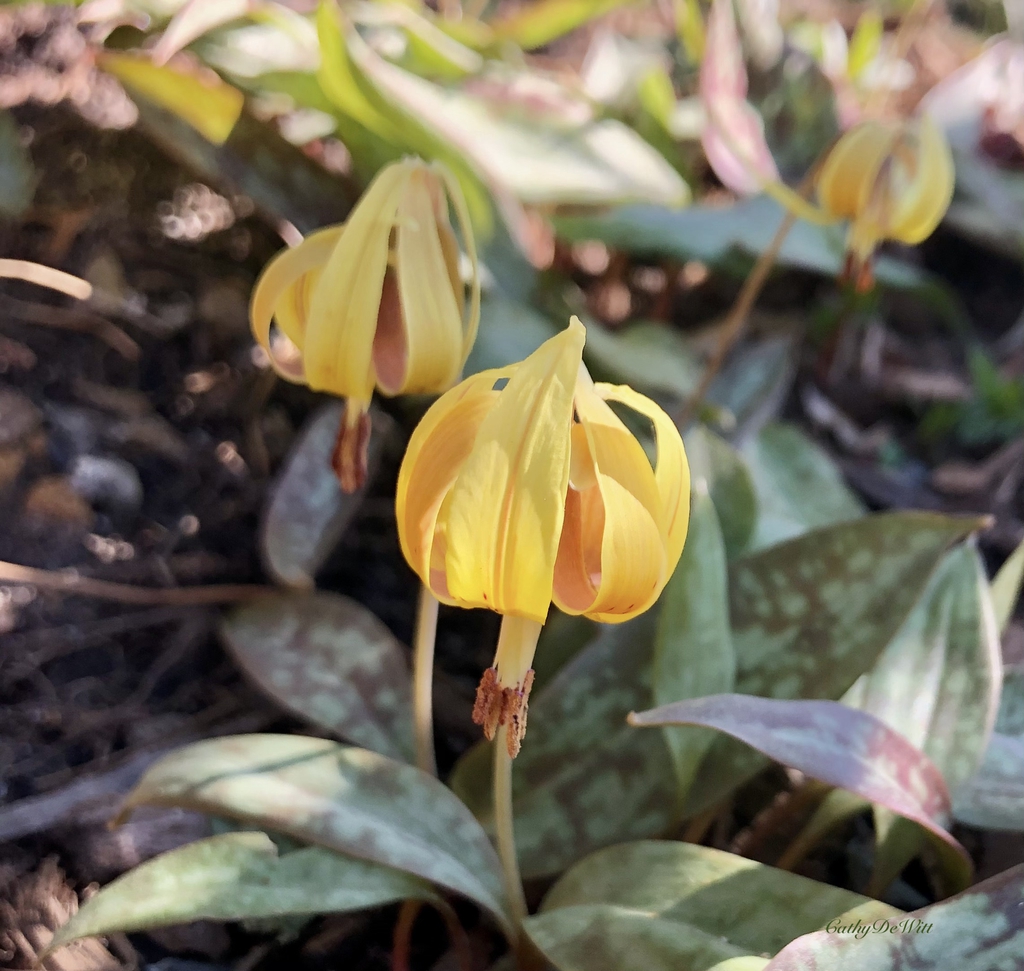 No recorded image of specimen.
No recorded image of specimen.Erythronium umbilicatum
Erythronium umbilicatum
Erythronium umbilicatum (Dimpled trout lily) is a species of flowering plant in the lily family. It is native to the Southeastern United States, primarily in the Piedmont and Southern Appalachian areas. This species is a spring ephemeral and its preferred habitat is forests. There are two described varieties, one with stolons present and the other with stolons absent.
Link No recorded image of specimen.
No recorded image of specimen.Pink Sundew
Drosera capillaris
Drosera capillaris, the pink or spathulate-leaved sundew (not to be confused with Drosera spatulata), is a small carnivorous plant of the family Droseraceae in the genus Drosera. They are frequently found in wet pine flatwoods and bogs of the southeastern United States, ranging from eastern Texas east to Florida and north to Virginia, as well as in some areas of the Caribbean. They thrive in moist, acidic soil.
Link No recorded image of specimen.
No recorded image of specimen.Small Sundew
Drosera brevifolia
Drosera brevifolia (the dwarf, small or red sundew), is a carnivorous plant of the family Droseraceae and is the smallest sundew species native to the United States. This species differs considerably from the pink sundew, Drosera capillaris, by its wedge-shaped leaves, and distinctly deeper red to reddish purple color, noticeable when side by side with D. capillaris.
Link No recorded image of specimen.
No recorded image of specimen.Coreopsis auriculata
Coreopsis auriculata
Coreopsis auriculata (Mouse-ear Tickseed) is a plant species of the genus coreopsis in Asteraceae. Coreopsis species are commonly called Tickseeds. This species is perennial growing from 10–30 cm (4-12 inches) tall and sometimes to 60+ cm (30 inches). Pants with rounded yellow colored flowers bloom in spring and early summer. They are often stoloniferous, forming long spreading colonies by way of short stolons produced after flowering. Plants produce both basal and cauline leaves; the foliage occupy 1/4–1/2...
Link No recorded image of specimen.
No recorded image of specimen.CORODO
Corallorhiza odontorhiza
Corallorhiza odontorhiza, commonly called Fall Coral Root, is widely distributed across eastern and central Canada and the United States, from Quebec to Texas. Like other members of its genus, it is myco-heterotrophic: it primarily obtains nutrients not from photosynthesis but through mycorrhizal fungi.
Link No recorded image of specimen.
No recorded image of specimen.Spring Cress
Cardamine bulbosa
The Bulbous Cress, Bittercress, or Spring Cress (Cardamine bulbosa) is a perennial plant native to eastern North America. This plant grows in moist soils of bottomland woods and wet meadows.
Link No recorded image of specimen.
No recorded image of specimen.Bryoandersonia illecebra
Bryoandersonia illecebra
This evergreen perennial moss has a pleurocarpous growth habit, forming either a sprawling mat of overlapping leafy stems, or a low cushion of ascending to erect leafy stems. These leafy stems are up to 4 cm. (1½'') long, irregularly branched, more or less terete, and blunt-tipped.
Link No recorded image of specimen.
No recorded image of specimen.BLECIL
Blephilia ciliata
Blephilia ciliata is an herbaceous perennial of the mint family Lamiaceae native to eastern North America. It is commonly called downy wood mint. Other common names include downy pagoda plant, sunny woodmint and Ohio horsemint.
Link No recorded image of specimen.
No recorded image of specimen.Angelica triquinata
Angelica triquinata
Filmy Angelica most commonly grows in the open areas of woods and meadows of the central to southern Appalachian mountains preferring moderate to high elevations.
Link No recorded image of specimen.
No recorded image of specimen.Amorpha schwerinii
Amorpha schwerinii
Piedmont Indigo-bush is a rare shrub that grows in the western Piedmont region of North Carolina, generally in rocky woodlands.
Link No recorded image of specimen.
No recorded image of specimen.Agalinis obtusifolia
Agalinis obtusifolia
Agalinis obtusifolia is a light yellow-green annual plant that is parasitic to the roots of grasses and other herbs. The stems are slender, stiff, and branched from the upper half and grow between 30 - 90 cm tall. The leaves are opposite, narrowly linear to filiform growing 5 - 15 mm long and 1 mm wide, rough to the touch (scabrous) and sometimes will have tufts on the shoots.
Link No recorded image of specimen.
No recorded image of specimen.Okra
Abelmoschus esculentus
Okra (US /ˈoʊkrə/ or UK /ˈɒkrə/; Abelmoschus esculentus Moench), known in many English-speaking countries as lady's fingers, bhindi or gumbo, is a flowering plant in the mallow family. It is valued for its edible green seed pods. The geographical origin of okra is disputed, with supporters of South Asian, Ethiopian and West African origins. The plant is cultivated in tropical, subtropical and warm temperate regions around the world.
Link No recorded image of specimen.
No recorded image of specimen.houttuynia
Houttuynia cordata
Houttuynia cordata (simplified Chinese: 鱼腥草; traditional Chinese: 魚腥草; pinyin: yúxīng cǎo; literally "fishy-smell herb"; Japanese: Dokudami 蕺草, literally "poison blocking plant"; Vietnamese: giấp cá; pak kao tong (ຜັກຄາວທອງ) in Lao; Korean: 약모밀. In Manipur, a Northeastern Indian State, its known as toningkok. In English, it is known as lizard tail, chameleon plant, heartleaf, fishwort and bishop's weed. It is one of two species in the genus Houttuynia, is a flowering plant native to Japan, Korea, southern...
Link No recorded image of specimen.
No recorded image of specimen.blackberry lily
Belamcanda chinensis
Iris domestica (blackberry lily, leopard flower, leopard lily is an ornamental plant in the Iridaceae family. In 2005, based on molecular DNA sequence evidence, Belamcanda chinensis, the sole species in the genus Belamcanda, was transferred to the genus Iris and renamed Iris domestica. Other synonyms are Belamcanda punctata Moench, Gemmingia chinensis (L.) Kuntze, Iris chinensis Curtis, Ixia chinensis L., Morea chinensis, and Pardanthus chinensis (L.) Ker Gawl.)
Link No recorded image of specimen.
No recorded image of specimen.Virginia Ground Cherry
Physalis virginiana
A rhizomatous perennial with a deeply buried stem base. It is found mostly in eastern North America as far west as Wyoming.
Link No recorded image of specimen.
No recorded image of specimen.greater fringed gentian
Gentianopsis crinita
Gentianopsis crinita (sometimes called "Fringed Gentian" or "Blue Gentian") is a biennial herbaceous species, native to eastern USA and eastern Canada. Fringed gentian flowers open on sunny days, but generally remain closed on cloudy days. Individual plants live for only one or two years.
Link